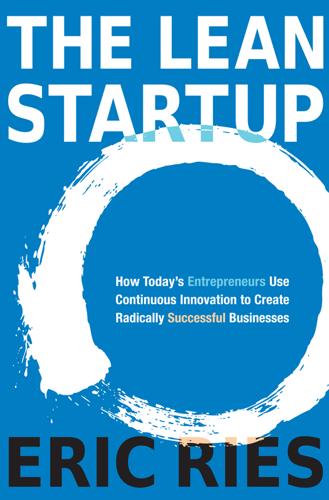
The Lean Startup: How Today’s Entrepreneurs Use Continuous Innovation to Create Radically Successful Businesses
by
Eric Ries
Published 13 Sep 2011
Once it is running, the process repeats, shifting into higher and higher gears. Once clear on these leap-of-faith assumptions, the first step is to enter the Build phase as quickly as possible with a minimum viable product (MVP). The MVP is that version of the product that enables a full turn of the Build-Measure-Learn loop with a minimum amount of effort and the least amount of development time. The minimum viable product lacks many features that may prove essential later on. However, in some ways, creating a MVP requires extra work: we must be able to measure its impact. For example, it is inadequate to build a prototype that is evaluated solely for internal quality by engineers and designers.
…
It totally blew us away.” Today, Dropbox is one of Silicon Valley’s hottest companies, rumored to be worth more than $1 billion.5 In this case, the video was the minimum viable product. The MVP validated Drew’s leap-of-faith assumption that customers wanted the product he was developing not because they said so in a focus group or because of a hopeful analogy to another business, but because they actually signed up. THE CONCIERGE MINIMUM VIABLE PRODUCT Consider another kind of MVP technique: the concierge MVP. To understand how this technique works, meet Manuel Rosso, the CEO of an Austin, Texas–based startup called Food on the Table.
…
We had been so successful with our early efforts that we were ignoring the principles behind them. As a result, we missed the need to pivot even as it stared us in the face. We had built an organization that excelled at the kinds of activities described in earlier chapters: creating minimum viable products to test new ideas and running experiments to tune the engine of growth. Before we had begun to enjoy success, many people had advised against our “low-quality” minimum viable product and experimental approach, urging us to slow down. They wanted us to do things right and focus on quality instead of speed. We ignored that advice, mostly because we wanted to claim the advantages of speed.
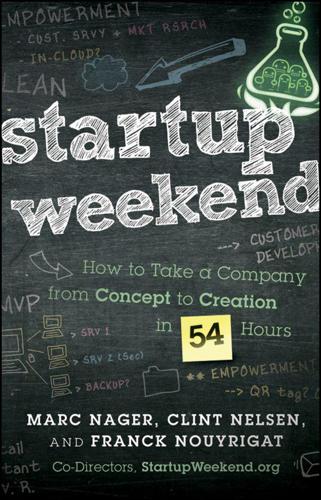
Startup Weekend: How to Take a Company From Concept to Creation in 54 Hours
by
Marc Nager
,
Clint Nelsen
and
Franck Nouyrigat
Published 8 Nov 2011
See Team building Pivoting Plane.ly Product/service differentiation Project management agile development lean methods scrum board traditional method waterfall method Proof of concept. See Minimum viable product (proof of concept) Protobakes Prototypes. See Minimum viable product (proof of concept) Quotify Reiser, Shane Relationship building Release early, release often concept Research on entrepreneurship Rethink Water Ries, Eric Ringwald, Alexis Risk and entrepreneurship low-risk setting of Startup Weekend and minimum viable product concept Risk capital Risk mitigation Rockwell, Dan Roman vote (thumbs-up/thumbs-down) Roqbot Rossi, Jon Scaling leap Schramm, Carl Scrum Scrum boards.
…
This is what business theorists call a proof of concept. We encourage people to go one step further at Startup Weekend and build what's called a minimum viable product. Rather than just having a website that shows people what the product will do once it's built, go ahead and build a stripped down version of it. As one of the pioneers of this theory, Eric Ries, explained in an interview with Venture Hacks, “The idea of minimum viable product is useful because you can basically say: Our vision is to build a product that solves this core problem for customers . . . we think that . . . early adopters [of] this kind of solution will be the most forgiving.
…
Dan Rockwell, who has launched a number of startups and participated in a Startup Weekend in Columbus, Ohio, offers a concise way of thinking about minimum viable products: They should be products with the minimum value, the minimum desired experience, the minimum cash lost, the minimum BS to endure—and the maximum momentum to burn. Rockwell's company, Big Kitty Labs, produces something called Protobakes, which are “functional code examples” of something you want to make at the level of a minimum viable product. He sees these protobakes as a means of facilitating conversation between you and your team, as well as your customers and your investors.
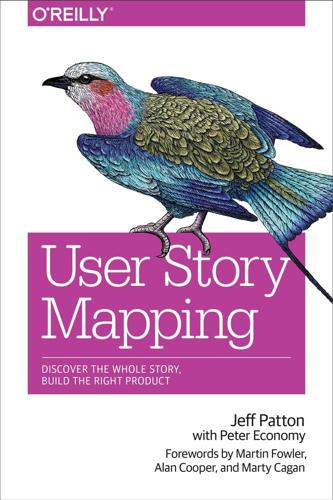
User Story Mapping: Discover the Whole Story, Build the Right Product
by
Jeff Patton
and
Peter Economy
Published 14 Apr 2014
Minimize and Plan, Discovery Activities, Discussions, and Artifacts prioritization, The secret to prioritization minimum viable product (see MVP) minimum viable product experiment (MVPe), Validated Learning minimum viable solution (see MVS) minimum, defining, Why We Argue So Much About MVP Mona Lisa strategy, Build to Learn, Breaking Down a Big Cake morning map exercise, Do Try This at Home, or at Work MVP (minimum viable product) differing definitions of, Why We Argue So Much About MVP iterating until viable, Iterate Until Viable minimizng your experiments, Really Minimize Your Experiments MVPe (minimum viable product experiment), Validated Learning MVS (minimum viable solution), Why We Argue So Much About MVP, Size Always Matters, Using Discovery for Validated Learning discovering, Discover a Minimum Viable Solution N narrative flow, Mapping Helps Big Groups Build Shared Understanding, 2.
…
Slice Out Tasks That Help You Reach a Specific Outcome outcomes, focusing on, There’s Always Too Much output, Software Isn’t the Point minimizing, Build Less overhand, Review as a Team P patterns, Telling the Whole Story personas, sketching, Sketch simple personas Pigneur, Yves, Dig Deeper, Trash It, or Think About It planning development cycle planning recipe, Split and Thin development strategy, Stories Are Actually Like Asteroids evaluating in team review, Review as a Team for next development cycle, Stories Are Actually Like Asteroids sprint or iteration planning, Sprint or Iteration Planning? planning to build less, Plan to Build Less creating smaller experiments and prototypes, The New MVP Isn’t a Product at All! definition of MVP (minimum viable product), Why We Argue So Much About MVP finding a smaller viable release, This Is Magic—Really, It Is prioritizing outcomes rather than features, Don’t Prioritize Features—Prioritize Outcomes slicing out a minimum viable product release, Slice Out a Minimum Viable Product Release slicing out a release roadmap, Slice Out a Release Roadmap predictably unpredictables, Plan to Build Piece by Piece prioritization prioritizing outcomes, Slice Out a Release Roadmap prioritizing user stories in the backlog, The Map Is Just the Beginning secret of, The secret to prioritization problem, validating, Validate the Problem product backlog, 1.
…
At each step he did or built something with the explicit goal of learning something. What Eric did is the heart of the build-measure-learn loop described by Eric Ries. And by Ries’s definition, each release that Eric shipped was a minimum viable product. But you can see that it wasn’t viable in the eyes of his target customers and users—at least, not yet. For that reason, I like referring to Ries’s MVP as a minimum viable product experiment—or MVPe for short. It’s the smallest thing I could build to learn something. And what I learn is driving toward understanding what’s really viable in the eyes of my target customers and users.
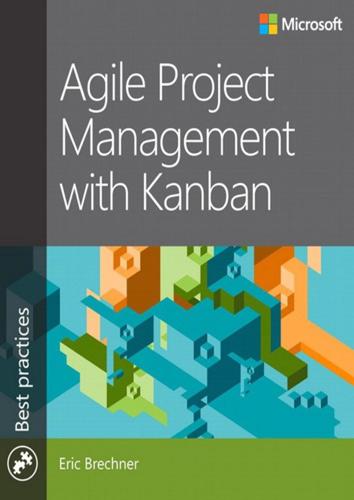
Agile Project Management With Kanban
by
Eric Brechner
Published 25 Feb 2015
Not as much coordination with other teams was required. I provide more detail about experiences like these in Chapter 7, “Using Kanban within large organizations.” * * * Establish your minimum viable product (MVP) You can skip this section if you run a continuously deployed service or an operational team and all you need to do is order incoming work. Otherwise, you are probably involved in a product release (first release or an update) and need to determine your minimum viable product (MVP). For the purposes of ordering your backlog, your MVP is the set of work items (note cards) in your backlog that must be completed before release.
…
• Include an indicator on each card for the source of the idea (helps with ordering and recognition of the cards). Place the cards into one of four buckets: must-have and wouldn’t release without (pri 0: the minimum viable product), should have (pri 1), like to have (pri 2) and nice ideas (pri 3). Order a subset of the cards in the Backlog column of your signboard, selecting first from the minimum viable product and then augmenting with related or additional lower-priority cards as needed. As needed, let your leadership, customers, and internal and external partners know when to expect results. • Estimate the number of tasks needed to complete work items, preferably using a Wideband Delphi method such as planning poker
…
See product improvement incidents, defined, 102 introduction to proposal letter, 1–2 inventory (Lean waste category), 131 J Jones, Daniel T., 135 K kaizen, 110 Kanban capturing high-level routine, 7–8 checklist of actions to take, 24, 136 defining done, 12–14 expanding to new areas of business and life, 117–120 improving beyond, 128–135 mixing Agile and Lean with, 120–123 redecorating wall, 8–10 running daily standup, 14–17 setting limit on chaos, 10–12 troubleshooting problems, 17–23 why it works, 123–128 Xbox switch to, 4–5 Kanban (Anderson), 118 Kessler, Robert, 122 L Ladas, Corey, 57, 118 large organizations checklist of actions to take, 100 communicating status up and out, 91–93 dealing with late or unstable dependencies, 93–97 deriving backlog from upfront planning, 86–87 fitting into milestones, 90–91 introducing Kanban within, 85 ordering work based on dependencies, 87–90 staying productive during stabilization, 98 Xbox examples, 89–90, 93, 97 Larrey, Dominique-Jean, 107 late dependencies, 94–95 lead time, 31 Lean-Agile Acceptance Test-Driven Development (Pugh), 122 Lean practice global optimization and, 132–133 improving beyond Kanban, 129–132 Kaizen and, 110 mixing with Kanban, 120–123 Lean Software Development (Poppendieck and Poppendieck), 132 Lean Thinking (Womack and Jones), 135 LiquidPlanner, 87 Little’s Law, 31, 123–124 M management consent checklist of actions to take, 5 importance of, 1 moving forward, 4–5 proposal letter to obtain, 1–4 Managing the Design Factory (Reinertsen), 124 McGrath and MacMillan Options Portfolio, 89–90 Microsoft Azure, 80 Microsoft Project, 87 milestones adapting from Waterfall, 10, 39–40, 43, 49, 55 large organizations and, 85–86, 91, 95 minimalism, 123–124 minimum viable product (MVP), 27–28, 87 Modig, Niklas, 135 motion (Lean waste category), 131 MVP (minimum viable product), 27–28, 87 Myth of Multitasking, The (Crenshaw), 124 Mythical Man-Month, The (Brooks), 34 N new work, troubleshooting problems, 21–22 North, Dan, 122 O one-piece flow, 124 Options Portfolio (McGrath and MacMillan), 89–90 ordering work about, 28–29 based on dependencies, 87–90 organizations, large.
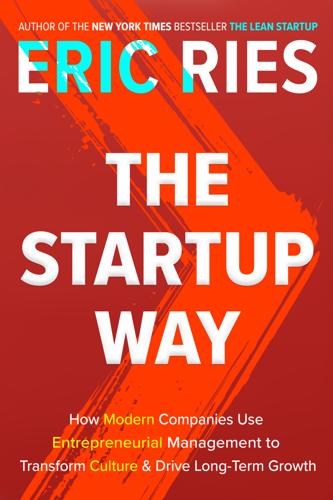
The Startup Way: Making Entrepreneurship a Fundamental Discipline of Every Enterprise
by
Eric Ries
Published 15 Mar 2017
As Mark Zuckerberg says in his famous manifesto (in Facebook’s S-1 filing): “Try to build the best services over the long term by quickly releasing and learning from smaller iterations rather than [by] trying to get everything right all at once….We have the words Done is better than perfect painted on our walls to remind ourselves to always keep shipping.”5 DETERMINING VALUE AND GROWTH HYPOTHESES 2. Minimum Viable Product (MVP) Once we’ve gathered predictions and assumptions and articulated value and growth hypotheses, the next step is to build an experiment called a minimum viable product or MVP. An MVP is an early version of a new product that allows a team to collect the maximum amount of validated learning (learning based on real data gathering rather than guesses about the future) about customers.
…
It’s uncomfortable to put an imperfect, messy product out there, especially when we are enthralled with the big vision for our project, as most entrepreneurs are. “The thing about Minimum Viable Products is that while you decide what’s Minimum, the customer decides if it’s Viable,” writes David Bland, a consultant and early Lean Startup evangelist. “You’ll need to lead your team out of the trough of sorrow after they experience this despair for the first time. Minimum Viable Products are optimized for learning, not for scaling. This is one of the hardest things to convey to people who’ve spent their lives building to build, not building to learn.”7 TYPES OF MVPs MVPs come in all sizes and flavors.
…
But how often is this ideal organization actually what they end up creating? Over the past several years, founders and CEOs who had been early adopters of the Lean Startup method began to get back in touch with me. In the early days, they had been excited about the parts of Lean Startup that are about getting started quickly, like minimum viable product and pivot. But they hadn’t been as focused on the parts that are, frankly, a little more boring: the science of management and the discipline of accounting. Now that their companies had scaled to hundreds, thousands, or, in some cases, tens of thousands of employees, they realized they had to find a way to hold on to their entrepreneurial way of working, even as they put traditional management tools in place, did more forecasting, and moved toward a traditional-looking org chart.
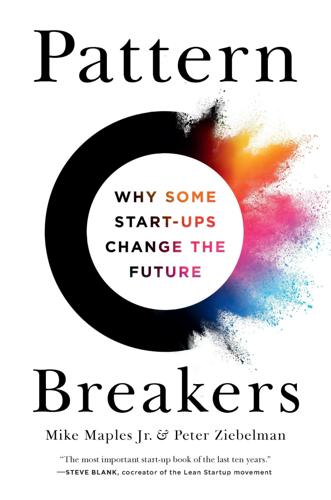
Pattern Breakers: Why Some Start-Ups Change the Future
by
Mike Maples
and
Peter Ziebelman
Published 8 Jul 2024
The Chegg team immediately shifted gears and started to build their minimum viable product with extraordinary urgency. It was an immediate hit with students, and the company’s growth was nothing short of meteoric. In just five short years after testing the Textbookflix prototype, Chegg was moving an astonishing $200 million in textbooks. That was in 2012. Chegg then cemented its reputation with an initial public offering in 2013. THE IMPLEMENTATION PROTOTYPE IS NOT THE MVP People sometimes confuse an implementation prototype with a minimum viable product (MVP), but the two are different. An MVP is the most stripped-down version of a product that can still be released and used by early adopters.
…
From what I’ve observed, once start-up founders raise money and set about building a minimum viable product, they mentally and emotionally reach a point of no return. It’s not helpful for them to learn after the fact that the forces underlying their start-up idea are not powerful enough to realize a big-enough upside. They are already fully committed. Many jump too quickly to raise funding before confirming the power of their insight and identifying an initial set of passionate early believers. Having obtained the money, they hire developers, rent their first office space, and start developing a minimum viable product. And why not, since this is the standard recipe?
…
Peter said my perspective was strikingly different from that of other guest lecturers. Most speakers emphasized entrepreneurial best practices. They explained how to identify attractive market sectors, how to interview customers to detect their key pain points, and how to create or build a minimum viable product with a defined business model that solves the problem. In theory, following these best practices seemed logical. Yet looking closer at the founders who tried them, I saw a familiar tale. Despite their meticulous efforts and strong commitment, many failed to achieve their desired impact. The reason?
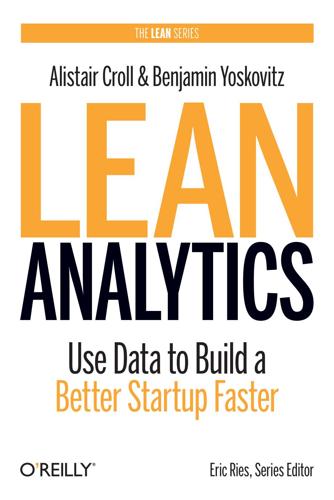
Lean Analytics: Use Data to Build a Better Startup Faster
by
Alistair Croll
and
Benjamin Yoskovitz
Published 1 Mar 2013
And hosts will sign up for professional photography as a service.” This is where the founders’ gut instincts came in: they had a sense that professional photography would help their business. But rather than implementing it outright, they built a Concierge Minimum Viable Product (MVP) to quickly test their hypothesis. What Is a Concierge MVP? The Minimum Viable Product is the smallest thing you can build that will create the value you’ve promised to your market. But nowhere in that definition does it say how much of that offering has to be real. If you’re considering building a ride-sharing service, for example, you can try to connect drivers and passengers the old-fashioned way: by hand.
…
, What Makes a Good Metric? rules of thumb for, How to Keep Score vanity versus real/actionable, What Makes a Good Metric?, What Makes a Good Metric? Microsoft, Skunk Works for Intrapreneurs, Revenue Within the Ecosystem Mine That Data consultancy, Model One: E-commerce Minimum Viable Product (see MVP (Minimum Viable Product)) minimum viable vision, The Minimum Viable Vision MMO (massively multiplayer online) games, Eric Ries’s Engines of Growth, Model Three: Free Mobile App mobile apps model about, Model Three: Free Mobile App advertising in, Model Three: Free Mobile App, Visualizing the Mobile App Business DuProprio/Comfree case study, What DuProprio Watches key takeaways, Visualizing the Mobile App Business measuring metrics in, Model Three: Free Mobile App, Mobile Downloads monetization in, Model Three: Free Mobile App, Average Revenue Per User, Visualizing the Mobile App Business Sincerely Inc. case study, Mobile Customer Acquisition Cost stage comparisons in, Model + Stage Drives the Metric You Track user flow depicted through, Visualizing the Mobile App Business wrinkles in, Visualizing the Mobile App Business mobile download size metric, Mobile Download Size mobile downloads metric, Mobile Downloads mode (e-commerce model), What Mode of E-commerce Are You?
…
Alistair and Ben have written a much-needed dose of reality, and entrepreneurs who ignore this data-driven approach do so at their peril.” —Brad Feld—Managing Director, Foundry Group; Co-founder, TechStars; and Creator, the Startup Revolution series of books “Lean Analytics will take you from Minimum Viable Product to Maximally Valuable Product. It’s as useful for product managers at today’s multi-billion dollar companies as it is for entrepreneurs who aspire to build those of tomorrow.” —John Stormer—Senior Director of New Products, Salesforce “The bad news is, there will always be people out there smarter than you.

Without Their Permission: How the 21st Century Will Be Made, Not Managed
by
Alexis Ohanian
Published 30 Sep 2013
It was a rather unexciting list of search results, just like any other travel search engine you’ve ever used, except this one didn’t have any polish. I wasn’t too impressed. But Steve said they’d been noodling on some different ways to present the data that were going to be infinitely more user-friendly. I trusted him, but I went back to Brooklyn thinking he and Adam were a long way from that minimum viable product (or as the cool kids say, “MVP”). In my mind, searching for flights was already a solved problem. It worked well enough to allow me to sit at my laptop and, if I had enough tabs open, not bother my dad about finding me a good flight to San Francisco. But Adam knew it could be so much better.
…
The similarity was unintentional—it came from my subconscious—but it just goes to show that we’re all standing on the shoulders of giants (or giant rodents). How to Win Deals and Influence Industry Titans Totally unlike reddit, hipmunk has zero user-generated content; the value of the site comes from how we display the content provided by airlines and hotels. Back then, we just needed flight information (remember, minimum viable product), but we couldn’t just scrape the data off airlines’ websites (scraping is essentially sending software to “read” and copy content from other websites). Most important, we wanted to get paid every time someone bought a flight that we helped him or her find on hipmunk. This was a great lesson: as the saying goes, we wanted to be “near our users’ wallets.”
…
Having industry experience is not only invaluable for building a great product or service, it also shows investors the dedication a successful founder needs to have. Business First, Then Business Cards Once you’ve identified a real problem and done your research, start trying to solve it in the simplest way possible. Your first version should certainly embarrass you. “Minimum viable product” has become a startup cliché for good reason. Just build the simplest possible solution to a problem, and launch it. This probably won’t take as long as you might think. Each round of Y Combinator was designed to be three months long because Paul wanted it to be a summer program, so students could decide to take time off from school if their company was going well.
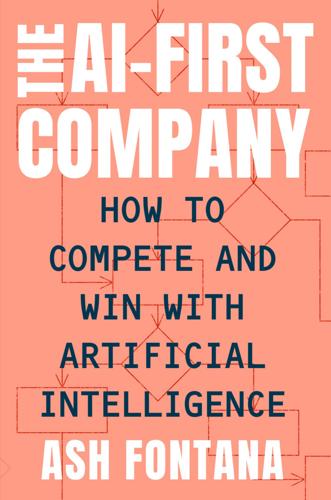
The AI-First Company
by
Ash Fontana
Published 4 May 2021
The performance and function of the prediction in the customer’s workflow are less important than the accuracy and reliability. The table below illustrates the different milestones. MILESTONES FOR LEAN START-UPS VERSUS LEAN AIs lean start-up lean ai Minimum viable product Minimum predictive accuracy Product features Model features Output a calculation Output a prediction Performant Accurate Functional Reliable Product usage Prediction acceptance Launch a company Launch an AI-First product Building a lean start-up is different from building a Lean AI.
…
BUILDING LEAN START-UPS VERSUS LEAN AIs step lean start-up lean ai 0 Understand the customer’s problem 1 Determine product features Determine model features 2 Build a product Generate a prediction 3 Show a demo Show a report 4 Receive qualitative feedback Receive quantitative feedback 5 Build more features Collect more data 6 Relaunch the product Retrain the model 7 Measure usage Measure accuracy 8 Launch a company Launch an AI-First product PUTting MVPs Aside The lean start-up popularized the concept of a minimum viable product, or MVP: the minimum set of product features a customer needs for a product to be useful. The reason to define this set of features is to optimize the amount of time spent building a product before showing and selling it to customers. That is, to not waste time building things that customers are unlikely to want.
…
GLOSSARY A/B TEST: testing for user preferences by randomly showing two different variants of a product (i.e., variants A and B) to different groups of users; also known as a split test ACYCLIC: jumping between points rather than going through points in the same pattern each time AGENT-BASED MODEL: model that generates the actions of agents and interactions with other agents given the agent’s properties, incentives, and environmental constraints AGGREGATION THEORY: the theory that new entrants in a market can aggregate existing quantities in that market; for example, data points, to create new and valuable products APPLICATION PROGRAMMING INTERFACE: a set of functions that allows applications to communicate with other applications, either to use a feature or fetch data; effectively, a structured way for software to communicate with other pieces of software AREA UNDERNEATH THE CURVE (AUC): the integral of the ROC curve BLOCKCHAIN: decentralized and distributed public ledger of transactions CLUSTERING TOOL: using unsupervised machine learning to group similar objects COMPLEMENTARY DATA: new data that increases the value of existing data CONCAVE PAYOFF: decreasing dividends from using a product CONCEPT DRIFT: when the idea behind the subject of a prediction changes based on observations CONSUMER APP: software application primarily used by individuals (rather than businesses) CONTRIBUTION MARGIN: average price per unit minus labor and quality control costs associated with that unit CONVEX PAYOFF: increasing dividends from using a product COST LEADERSHIP: a form of competitive advantage that comes from having the lowest cost of production with respect to competitors in a given industry CRYPTOGRAPHY: writing and solving codes CRYPTO TOKEN: representation of an asset that is kept on a blockchain CUSTOMER RELATIONSHIP MANAGEMENT SOFTWARE: software that stores and manipulates data about customers CUSTOMER SUPPORT AGENT: employee that is paid to respond to customer support tickets CUSTOMER SUPPORT TICKET: message from user of a product requesting help in using that product CYBERNETICS: the science of control and communication in machines and living things DATA: facts and statistics collected together for reference or analysis DATA ANALYST: person who sets up dashboards, visualizes data, and interprets model outputs DATA DRIFT: (1) when the distribution on which a prediction is based changes such that it no longer represents observed reality; or (2) when the data on which a prediction is based changes such that some of it is no longer available or properly formed DATA ENGINEER: person who cleans data, creates automated data management tools, maintains the data catalogue, consolidates data assets, incorporates new data sources, maintains data pipelines, sets up links to external data sources, and more DATA EXHAUST: data collected when users perform operations in an application, for example clicking buttons and changing values DATA INFRASTRUCTURE ENGINEER: person who chooses the right database, sets up databases, moves data between them, and manages infrastructure cost and more DATA LABELING: adding a piece of information to a piece of data DATA LEARNING EFFECT: the automatic compounding of information DATA LEARNING LOOP: the endogenous and continuous generation of proprietary data from an intelligent system that provides the basis of the next generation of that intelligent system DATA NETWORK: set of data that is built by a group of otherwise unrelated entities, rather than a single entity DATA NETWORK EFFECT: the increase in marginal benefit that comes from adding a new data point to an existing collection of data; the marginal benefit is defined in terms of informational value DATA PRODUCT MANAGER: person who incorporates the data needs of the model with the usability intentions of the product designers and preferences of users in order to prioritize product features that collect proprietary data DATA SCIENTIST: person who sets up and runs data science experiments DATA STEWARD: person responsible for ensuring compliance to data storage standards DEEP LEARNING: artificial neural network with multiple layers DEFENSIBILITY: the relative ability to protect a source of income; for example, an income-generating asset DIFFERENTIAL PRIVACY: system for sharing datasets without revealing the individual data points DIMENSIONALITY REDUCTION: transforming data (using a method such as principal component analysis) to reduce the measures associated with each data point DISRUPTION THEORY: the theory that new entrants in a market can appropriate customers from incumbent suppliers by selling a specialized product to a niche segment of customers at a fraction of the cost of the incumbent’s product DRIFT: when a model’s concept or data diverges from reality EDGE: connections between nodes; also called a link or a line ENTERPRISE RESOURCE PLANNING PRODUCT: software that collects and thus contains data about product inventory ENTRY-LEVEL DATA NETWORK EFFECT: the compounding marginal benefit that comes from adding new data to an existing collection of data; the marginal benefit is defined in terms of informational value to the model computed over that data EPOCH: completed pass of the entire training dataset by the machine learning model ETL (EXTRACT, TRANSFORM, AND LOAD): the three, main steps in moving data from one place to another EXAMPLE: a single input and output pair from which a machine learning model learns FEATURE: set of mathematical functions that are fed data to output a prediction FEDERATED LEARNING: method for training machine learning models across different computers without exchanging data between those computers FIRST-MOVER: company that collects scarce assets, builds technological leadership, and creates switching costs in a market by virtue of entering that market before other companies GAUSSIAN MIXTURE MODEL: probabilistic model representing a subset within a set, assuming a normal distribution, without requiring the observed data match the subset GLOBAL, MULTIUSER MODEL: model that makes predictions about something common to all customers of a given company; this is generally trained on data aggregated across all customers GRADIENT BOOSTED TREE: method for producing a decision tree in multiple stages according to a loss function GRAPH: mathematical structure made up of nodes and edges that is typically used to model interactions between objects HEURISTICS: knowledge acquired by doing HISTOGRAM: diagram consisting of rectangles whose area is proportional to the frequency of a variable and whose width is equal to the class interval HORIZONTAL INTEGRATION: the combination in one product of multiple industry-specific functions normally operated by separate products HUMAN-IN-THE-LOOP SYSTEM: machine learning system that requires human input to generate an output HYPERPARAMETER: parameter that is used to control the machine learning model HYPERTEXT MARKUP LANGUAGE: programming language specifically for writing documents to be displayed in a web browser INCUMBENT: existing market leader INDEPENDENT SOFTWARE VENDOR: a company that publishes software INFORMATION: data that resolves uncertainty for the receiver INSOURCING: finding the resources to complete a task within an existing organization such that it’s not necessary to contract new resources to complete that task INTEGRATOR: software company that builds tools to connect data sources, normalizes data across sources, and updates connections as these sources change INTELLIGENT APPLICATION: application that runs machine learning algorithms over data to make predictions or decisions INTERACTIVE MACHINE LEARNING: machine learning models that collect data from a user, put that data into a model, present the model output back to the user, and so on K-MEANS: unsupervised machine learning method to group objects in a number of clusters based on the cluster with the center point, or average, that’s closest to the object LABEL: the output of a machine learning system based on learning from examples LAYER: aggregation of neurons; layers can be connected to other layers LEAN AI: the process of building a small but complete and accurate AI to solve a specific problem LEARNING EFFECT: the process through which knowledge accumulation leads to an economic benefit LEGACY APPLICATION: application already in use LOSS: the quantum of how right or wrong a model was in making a given prediction LOSS FUNCTION: mathematical function that determines the degree to which the output of a model is incorrect MACHINE LEARNING: computable algorithms that automatically improve with the addition of novel data MACHINE LEARNING ENGINEER: person who implements, trains, monitors, and fixes machine learning models MACHINE LEARNING MANAGEMENT LOOP: automated system for continuous incorporation of real-world data into machine learning models MACHINE LEARNING RESEARCHER: person who sets up and runs machine learning experiments MARKETING SEGMENTATION: dividing customers into groups based on similarity MINIMUM VIABLE PRODUCT: the minimum set of product features that a customer needs for a product to be useful MOAT: accumulation of assets that form a barrier to other parties that may reduce the income-generating potential of those assets MONITORING: observing a product to ensure both quality and reliability NETWORK EFFECT: the increase in marginal benefit that comes from adding a new node to an existing collection of nodes; the marginal benefit is defined in terms of utility to the user of the collection NEURAL NETWORK: collection of nodes that are connected to each other such that they can transmit signals to each other across the edges of the network, with the strength of the signal depending on the weights on each node and edge NEXT-LEVEL DATA NETWORK EFFECT: the compounding marginal benefit that comes from adding new data to an existing collection of data; the marginal benefit is defined in terms of the rate of automatic data creation by the model computed over that data NODE: discrete part of a network that can receive, process, and send signals; also called a vertex or a point OPTICAL CHARACTER RECOGNITION SOFTWARE: software that turns images into machine-readable text PARETO OPTIMAL SOLUTION: achieving 80 percent of the optimal solution for 20 percent of the work PARTIAL PLOT: graph that shows the effect of adding an incremental variable to a function PERSONALLY IDENTIFIABLE INFORMATION: information that can be linked to a real person PERTURBATION: deliberately modifying an object, e.g., data POWER GENERATOR: user that contributes an inordinate amount of data with respect to other users POWER USER: user that uses a product an inordinate amount with respect to other users PRECISION: the number of relevant data points retrieved by the model over the total number of data points PREDICTION USABILITY THRESHOLD: the point at which a prediction becomes useful to a customer PRICING: product usage; for example, hours spent using a product PROOF OF CONCEPT: a project jointly conducted by potential customers and vendors of a software product to prove the value theoretically provided by that, in practice PROPRIETARY INFORMATION: information that is owned by a specific entity and not in the public domain QUERY LANGUAGE: programming language used to retrieve data from a database RANDOM FOREST: method for analyzing data that constructs multiple decision trees and outputs the class of objects that occurs most often among all the objects or the average prediction across all of the decision trees RECALL: the number of relevant data points retrieved by the model over the total number of relevant data points RECEIVER OPERATING CHARACTERISTIC (ROC) CURVE: plot that shows how well the model performed at different discrimination thresholds, e.g., true and false positive rates RECURSION: repeated application of a method REINFORCEMENT LEARNING: ML that learns from objectives RETURN ON INVESTMENT (ROI): calculated by dividing the return from using an asset by the investment in that asset ROI-BASED PRICING: pricing that is directly correlated with a rate of return on an investment SCALE EFFECT: the increase in marginal benefit or reduction in marginal cost that comes from having a higher quantity of the asset or capability that generates the benefit SCATTER PLOT: graph in which the values of two variables are plotted along two axes, the pattern of the resulting points revealing any correlation present SCHEME: the form common to all values in a particular table in a database SECURE MULTIPARTY COMPUTATION: method for jointly computing inputs while keeping the inputs private from the participating computers SENSOR NETWORK: a collection of devices that collect data from the real world SIMULATION: method that generates inputs to put through a program to see if that program fails to execute or generates inaccurate outputs SOFTWARE-AS-A-SERVICE (SAAS): method of delivering software online and licensing that software on a subscription basis SOFTWARE DEVELOPMENT KIT: tool made by software developers to allow other software developers to build on top of or alongside their software STATISTICAL PROCESS CONTROL: quality control process that is based on statistical methods SUPERVISED MACHINE LEARNING: ML that learns from inputs given outputs SUPPORT VECTOR MACHINE: supervised learning model that classifies new data points by category SYSTEM OF ENGAGEMENT: system that actively (e.g., through user input) aggregates information about a particular business function SYSTEM OF RECORD: system that passively aggregates information about a particular business function SYSTEMS INTEGRATOR: an entity that installs new software systems such that they function with customers’ existing systems TALENT LOOP: the compounding competitive advantage in attracting high-quality personnel that comes from having more high quality data than competitors TRANSACTIONAL PRICING: pricing that is directly correlated with the quantum of units transacted through a product, for example, number of processed data points or computation cycles UNSUPERVISED MACHINE LEARNING: ML that learns from inputs without outputs USAGE-BASED PRICING: pricing that is directly correlated with the quantum of product usage; for example, hours of time spent using a product USER INTERFACE: set of objects that exist in software that are manipulated to initiate a function in that software VALUE CHAIN: the process by which a company adds value to an asset; for example, adding value to a data point by processing that data into information, and that information into a prediction VARIABLE IMPORTANCE PLOT: list of the most important variables in a function in terms of their contribution to a given prediction, or predictive power VERSIONING: keeping a copy of every form of a model, program, or dataset VERTICAL INTEGRATION: the combination in one company of multiple stages of production (or points on a value chain) normally operated by separate firms VERTICAL PRODUCT: software product that is only relevant to users in a particular industry WATERFALL CHART: data visualization that shows the result of adding or subtracting sequential values in adjacent columns WEB CRAWLER: program that systematically queries webpages or other documents on the internet; strips out the unnecessary content on those pages, such as formatting; grabs salient data, puts it in a standard document format (e.g., JSON), and puts it in a private data repository WEIGHT: the relative measure of strength ascribed to nodes and edges in a network; this can be automatically or manually adjusted after learning of a more optimal weight WORKFLOW APPLICATION: software that takes a sequence of things that someone does in the real world and puts those steps into an interface that allows for data input at each step ZETTABYTE: 10^21 bytes or 1 trillion gigabytes A B C D E F G H I J K L M N O P Q R S T U V W X Y Z INDEX The page numbers in this index refer to the printed version of this book.
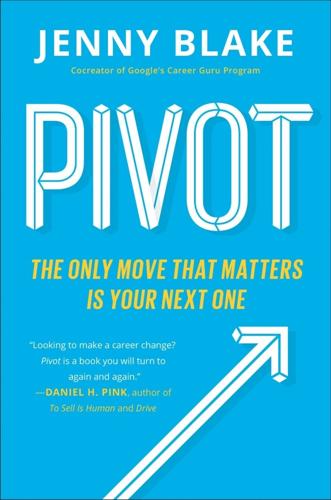
Pivot: The Only Move That Matters Is Your Next One
by
Jenny Blake
Published 14 Jul 2016
Just get something out, then test it, get feedback, revise, and do it over again. Holding a mindset of launch and iterate encouraged us to get minimum viable products out to the company, then have our peers test the programs, letting their feedback guide future versions. Getting a program out, even a scrappy, imperfect, 70 percent version, was better than waiting for 100 percent perfection. That ideal state may never happen, and by that point users’ needs would likely have shifted. For many of my clients who are starting their own businesses, a minimum viable product might mean launching a website with a free, prepackaged theme long before hiring a website designer to design something fancier and fully customized.
…
CHAPTER 8: GET SCRAPPY What Small Experiments Can You Run? What Real-World Data Can You Collect? If you have built castles in the air, your work need not be lost; that is where they should be. Now put the foundations under them. —Henry David Thoreau, Walden IN THE LEAN STARTUP, ERIC RIES POPULARIZED THE CONCEPT OF THE MVP, OR MINIMUM VIABLE PRODUCT. By his definition, the MVP “helps entrepreneurs start the process of learning as quickly as possible. It is not necessarily the smallest product imaginable, though; it is simply the fastest way to get through the Build-Measure-Learn feedback loop with the minimum amount of effort.” When it comes to product development, the message is not to delay a launch by months or years so you can craft every last immaculate detail behind the scenes.
…
It is a constant evolution. After the empty audience experience, by returning to the anchors of what excites them most and what works best with their audiences, Christian and Bill have sold out almost every show since. Start Small with Lean Pilots In keeping with Eric Ries’s MVP (minimum viable product) concept, I recommend taking a lean approach to piloting bigger career changes. A lean pilot is one that does not cost a tremendous amount of time, money, or energy. They are small tests to help you determine if you enjoy this area, have the skills to succeed and differentiate yourself within it, and have the potential to earn income (or any other top priority value).
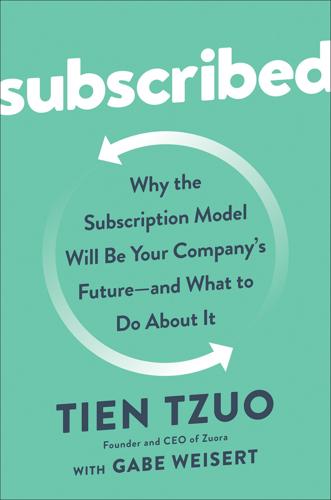
Subscribed: Why the Subscription Model Will Be Your Company's Future - and What to Do About It
by
Tien Tzuo
and
Gabe Weisert
Published 4 Jun 2018
In 2016 Kanye West dropped a new album, sort of. It wasn’t actually finished—he kept publicly tweaking lyrics, rearranging the song order, and adding and subtracting material. As I’ll explain in greater detail later in the book, in the technology industry we would call The Life of Pablo a minimum viable product. That may sound like a pejorative term, but a minimum viable product is actually incredibly important. Only after it gets something out in the market can a business gather customer feedback and use this data to iterate and improve in a continuous deployment cycle. The MVP is a defining principle of cloud software development, and Kanye applied it to his music-writing process.
…
See Internet of Things (IOT) iPhone, 3 IT department, 129–30, 189–99 business insights and, 198 evolving IT architecture to meet subscription economy needs, 197–99 financials and, 192 legacy IT architecture, structure of and problems associated with, 189–97 pricing and packaging and, 190–91, 199 renewals and, 191 sales to different customer groups and, 191–92 subscribers/customer metrics and, 190, 198 “It Doesn’t Matter” (Carr), 83 Jankowski, Simona, 26, 27 Janzer, Anne, 130 Jaws (film), 38 JCPenney, 22 Jobs, Steve, 39, 47 Johnny Walker Blue Label, 107 Johnson, Kevin, 33 just in time inventory, 16 Kaplan, 117 Kaplan, Ethan, 30–31 Katzenberg, Jeffrey, 46 Kelly, Kevin, 111 Kern, Mac, 60–61 Kmart, 22 Komatsu, 98–99 Kramer, Kelly, 95–96 Kreisky, Peter, 78 Lah, Thomas, 85–86, 96 Lean Startup method, 48 leasing versus subscription model, for automobiles, 52–53 Lemonade, 118 Lessin, Jessica, 66, 68 Levie, Aaron, 167–68, 198–99 Life of Pablo, The (album), 48, 136–37 linear order-to-cash systems, 192–97 livestreaming, 42 LL Cool J, 101 LO3 Energy, 119 Loot Crate, 28 Lotto, Mark, 75 Lucas, George, 136 Lyft, 3, 54–55 Lynda.com, 31, 117 MacKenzie, Angus, 72 McGraw-Hill, 12–13 McKinsey, 11, 34, 98, 112–13, 165, 173, 218, 221 Macy’s, 14 Magellan Health, 115 Main, Andy, 121–22 malls, 17, 22, 34–35 Manifesto for Agile Software Development, 135–36 manufacturing industry, 100–101, 103–13 digital twins of physical machinery and, 104–6 focusing on outcomes instead of products, 106–11 future of, 111–13 margins, 15 marketing, 130–31, 143–55 experiences, communicating brand through, 145, 149 one-on-one marketing, 145–46 optimizing growth within service itself, 145 place (channels) and, 146, 147–48 pricing and packaging and, 146, 151–54 promotion and, 146, 149–51 subscriber IDs and, 146 Three Rooms mental model of storytelling and, 149–51 traditional role and techniques of, 143–44 Marketo, 190 MarketTools, 171 Marshall, John, 68 Martin-Flickinger, Gerri, 141 Mashable, 66 mass production, 37 media industry, 37–50 community, building, 43 content creation, investment in, 41 continuous innovation and, 136–37 Hollywood, historical business model of, 37–38 livestreaming, 42 mass production of movies in, 37 music industry, historical business model of, 38–39 music streaming services, 46–50 Netflix show, business model for, 41 portfolio effect and, 37, 41 streaming services and, 39–50 subscription video on demand (SVOD), 42–46 Meeker, Mary, 21 Membership Economy, The (Baxter), 29 Merry Christmas (album), 38 Metallica, 39 Metromile, 118 Microsoft, 56, 83, 89 minimum viable product, 48 ModCloth, 23 Moffett, Craig, 45 Molotov, 46 monetizing longtail content business model, 38 Money element, of PADRE operating model, 204 MOOCs (massive open online courses), 117 Mooney, Andy, 31–32 Motor Trend, 72–73, 79 MoviePass, 2 Mukherjee, Subrata, 74 multiple of three factors, for gauging reader engagement, 74 music streaming services, 46–50 BowieNet and, 47 minimum viable product and, 48 Prince’s NPG Music Club and, 47–48, 49–50 virtuous feedback loop, creating, 48–49 My Royal Canin, 118 Napster, 39 NCR, 13 negative option model, 28–30 Nest, 119 net account growth, 211–13 Netflix, 2, 3, 13, 18–19, 39, 40–41, 69, 139–40, 145, 161, 198 Newman, Nic, 69 New Relic, 166–67 newspaper industry, 65–79 ad-based business model, decline of, 66–70 digital subscribers, growth in, 65–66 enthusiast networks, 72–73 freemium model and, 76 multiple of three factors, for gauging reader engagement, 74 New York Times, subscription-first model of, 75–79 pricing agility and, 73–74 print versus digital myths, 70–71 reader’s wants and needs, prioritizing, 70–71 subscription/ad revenue mix, flipping, 75–76 New Yorker, The, 65, 66–67 New York Times, The, 65, 72–73, 75–79 Ngenic, 109–11 Nichols, Jim, 52 Nordstrom, 33 NPG Music Club, 47–48, 49–50 O’Brien, Mike, 51 Okta, 3 One Medical, 115 one-on-one marketing, 145–46 OnStar, 55–56, 148 Oracle, 4, 83, 190 Pacioli, Luca, 176–78 packaging.
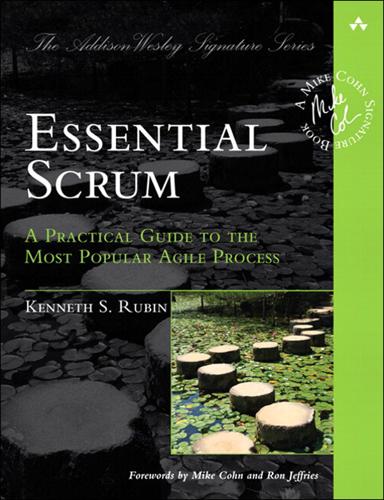
Essential Scrum: A Practical Guide to the Most Popular Agile Process
by
Kenneth S. Rubin
Published 19 Jul 2012
The minimum set of features that must be present in a release to make it viable—useful enough to end customers such that they want it and would be willing to pay for it. 2. Features composed from a collection of minimum marketable features. Synonymous with must-have features. See also minimum marketable features. minimum viable product (MVP). A product that has just those features that allow the product to be deployed, and no more. MMFs. See minimum marketable features. MRFs. See minimum releasable features. MVP. See minimum viable product. Musketeer attitude. 1. All for one and one for all. 2. The attitude among members of a team that they are all in the same boat and that they will win or lose together as a team. must-have features.
…
This last measure is at the heart of innovation accounting, which is effective in any organization that creates a product or service under conditions of extreme uncertainty (Ries 2011). Innovation accounting uses actionable metrics to evaluate how fast we are learning as a critical measure of our progress toward converging on a business-valuable result. Innovation accounting is based on three steps: 1. Create a minimum viable product (MVP) to establish actual baseline values of the actionable metrics on where the organization or product is today. 2. Using a series of incremental improvements to the product, try to improve the actionable measures from the baseline toward the ideal or desired values. 3. If actionable measures show that the product is making demonstrable progress toward the desired target, persevere on the current path; otherwise pivot to a new strategy and begin the process again.
…
Instead, we focus each release on a small set of minimum releasable features (MRFs) around which the stakeholder community shares a strong group consensus. MRFs represent the smallest set of “must-have” features—the features that simply have to be in the release if we are to meet customer value and quality expectations. Some people refer to this set of features as the minimum viable product (MVP) or minimum marketable features (MMFs). While we might choose to deliver more than the MRFs in a given release, customers would not perceive enough value if we delivered any fewer. Therefore, it is always important to define the minimum set. To complement the MRFs, some organizations use the strategy of fixed, periodic releases—for example, a release every quarter—to simplify the product roadmap (see Figure 17.4).
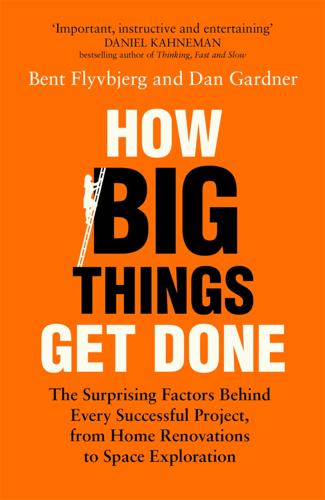
How Big Things Get Done: The Surprising Factors Behind Every Successful Project, From Home Renovations to Space Exploration
by
Bent Flyvbjerg
and
Dan Gardner
Published 16 Feb 2023
Ries wrote that startups operate in an environment of “extreme uncertainty” in which it is impossible to know whether the product they have developed is one that consumers will value. “We must learn what customers really want,” he advised, “not what they say they want or what we think they should want.” The only way to do that is to “experiment.” Create a “minimum viable product,” put it in front of consumers, and see what happens. With lessons learned, change the product, ship again, and repeat the cycle. Ries called this the building phase, as multiple iterations gradually build the final product. I would call it the planning phase, as the design of the product evolves following the dictum “Try, learn, again.”
…
And only when it had mastered as many of the steps as it could test did it send Apollo 11 to the moon. But this sort of testing is almost never possible for big projects because it is too expensive. Project Apollo cost roughly $180 billion in 2021 dollars.26 Worse, it can be dangerous. The astronauts in Project Apollo all knowingly risked their lives. Three died. The “minimum viable product” model comes close to the impossible ideal by doing enough testing to bring the product up to the “minimum viable” standard before releasing it into the real world to get that valuable feedback. But it can be done with only a limited range of projects. You can’t build a skyscraper, see how people like it, then knock it down and build another.
…
Here a motto like Facebook’s “Move fast and break things” seems downright irresponsible. Users and policy makers understandably push back and insist that Silicon Valley figure out what’s wrong with its products and fix them before releasing them into the real world. MAXIMUM VIRTUAL PRODUCT When a minimum viable product approach isn’t possible, try a “maximum virtual product”—a hyperrealistic, exquisitely detailed model like those that Frank Gehry made for the Guggenheim Bilbao and all his buildings since and those that Pixar makes for each of its feature films before shooting. However, the creation of a maximum virtual product requires access to the necessary technology.
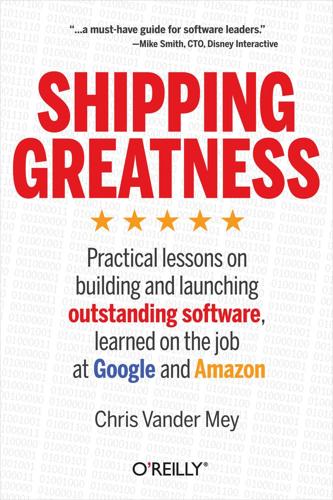
Shipping Greatness
by
Chris Vander Mey
Published 23 Aug 2012
Serial software entrepreneur Eric Ries seems to agree with this approach, and makes a compelling case for building what he calls the minimum viable product in his book The Lean Startup (Crown Business). Ries defines the minimum viable product as the smallest fraction of your product that a sufficient number of customers will use in order to validate an assumption. You may only need a handful of customers to know you’re on the right track, and you may only need to validate one assumption at a time. Regardless of how big your minimum viable product is, you can still follow the product definition process. You will want to repeat it quickly to test assumptions and deliver great incremental progress to your customers.
…
I see them going through the same special torture that I underwent when I entered this industry—but I had the good fortune to have great teachers attendant at my hazing: Dartmouth, Amazon, Google, and my own mistaken ventures. My first teacher was my own company—I was arrogant enough to think that since I could write software I could do everything else required to ship it. You know, define the minimum viable product, manage the project, iterate, release, market, and so on. I learned many valuable lessons, hubris among them. I then joined another startup as the chief technology officer, and spent years trying to make it big. I learned (mostly) different lessons there, but repeated the class in hubris.
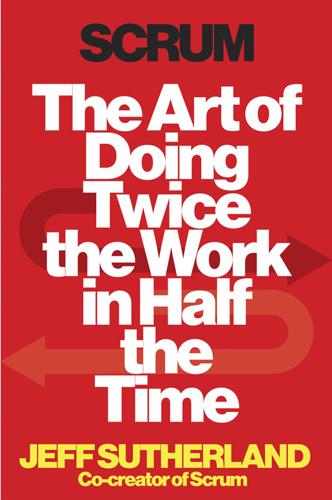
Scrum: The Art of Doing Twice the Work in Half the Time
by
Jeff Sutherland
and
Jj Sutherland
Published 29 Sep 2014
I explain how we prioritize projects, how we set up one-week to one-month “sprints” to gain momentum and hold everyone on the team accountable, how we conduct brief daily stand-ups to keep tabs on what has been done and on the challenges that have inevitably cropped up. And how Scrum incorporates the concepts of continuous improvement and minimum viable products to get immediate feedback from consumers, rather than waiting until a project is finished. As you’ll see in the pages that follow, we’ve used Scrum to build everything from affordable 100-mile-per-gallon cars to bringing the FBI database systems into the twenty-first century. Read on. I think you’ll see how Scrum can help transform how your company works, creates, plans, and thinks.
…
These transactions don’t occur in a mass market—Team WIKISPEED isn’t ready for that yet—but there are early adopters who are willing to put down $25,000 for those early prototypes. When you’re thinking about building something, don’t assume you can’t deliver something of value until the very end. Instead, try to think about the minimum viable product. What is the absolute least I can build and still deliver some value to a customer? Videogames are another good example. Nowadays more and more developers are letting early adopters pay for early “alpha” access. That way the developers get feedback from their most dedicated fans before the game really works.
…
Whenever you’re making something, you want to put it in the hands of those who are actually going to use it as fast as possible. You want to do this even before you make 20 percent of the features. You want to do this with something that delivers at least a tiny bit of value. I call this a “Minimum Viable Product,” or MVP. This should be the thing you show to the public for the first time. How effective does it have to be? Well, it should actually work, though to a person who has been working on it, it may seem kind of embarrassing. You need to get that product out to the public as early as is feasible!
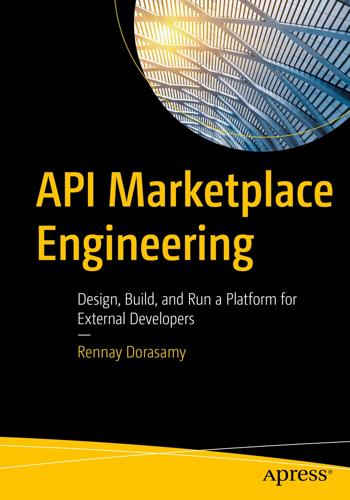
API Marketplace Engineering: Design, Build, and Run a Platform for External Developers
by
Rennay Dorasamy
Published 2 Dec 2021
The second lever, much like a speedboat, is nimble and without the same organizational responsibility, has the ability to change direction quicker. Our Marketplace initiative had to pivot on several occasions. Although roadblocks are disruptive to delivery, our versatility allowed us to quickly change direction to keep moving. For the Minimum Viable Product (MVP), a backend platform we were planning on integrating into was suddenly eliminated due to organizational concerns regarding API access as it could impact the revenue streams of existing access channels. Under typical circumstances, this would have dealt the initiative a death blow. With good leadership and determination, a similar but lesser-known backend was found which we integrated into with fewer challenges.
…
As mentioned in the Amazon “API Manifesto”: All service interfaces, without exception, must be designed from the ground up to be externalize-able. That is to say, the team must plan and design to be able to expose the interface to developers in the outside world. No exceptions. Personas A pitfall many organizations fall into is to only have a technical portal with rafts of three-letter acronyms. In our race to build a Minimum Viable Product (MVP), we did exactly that. Our landing page had some vibrant icons and graphics with some terse text hurriedly put together while we focused on the technical aspects. Again, from experience, the first iteration of the portal the team puts out will probably be the longest running as the team’s focus switches to making new API products available.
…
Ecosystem I’ve been extremely fortunate to have been on an API Marketplace implementation for several years now and have marveled how the ecosystem has evolved over time and as the initiative has matured. We started in a little fishbowl, just a few members of a delivery team, with the goal of delivering a Minimum Viable Product (MVP). Initially, there was no real connection to the outside world and a few tenuous links to backend platforms. As the platform was readied for production workloads, we moved into a larger tank, working closely with different enterprise teams to achieve more stability and reliability. Our respect and appreciation of the enterprise capability grew as we understood the value it added to our implementation.
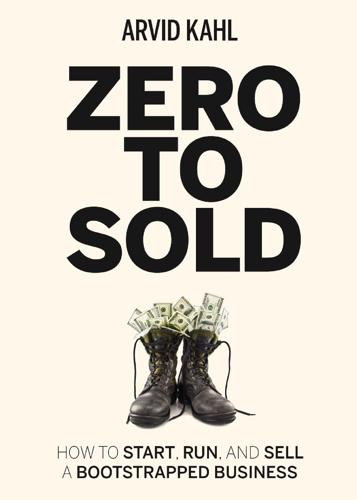
Zero to Sold: How to Start, Run, and Sell a Bootstrapped Business
by
Arvid Kahl
Published 24 Jun 2020
Leverage the fact that it is easier than ever to deploy a new version of your product quickly and give your customers the best experience you can provide. The Do’s and Don’ts of the Minimum Viable Product Leonardo da Vinci said, "Art is never finished, only abandoned." This is definitely true for software as well. The only antidote to abandonment is to put your work in front of other people, even when it's not perfect yet. The startup industry uses the term MVP (Minimum Viable Product) to express this in-between state of being both a wonky prototype and a good-enough product for public consumption. If software can never be truly finished, any stage of it is your best guess at what it should be at the time it's created.
…
The Four Stages of a Bootstrapped Business The Preparation Stage The Preparation Stage and You From Idea to Product From Idea to Product You Probably Have It Backwards: Starting a Bootstrapped Business Step One: Your Audience Bootstrapping an Audience The Power of the Niche Deciding on a Market for Your Business Determining the Size of a Market Step Two: Their Problem Identifying a Critical Problem: Working on the Right Thing Identifying the Most Critical Problem in a Market Problem Validation: Talking to the Right Peoplle Step Three: Your Solution A Solutions Isn’t a Product… Yet Solution Validation Doesn’t Happen in a Vacuum: Talking to Your Future Customers Asking the Right Questions: Focus on Problems not Solutions Step Four: Your Product It’s Time to Get Your Hands Dirty The Myth of the Finished Product The Do’s and Don’ts of the Minimum Viable Product How to Release as a Bootstrapper: Often, Early, and Safely The Boring Truth of Successful Products that Survive Not in House: Reinventing the Wheel Making Tech Choices: Don’t Add Risk to a Risky Business From Product to Business A Well-Oiled Machine Forget Goals, Create Systems: Foundations of a Sustainable Business Your Initial Pricing Will Never Be Right, but Try Anyway Do You Need a Co-Founder?
…
Only by having spent a lot of time and energy on shaping the idea through the previous stages can you be sure that when you dive into building the product, you can create a sustainable bootstrapped business by selling it to customers who will pay for it. In the startup world, everyone is talking about the MVP, the Minimum Viable Product. There is an ongoing battle over what that means. To some, it's the first, very embarrassing version of the product that works. It's a prototype, the first version of many, a bundle of core features built with rudimentary aesthetics to quickly get the product out there. Their MVP will lack a lot of parts, and many things will still have to be done by hand.
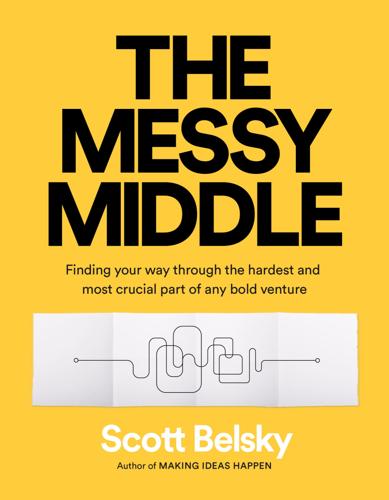
The Messy Middle: Finding Your Way Through the Hardest and Most Crucial Part of Any Bold Venture
by
Scott Belsky
Published 1 Oct 2018
It may look compelling in the short term but often proves less differentiating and defensible in the long term. Shortcuts tend to be less gratifying over time. The long game is the most difficult one to play and the most bountiful one to win. Break the long game down into chapters. Most teams just focus on shipping a minimum viable product (MVP). But cofounder and CEO of Pinterest Ben Silberman has been comfortable being underestimated and flying under the radar in an industry where most people judge companies by their latest headlines, flashy keynotes, and the flaunting of their progress. When it came to activating the revenue-generating parts of his business, Ben was also exceptionally (and, for some investors, excruciatingly) patient in waiting for his product and team to be ready.
…
It might be your brand, a novel design or user experience you are applying that is remarkably different from others in your industry, or some new technology that provides a vastly better option for potential customers. Those aspects that differentiate your product are your chance to create something valuable and warrant a disproportionate amount of investment. You therefore shouldn’t take shortcuts, rush, or strip down the process of creation for these features. In the relentless effort to get a minimum viable product to market, many teams cut or compromise on the key attributes that are likely to differentiate it from their competitors. For example, I’ve watched a few mobile social networks over the years launch a very stripped-down “first version” of their product that lacked the features in which they expressed such pride during their initial pitch to me.
…
Whether you’re building a product, creating art, or writing a book, you need to remember that your customers or patrons make sweeping judgments in their first experience interacting with your creation—especially in the first 30 seconds. I call this the “first mile,” and it is the most critical yet underserved part of a product. You get only one chance to make a first impression. In a world of moving fast and pushing out a minimum viable product, the first mile of a user’s experience is almost always an afterthought. For physical products, that could be the packaging, the wording of the instructions, and the labels that help orientate a new customer. For digital products, it could be the onboarding process, the explanatory copy, and the default settings of your product.
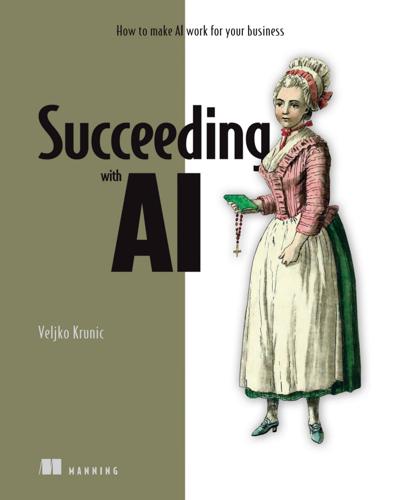
Succeeding With AI: How to Make AI Work for Your Business
by
Veljko Krunic
Published 29 Mar 2020
TIP But we’re using an MVP approach! Some teams are Agile and/or use Lean Startup [28] methodologies for developing their software projects. In a Lean Startup methodology, the team is encouraged to dice projects into small chunks of work that can be presented to the customer for feedback. This chunk of work is called the minimum viable product (MVP). Part of the Lean Startup methodology is that if you find that your MVP isn’t what the customer wants, you can then try something else—the so-called pivot. Some will argue that because you’re building an MVP, you should quickly select some initial AI idea, show it to the customer, and see what the customer says.
…
The order in which you make decisions is the business AI infrastructure. In figure 5.7, defining the business question (box 1) and the metrics used to evaluate it (box 2) must be the first step; otherwise, you’ll waste time searching for answers to the wrong question. Second, you must define at which value threshold of the business metric you’ll have a minimum viable product (MVP) [28] (box 3). Again, the failure to define a threshold is a sure sign that you need to further develop your business case. The threshold value of this metric gives you a milestone in defining the MVP. Note that boxes 1, 2, and 3 are the responsibility of the business team. Once you’ve satisfied boxes 1–3, find out what data you have (box 4), what data you need and can acquire (box 5), and the AI methods you’ll use to determine the need (box 6).
…
Some of the principles of the lean startup methodology are to shorten the business development cycle by iterative product development and testing the product in the marketplace as soon as practical. While originally described in the context of startups, this methodology is now extensively used by organizations of all sizes. See also minimum viable product (MVP) and pivot. Linear response—A type of response in the system that’s proportional to the change in input. If an input change of 1 unit results in a change of x output units, then 2 units of input change would result in a change of 2x units in the system’s output. Long short-term memory (LSTM)—A type of deep learning network characterized by the particular structure of the neural network [110].
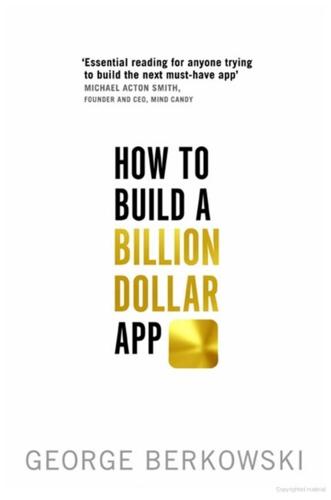
How to Build a Billion Dollar App: Discover the Secrets of the Most Successful Entrepreneurs of Our Time
by
George Berkowski
Published 3 Sep 2014
Everything starts with Version 0.1 – it’s the very first iteration, the prototype, of your app (Version 1.0 is reserved as the first version shipped to the public). In this version you want to focus on the most basic set of features that will make your app unique, useful and different. It’s often called the MVP (or the minimum viable product). At this point you want to focus on only the parts that are absolutely necessary to show why your app delivers something new and novel – something that wows your users. For Hailo it was focusing on how a user could see nearby taxis on a map, then hit the ‘Pick Me Up Here’ button and have a driver accept the hail.
…
At best it was average-looking; someone harsher might have called it ugly. It was certainly not very complex. But it did have a basic user registration function, allowed you to add friends, and also allowed you to send messages to those friends that disappeared after 10 seconds. The app was very much an MVP, a minimum viable product. They invited a bunch of college and high school students to use it, and they invited their friends. Their user-acquisition metric was self-sustaining (because of the inherent network effect of users inviting their friends). Their user activation (effectively creating an account) converted at close to 100 per cent because it was a super-simple registration (just a user name and password).
…
You find it hard to hire support staff any faster, and you’re tired of talking to reporters on a daily basis. And then you win Apple’s App of the Year Award. Success becomes pretty obvious. But this doesn’t happen suddenly – and it certainly doesn’t happen overnight. There is a path from the good, solid app you created to get to million-dollar stage – a minimum viable product out there in the hands of users – to one that users love. Let’s make it a bit less ephemeral. I am an engineer, after all. I’d like to be able to measure something that tells me whether I’ve reached product–market fit – or at least whether I am approaching it – via an objective measure. I like the way that Sean Ellis – founder of Growth Hackers – describes it: I’ve tried to make the concept less abstract by offering a specific metric for determining product–market fit.
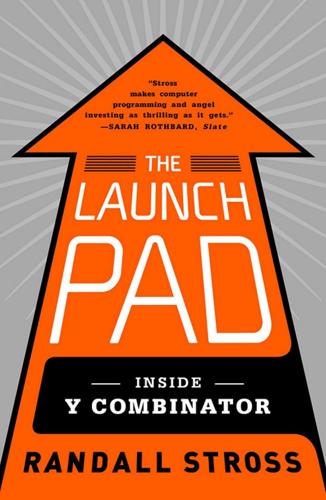
The Launch Pad: Inside Y Combinator, Silicon Valley's Most Exclusive School for Startups
by
Randall Stross
Published 4 Sep 2013
Only by getting a product into the hands of customers, even if the product is only a prototype, is it possible to know what customers want.1 Launching fast is how to make something people want. Judging by the advice that they are given, startup founders are not naturally inclined to launch fast. Startup gurus have devised different ways of saying the same thing: launch the product even when it is in a bare-bones state. Eric Ries speaks of the urgent need to introduce a “minimum viable product,” or MVP.2 Steve Blank speaks of a “minimum feature set”—as soon as that set of features is operational, the product is ready to be tested in the market.3 Graham has his own term but it is a clunker: a “quantum of utility,” which means, in his words, a product that would make the world “one incremental bit better.”
…
If their site were ready to be launched, it would be stuck in the “YC-funded” crowd trying to get attention on TechCrunch. It’s Thursday, August 18, the day after Rehearsal Day, and their site is not close to being ready. They have cobbled together only a single course, an introduction to JavaScript with eight micro-lessons. It’s painfully rudimentary and might fall short of even a low bar for minimum viable product. Before releasing it, however, they need to get some feedback without launching. Hacker News seems like a good place to quietly invite hackers to pay a visit to the site and critique what Codecademy has so far. Midmorning, Sims posts a notice on Hacker News, “Show HN: Code cademy.com—The Easiest Way to Learn to Code,” and he and Bubinski head out to get bagels for lunch.2 In the car, they decide it would be a wonderful thing if they manage to get fifty concurrent users on the site.
…
But when PG wrote “The 18 Mistakes That Kill Startups” in October 2006, he said that “launching too slowly has probably killed a hundred times more startups than launching too fast.” He advised founders to trust that early adopters will be fairly tolerant of incomplete products. They “don’t expect a newly launched product to do everything; it just has to do something.” 2. Eric Ries, “Building the Minimum Viable Product,” Entrepreneurial Thought Leader Lecture Series, Entrepreneurship Corner, Stanford University, September 30, 2009, http://ecorner.stanford.edu/authorMaterialInfo.html?mid=2295. 3. Steve Blank, “Perfection by Subtraction—The Minimum Feature Set,” Steve Blank blog, March 4, 2010, http://steveblank.com/2010/03/04/perfection-by-subtraction-the-minimum-feature-set/. 4.
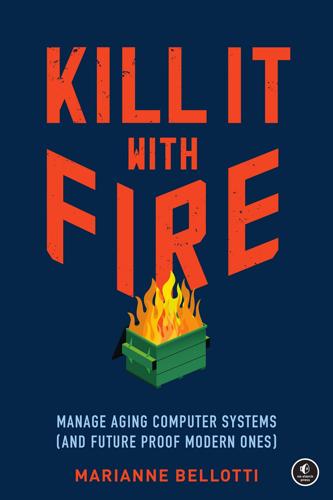
Kill It With Fire: Manage Aging Computer Systems
by
Marianne Bellotti
Published 17 Mar 2021
See baudot code internet service providers (ISPs), 13 internet, the home vs. work access, 12 pricing, 12–13 iPhones, 10 iteration in place, 55–56 J just culture, 166–168 K Kafka, 7 keyboards, 19 Kohn, Alfie, 164 Kruchten, Philippe, 173 L leap second, 203–205 Legacy Code Rocks, 199 Linux, 22–25, 32, 65 Lipmanowicz, Henri, 135 logical view, 173 looms, weaving, 20 Loopy, 212 Lotus 1-2-3, 61 M magnetic tape, 23 mainframes, 1, 12, 40, 66, 157, 198 comparison to cloud computing 2, 9–11, 17 punch cards, 18 Unisys ClearPath Dorados, 2 maintenance mode, 54 McCandless, Keith, 135 mean time to recovery (MTTR), 113, 220 memory leaks, 196 mere-exposure effect, 22, 34 message queues, 208–209 microservices, 101, 148 Microsoft, 33 Excel, 61 Exchange Server, 67 Internet Explorer, 67 microswitch, 26 middleware, 143 migrations, 65–69, 87, 104 minimum viable product (MVP), 32, 39, 76, 79 mobile phones. See cellphones momentum, 75–90, 117, 122, 130 monoliths, 50–51, 56, 85–87, 101–108, 148 Moravec, Hans, 63 morse code, 20 Mozilla, 204 MTTR (mean time to recovery), 113, 220 Multics, 21 murder boards, 125–127 MVP (minimum viable product), 32, 39, 76, 79 Mythical Man-Month, The, 140, 213 N NASA, 198 NASA’s Ames Research Center, 125 National Science Foundation Network, 10 Netflix, 204 networks, 13 nationalization, 11 nines of availability, 113 normal accidents, 46 O Obama administration, the, 79 objectives and key results (OKRs), 182 object-oriented, 70 object relational mapping (ORM), 105 observability, 52 on-call rotations, 109, 208 Operation Aurora, 119 opportunity costs, 90–94 optimizing, 83, 105 ORM (object relational mapping), 105 overgrowth, 64 P performance, 42–44, 52, 92, 113, 144 Perrow, Charles, 46 personal computer (PC), 10 Pew Research, 5 physical view, 173 Pinterest, 204 platform as a service (PaaS), 69 POSIX, 27 postmortem, 100, 167–168, 187–190 probabilistic outcome-based decision-making, 138 problem setting, 129–130, 159 processing power, 13 process view, 173 programming languages, 36 ALGOL60, 28–31 Assembly, 29, 40, 66 bash, 65 BASIC, 30 BCPL, 28 C, 28, 31 COBOL, 28–31, 39–41, 61, 70 CoffeeScript, 70 CPL, 31 CSS, 150 FORTRAN, 30 HTML, 150 Java, 30, 68, 70 JavaScript, 36, 67, 70, 150 JCL, 65 Lisps, 31 Python, 30, 69 SQL, 65, 105 Typescript, 70 protocols, 67 FTP, 67 HTTP, 209 NTP, 197 SMTP, 67 TCP/IP, 67 TLS/SSL, 206 pull requests, 23 Q Qantas Airways, 204 QWERTY, 27 R railroad tickets, 18 Reddit, 204 refactoring, 51–52, 71, 103 reorgs, 141, 151–152, 156 research institutions, 11 resilience, 112, 169 resilience engineering, 172 responsibility gaps, 99, 207 resulting, 60 retrospectives, 188 reverse engineering, 71 rewrites, 34, 54–55, 145–147 risk, 34, 88, 146, 162–171 Ritchie, Dennis, 23 Robert’s Rules of Order, 193 Rumelt, Richard, 184 S SaaS (software as a service), 95 Salus, Peter, 23 sandbox, 174–175 scaling, 62–63, 78, 110, 149, 195 Schrödinger’s cat, 124 SDK (software development kits), 67 second system syndrome, 33 security, 89 Selectric, 27 Service Dominate Logic (S-D Logic), 8 service level agreements (SLAs), 94 service level objectives (SLOs), 94, 106, 113, 144, 149, 169, 220 service-oriented architecture (SOA), 101, 148 service recovery paradox, 170 shell scripts, 65 Sholes, Christopher Latham, 19 site reliability engineering (SRE), 99, 113, 150, 157, 218 Slack, 102 SLAs (service level agreements), 94 SLOs (service level objectives), 94, 106, 113, 144, 149, 169, 220 SOA (service-oriented architecture), 101, 148 software as a service (SaaS), 95 software development kits (SDK), 67 software renovation, 71 Soule, Samuel W., 19 source code, 23 split in place, 56 Spolsky, Joel, 33, 145 SRE (site reliability engineering), 218 Stack Overflow, 33 Stallman, Richard, 25–26 standards, 11, 66, 77, 103, 107 static analysis, 69, 71–72 stocks, 210 storage capacity, 13 stored procedures, 65 Stricker, Gabriel, 119 success criteria, 83, 182–185 supercomputers, 10 Surprising Power of Liberating Structures, 135 system stability, 89, 169 T tabulating machines, 18–20 technical debt, 38–40, 55, 79, 106, 210–215 telegraphs, 19–21 testing, 51, 55, 57, 70, 85, 109, 124 Texas Instruments, 198 Thompson, Ken, 23 TOPS-10, 197 Torvalds, Linus, 25 trade-offs, 42, 83 transpilers, 69–71 true but irrelevant, 82 trust, 54, 100, 108, 123, 168–170, 219 Twitter, 62, 204 typewriters, 19 U United Nations (UN), 181 United Parcel Service (UPS), 203 University of Cambridge, 31 University of North Carolina at Chapel Hill, 140 Unix, 21–27, 197 UNIX-HATERS Handbook, The, 26 US Army/Marine Corps Counterinsurgency Field Manual, The, 129 US Digital Service (USDS), 68, 144, 164–165 V virtual machines (VM), 49–50, 85–87, 111, 176 W Working Effectively with Legacy Code, 55 working groups, 191–193 World Computer Corporation, 197 Y Y2K, 196, 200 yak shaving, 153 YouTube, 102 Z Zajonc, Robert, 22, 34
…
Particularly if the system is a couple decades old, the interfaces are probably tied to processes and associations that don’t make sense anymore, just like the way 80-character lines come from punch cards, two-character Linux commands come from teletype machines, and the save icon on desktop applications is a floppy disk. Sometimes changing interfaces to get rid of requirements that are no longer relevant is a good thing. Defining what the requirements of a minimum viable product (MVP) would be today if the system were brand new is a great thought experiment to run when formalizing a plan of attack. However, even when the result of change is net positive, changing interfaces is not free. Making people think adds friction and increases the odds of failure, even if the new interface is better and more consistent with the overall vision of the product.
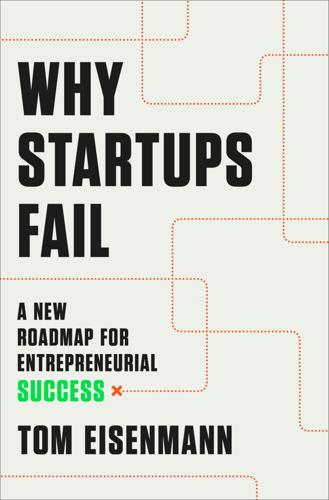
Why Startups Fail: A New Roadmap for Entrepreneurial Success
by
Tom Eisenmann
Published 29 Mar 2021
But as I dug deeper into case studies of failure, I concluded that Lean Startup practices were falling short of their promise. It’s not that the methodology isn’t sound, it’s that many entrepreneurs who claimed to embrace Lean Startup logic actually embraced only part of the Lean Startup canon. Specifically, they launched minimum viable products (MVPs)—the simplest possible offering that would yield reliable customer feedback—and iterated on them in response. By putting their MVP out there and testing how customers responded, these founders should have been able to avoid squandering too much time and money building and marketing a product that no one wanted.
…
To break through this impasse, early-stage entrepreneurs can employ one or more of four tactics to reduce resource requirements while respectively resolving, shifting, deferring, or downplaying opportunity-related risks. However, as I’ll explain here and in the chapters that follow, every one of these tactics contains some potentially destructive downsides. Tactic 1: Lean Experiments (Resolving Risk). Using minimum viable products that minimize resource commitments, founders can validate their assumptions about an opportunity and resolve uncertainty about the new venture’s viability. As we’ll soon see with clothing retailer Quincy, positive results for MVP tests can be persuasive when employees or investors are deciding whether to commit to a new venture
…
With each product iteration, they responded to customer feedback quickly and pivoted in a nimble manner. In doing so, they heeded another Lean Startup mantra: Fail Fast. But Triangulate’s team, like many entrepreneurs, neglected yet another Lean Startup precept: complete “customer discovery”—a thorough round of interviews with prospective customers—before designing and developing a minimum viable product. In Nagaraj’s postmortem analysis of Triangulate’s failure, he acknowledged skipping this crucial early step: “In retrospect, I should have spent a few months talking to as many customers as possible before we started to code. And I completely ignored a question that many friends were asking me, which revealed a lot about their true needs: ‘Are there any hot girls or guys on the site?’
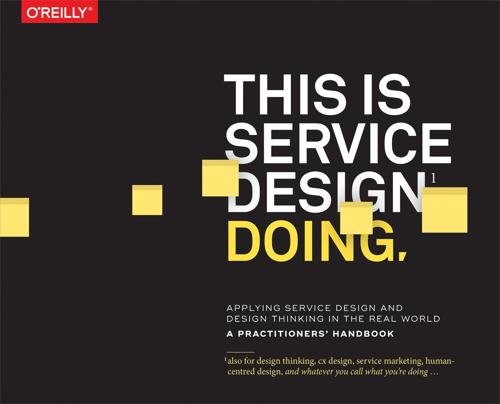
This Is Service Design Doing: Applying Service Design Thinking in the Real World: A Practitioners' Handbook
by
Marc Stickdorn
,
Markus Edgar Hormess
,
Adam Lawrence
and
Jakob Schneider
Published 12 Jan 2018
“Fail early, fail cheap” is one of its mantras. We think it’s important to mention because it is really easy to be agile, but not lean. This means you can work in a way which is perfectly aligned with the Agile Manifesto while not actually aiming for a minimum viable product, collecting early user feedback, or following tracer bullet development. Minimum viable product A minimum viable product (MVP) in software development is a piece of software that contains just enough features to be deployed and tested by real users. 9 The idea is to boil down a product to the core problem that it solves and aim to find a minimum solution to the problem.
…
Using service design tools tightly integrated with traditional marketing and industrial design tools resulted in a rapid development cycle and an industry-leading experience, ultimately exceeding the client’s business goals. Key Takeaways 01 Live journey mapping can lead to amazing levels of participation and buy-in. 02 Digitally driven experiences offer great value – we can now enter the market with a minimum viable product (MVP) and iterate on it afterward. 03 True partnership with all stakeholders builds a trust and long-term mutual respect that encourages proactive thinking and problem solving. Case: Building on Solid Research Creating digital tools for mental health and employment support in the UK AUTHORS Sarah Drummond Co-Founder and Managing Director, Snook Valerie Carr Creative Director, Snook Mental health in the UK is costing the government around £70 billion per year, 55 and that figure continues to increase.
…
For instance, some companies organize separated dedicated spaces to support experimentation with entrepreneurial ideas (e.g., internal incubators, accelerator programs, internal ventures). Employees get a chance to pitch their ideas (or better, their functioning prototypes) to a jury of external experts and internal decision makers. If accepted, they can continue the exploration with a small team of colleagues, supported by coaching and sometimes even funding to develop a minimum viable product (MVP). 35 If this succeeds, some programs even offer venture capital to start a spin-off outside of the existing organization. Through such initiatives, ideas can leapfrog the paralyzing structures of large organizations at the same speed as a startup. Expert Tip “At this stage, you need management buy-in.
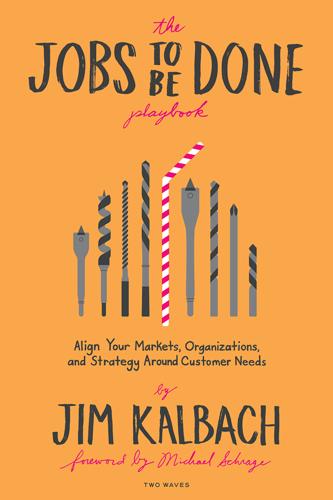
The Jobs to Be Done Playbook: Align Your Markets, Organization, and Strategy Around Customer Needs
by
Jim Kalbach
Published 6 Apr 2020
Surveys and analytics can also help prove your beliefs. Once you have a solution, you can conduct more elaborate experiments of concepts and features. A so-called “minimum viable product” (MVP) can provide a wealth of business insight without having to build or launch anything. Think of a MVP as the shortest path to learning, not as building a product. Eric Ries, author of The Lean Startup, which describes a complete approach for business to mimic the experimental behavior of startups, explains in his book:12 The minimum viable product is that version of a new product which allows a team to collect the maximum amount of validated learning about customers with the least effort....
…
Todd, 122, 127, 263 Lowdermilk, Travis, 149–150, 153, 266 M main job, 21–22, 32 defining, 37–42 mapping, 72–78, 258 main job statement, formulation of, 41–42 manager, as function in job ecosystem, 19–21 Mapping Experiences (Kalbach), xv, 218 market opportunities, expanding, 218–221, 274 matrix organization, 209–210 Maurya, Ash, 153, 266 McCarthy, Bruce, 122, 127, 263 mental model, 145–146, 189–190 micro-jobs, as level of abstraction in JTBD, 33–34 Microsoft, 196 milkshake marketing, 6–7, 104 minimum viable product (MVP), 151 Mitchell, Jake, 154–158 model for user experience design, 138 Moesta, Bob, 5, 7, 14, 46, 59, 61, 64, 71, 256, 257 MURAL, 174, 246–250 Murphy, Lincoln, 177 N needs aligning product strategy with customer needs, 113–116 as element of JTBD, 18, 28–30, 32 and technology, 94–95 needs statements, 29–30 aligning teams to jobs stories, 134–136 comparing competing solutions, 104–105 for online event organizing, 190–191 in product architecture, 148 Nielsen Norman Group, 135 Nike, 77 Nitterhouse, Denise, 62, 64 Norman, Don, 94 O object of the need, 29 objections to JTBD, 242–243 Olsen, Dan, 89, 93, 234, 259 onboarding customers.
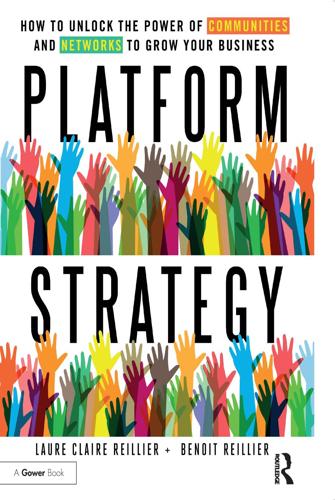
Open for Business Harnessing the Power of Platform Ecosystems
by
Lauren Turner Claire
,
Laure Claire Reillier
and
Benoit Reillier
Published 14 Oct 2017
Index Accor Group 3, 201, 211 add-on platforms 77, 88–9, 92, 102, 105 advertising 37, 43, 45, 67–8, 93, 97, 99–100, 142, 144, 183 AdWords (Google) 67, 69, 183, 184 Airbnb 1–2, 3, 4, 15, 24, 168, 188; brand 51–2, 153, 169–70; business model 45; credibility 158–9, 163; feedback 35, 52, 160, 179–80; insurance 164; market sizing 79; match 47, 52, 83; value propositions 83, 95, 123 Alibaba 1, 15, 28, 34, 123, 124, 132, 208 Amazon 8, 12, 13, 14, 15, 125; business model 48, 59, 63; conflict resolution 163; ecosystem 28, 57–8, 59–61, 62, 70; feedback 35, 160; home automation 212 Amazon FBA (Fulfilment by Amazon) 58, 61–2 Amazon Marketplace 26–7, 48, 57, 58, 59, 60, 61–2, 84, 111 Amazon Prime 58, 61, 62 Amazon Web Services (AWS) 58 analytics 50–1, 52, 110, 123, 162, 187, 208, 213; see also data capture Android operating system (Google) 58, 67, 185–6 anticompetitive behaviour 173, 182, 186 APIs (application programming interfaces) 52, 183, 197 Apple 5, 8, 13, 14, 28, 193; App Store 32, 38, 63, 64–6; business model 54, 63, 66; ecosystem 63–6, 70, 132; iPhone 63, 65, 123; iTunes 63, 65 application programming interfaces see APIs Ariba 96 Artfire 143 attract 6, 15, 24, 47, 167; ignition 75, 91–6; maturity 75, 121–2, 131; pre-launch 74; scaling-up 75, 105, 107, 110–14, 117 audience builders 24 AWS see Amazon Web Services balance 48, 50, 106, 111–12, 114, 117, 124, 144–7, 150 Bezos, J. 57, 58 big bang launch strategy see event strategy BlaBlaCar 7, 154, 157, 158, 159; insurance 164; pricing strategies 147, 150, 156; scaling-up 112, 115 BorrowMyDoggy 99 bottlenecks 51, 73, 75–6, 86, 98, 99, 100, 101, 108, 112, 116 bowling pin strategy 54, 95, 109 brand 14–15, 51, 76, 118, 153–70 bundling strategies 61, 131, 182 business architecture 22, 66, 74, 80, 91 business models 6–7, 11, 22, 27, 59, 62, 63, 68, 132; platform businesses 6–7, 11, 22, 23, 27–8, 41–54, 70, 87, 138, 146, 177, 199, 200, 212; traditional businesses 62, 73, 91, 193, 211 card platforms 6, 23, 80, 126 catalyst businesses 23–4 Chesky, B. 1, 2, 169 218 Index Choudary, S. 25 communications platforms see Snapchat; WeChat; WhatsApp communities 44–5, 51, 78, 94, 112, 118, 125, 170 compensation strategy see dollar strategy competing platforms 131, 140, 149 competition 22, 25, 121, 130–2, 140, 173, 193 competition authorities 122, 131, 173-5, 186, 197 complements 31, 38, 130, 131 conflict resolution 126, 163, 167 connect 4, 45–6, 62; ignition 98; maturity 97; pre-launch 85; scaling-up 115, 117 consistency 159–60, 203 contributions 78, 82-3, 94, 118 control 52, 53, 123, 140–1, 162 core transactions 49, 52, 85–6, 98–101, 125, 168 correction activities 162 Craigslist 34, 95, 167 credibility 156, 158–9, 195 critical mass 31, 35–6, 37, 46, 73, 80, 121 cultural meme 97 customer acquisition 93, 107, 127; see also platform participants customer experience 36, 48, 53; maturity 108, 111; pricing strategies 139, 140–1; scaling-up 162 data capture 187; see also analytics dating platforms 13, 36, 48, 50, 95, 166, 176 delay strategy 195 Deliveroo 95, 111, 133, 170, 208 demand coordinators 24–5 denial strategy 194 denigrate strategy 194 deter strategy 194–5 Didi Chuxing 15, 132 digital platforms 4, 5, 12, 17, 73, 157, 167 direct network effects 34–5 direct platforms 80 disintermediation 126, 147–8 dispute resolution see conflict resolution dollar strategy 196 dynamic capabilities 196, 199, 200, 201 eBay 4, 15, 22, 48, 49, 53–4; brand 169, 170; business model 21, 27; connect 4, 85; feedback 159, 160; ignition 54; network effects 33, 34; pricing strategies 129, 140, 144, 146; scaling-up 108, 112, 115, 208; value propositions 83, 112 economic value 4, 14, 197 economies of scale 31, 32–33 ecosystems 6, 13, 17, 26–8, 180–1, 186, 207, 211; Amazon 26–7, 57–8, 59–61, 62, 70; Apple 63–6, 70, 132; Facebook 28, 70; Google 66–7, 68–9, 70, 132, 180–1, 185–6; Microsoft 70, 130, 132 enablers 51, 52, 87; ignition 101; maturity 128; pre-launch 87; scaling-up 118 Etsy 84, 87, 94, 110, 132, 146, 210 Evans, P. 14, 24, 25 event strategy 96 ex ante regulation 173, 188 ex post regulation 173 externalities 31–3, 65, 175, 180 Facebook 8, 13, 14, 52, 124, 131, 163, 168; ecosystem 28, 70; ignition 95, 96; network effects 35; pricing strategies 149; scaling-up 107, 166; search results 124 fast follower strategy 199 fear barriers 168–9 feedback 32, 34–6, 47, 77, 98, 100, 101, 108, 110, 111, 125, 160, 165, 188 Fulfilment by Amazon see Amazon FBA gaming platforms 35, 69, 97, 145 Gawer, A. 14, 25 Gebbia, J. 1, 169 Google 7, 13, 14, 67, 163, 180–6; AdWords 67; Android operating system 67, 185; brand 169; business model 50–1, 68; ecosystem 66–7, 68–9, 70, 132, 180–1, 186; home automation 212; search results 125; YouTube 67, 69, 131, 182 Google+ 69, 182 Index governance 51, 76, 140, 165, 167; prelaunch 87; trust framework 155, 157, 162, 164–70 Gumtree 132, 143 Hailo (MyTaxi) 93, 185 HiGear 163 home automation 212 Honda 27 hotels 1, 3, 7, 79, 179–80 IBM 14, 26, 194 ignition 73, 74, 91–102; eBay 53–4; Facebook 95, 96 indirect network effects 34–5 indirect platforms 80–1 innovation 140, 170, 174; maturity 127, 128; regulation 174, 186, 199 Instagram 70, 99, 107, 110, 133 insurance 164 intervention 175 intimacy 156 IT infrastructure 52 key enablers 51, 52 Kickstarter 78, 109, 210 La Belle Asiette 93–4, 99 labour laws 177 Launchworks 21, 157, 206, 208 leakage 49, 126, 147–8 leverage 61, 62, 70, 88, 124–5 linear businesses 6, 12, 41–2, 44, 52 LinkedIn 49, 70, 100, 107, 143, 150, 159 liquidity 33, 52, 143; ignition 99, 101; scaling-up 117 listing fees 144 Lyft 15, 132, 174, 176, 202 management principles 6, 7, 207 management rules 7, 17 market failures 167, 175–6, 187 market makers 24–5 marketplace platforms 12, 15, 48, 26, 59, 61, 85 marketplaces 6, 26, 64, 49, 59, 84, 85, 208 219 market power 37, 173–6, 180–3, 186, 197 market sizing 79–80 Mastercard 5, 23, 26, 80, 134 match 75; ignition 97–101, 115; maturity 124; platform participants 47–8, 52, 84–5, 95; pre-launch 86; scaling-up 114–15 maturity 73, 75–6, 121–2, 127–8 media companies 25 membership fees 139, 143–4 meshed communities 94–5 Microsoft 13–14, 23, 28, 63, 65, 70, 125, 143; ecosystem 70, 130, 132; home automation 212 minimum viable product see MVP monetization 50, 67, 86, 100, 116, 142, 147 MSP (multisided platforms) 25, 46 multihoming 36–7, 149, 176, 177 multisided markets 5, 23–4, 46 multisided platforms see MSP MVP (minimum viable product) 91, 100–1 MyTaxi 93 negative externalities 32, 180 Netflix 26, 197 network effects 33–5, 35, 48, 52, 68, 99, 133, 176; positive 48, 115, 126, 133, 142, 149 networks 31, 33–5 North Star metric 86, 100, 119 on-boarding processes 107–8, 168 Onefinestay 200–1 online platforms 11, 50, 51, 162 OpenTable 93 operating systems 5, 6, 25, 34; Android 58, 67, 185–6 optimize 50, 76; ignition 100, 101; maturity 128, 130; pre-launch 74, 86; scaling-up 116 over-regulation 174 Parker, G. 23, 25–6 partners 45, 79, 128 payment platforms 6, 24, 48 PayPal 95, 131, 187 performance metrics 100, 117, 127 220 Index personalization 124 piggybacking 95 platform balance 111, 117, 128, 144–6 platform businesses 4, 5–7, 11–14, 205, 207, 212, 214; definitions 21, 24–8 platform business models 4–7, 21–2, 27, 45–7, 146, 199, 205, 207, 212, 214 platform development 73, 77, 88; ignition 73, 75–6, 91–101; maturity 73, 75–6, 122, 125, 126, 128, 130; pre-launch 50, 73, 74, 75–6, 77–8, 82–7, 87, 169; scaling-up 73, 75–6, 91, 105–18, 169, 176 platform disruption 193–9, 201–3, 210–11; traditional businesses 132, 193–4, 206, 198–201 platform ecosystems see ecosystems platform fit 75–6, 91, 92, 100, 105, 169 platform management 6–7, 17, 161, 168 platform owners 79, 84, 95, 100, 105 platform participants 35, 47, 48, 51, 78–80, 113, 142, 165; connect 98; ignition 91, 101; match 35, 84, 97; maturity 121–2; pre-launch 78–9, 86; trust framework 51, 158, 160–1 platforms 11–12 Pokémon Go 97 Porter, M. 6, 42–3 positive externalities 31, 32, 65 positive network effects: match 48; maturity 111, 114; pricing strategies 126, 142, 149; scaling-up 117 pre-launch 73, 74, 75–6, 77–8 premium services 142–3 price discrimination 137–8, 143 price elasticity 37, 137 pricing 50, 81, 116, 126–8, 137, 150 pricing friction 141–4 pricing models 139, 141–4, 146 pricing strategies 23, 138–9, 140, 145–50 producer acquisition 108–9 producer retention 108, 121 producers 78, 107–8 Quora 110, 159 Reddit 49, 78, 84, 94, 209, 210, 213 regulation 167, 173–9, 186–9 reliability 156 retention 47, 107–8, 111, 122 risk management 163 Rochet, J. 23–4 rocket model 46, 51, 73, 82, 116; ignition 73, 74, 91; maturity 73, 122; pre-launch 73, 74; scaling-up 73, 162 Ruby Lane 143, 166 SAP 123 scaling-up 73, 105–6, 116 Schmalensee, R. 24 search results 48, 50, 52, 67, 98, 114, 124, 180–1 self-driving cars 67, 211–12 sharing economy 8, 16, 164, 208–11 single homing 36–7 Snapchat 16, 110 Spotify 123 stakeholders 74, 79, 82, 210 start-ups 15 Stootie 98 strategic enablers 51, 101, 118 substitutes 38 talent platforms 205–6 Taobao 124–5 TaskRabbit 108, 148 taxi market 7, 24, 80, 93, 131, 174, 176, 178, 196 Tesco 27 Tinder 13, 96, 166 tipping point 36 Tirole, J. 7, 23–4 traditional businesses 4, 11, 13, 25, 41, 46, 79, 82, 137, 176; platform disruption 38, 193, 198 traditional business models 33 41, 53, 62, 132, 193, 211; ignition 91; maturity 132, 193 transactional platforms 85, 111 transaction fees 139, 143–4, 146 transaction metrics 111, 115, 116 Transport for London (TfL) 177–8 travel platforms 3, 11; see also Airbnb; Lyft; Uber Index trust 45, 49, 51, 84, 87, 99, 106, 115, 121, 130, 147, 153 trust framework 153, 155, 157, 165, 188 Twitter 69, 96, 159, 163 tying strategies 182–3 Uber 11, 15, 22, 52, 108, 177; business model 24, 79; price strategies 81, 140; regulation 140, 162, 167, 174, 177 UberEATS 133 under-regulation 174 unfair competition 3, 174, 180–1, 186 unicorns 15–16 Upwork 47, 88, 126, 159, 169, 206 user acquisition 93, 97, 107–10, 122; see also platform participants user retention 107–8, 111, 122 221 value chains 6, 42–3, 52–3, 202–3 value creation 11, 50, 78, 139, 174, 193, 211 value propositions 57, 63, 82, 112, 196, 197; maturity 112; pre-launch 82; scaling-up 112, 133, 142 Van Alstyne, M. 23, 25–6 VIP strategy 96 viral loops 110 Visa 5, 14, 23, 26, 80–1, 134 WeChat 6, 97, 132 WhatsApp 70, 110 YouTube (Google) 67–9, 131, 182, 183, 186 Zalando 12, 102, 200
…
Chapter 8 Platform ignition Proving the concept The business architecture of the platform has been designed and a technical solution has been built for ignition. The platform now needs to be launched and platform participants recruited in order to test the platform’s concept. The key challenge at this stage is typically to develop a minimum viable product (MVP) of the platform that allows you to attract enough producers and users in order to test your business hypothesis. You need to decide which side to attract first and how to go about it. Since the platform hasn’t yet got many users, there will be opportunities for iterating on the proposition, testing additional features, different market channels, etc.
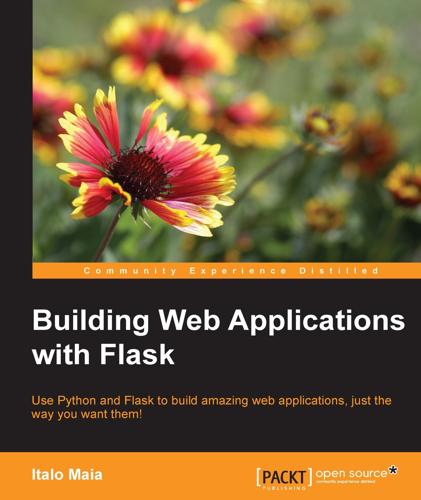
Building Web Applications With Flask
by
Italo Maia
Published 25 Jun 2015
With small project budgets (nowadays, also the big ones), a robust solution called server virtualization was created where expensive, high-RAS physical servers have their resources (memory, CPU, hard-drive, and so on) virtualized into virtual machines (VM), which act just like smaller (and cheaper) versions of the real hardware. Companies such as DigitalOcean (https://digitalocean.com/), Linode (https://www.linode.com/), and RamNode (https://www.ramnode.com/) have whole businesses focused in providing cheap, reliable virtual machines to the public. Now, given that we have our web application ready (I mean, our Minimum Viable Product is ready), we must run the code somewhere accessible to our target audience. This usually means we need a web server. Pick two cheap virtual machines from one of the companies mentioned in the preceding paragraph, set up with Ubuntu, and let's begin! Setting up your database With respect to databases, one of the most basic things you should know during deployment is that it is a good practice to have your database and web application running on different (virtual) machines.
…
You're now capable of building full-featured Flask applications with secure forms, database integration, tests, and making use of extensions, which allow you to create robust software in no time. I'm so proud! Now, go tell your friends how awesome you are. See you around! Postscript As a personal challenge, take that project you have always dreamed of coding, but never had the spirit to do it, and make an MVP (minimum viable product) of it. Create a very simple implementation of your idea and publish it (http://bit.ly/1I0ehDB) to the world to see; then, leave me a message about it. I'd love to take a look at your work! Index A application deploymentabout / You deploy better than my ex code, placing in server / Placing your code in a server database, setting up / Setting up your database web server, setting up / Setting up the web server assertionsassert_context() / Extra assertions assert_redirects() / Extra assertions assert_template_used() / Extra assertions assert404() / Extra assertions auto-escapingabout / What can you do with Jinja2?
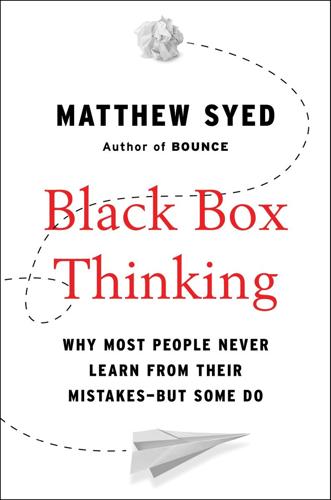
Black Box Thinking: Why Most People Never Learn From Their Mistakes--But Some Do
by
Matthew Syed
Published 3 Nov 2015
High-tech entrepreneurs are often brilliant theorists. They can perform complex mathematics in their sleep. But the lean start-up approach forces them to fuse these skills with what they can discover from failure. How does it work? Instead of designing a product from scratch, techies attempt to create a “minimum viable product” or MVP. This is a prototype with sufficient features in common with the proposed final product that it can be tested on early adopters (the kind of consumers who buy products early in the life cycle and who influence other people in the market). These tests answer two vital questions.
…
.* And this is why, as we noted in chapter 1, bloodletting survived as a recognized treatment until the nineteenth century. Bloodletting with a control group. So far in this book we have examined cases of unambiguous error. When a plane crashes you know the procedures were defective. When DNA evidence shows that an innocent man is convicted, you know the trial or investigation was flawed. When a minimum viable product is rejected by early adopters, you can be sure the final product will bomb. When a nozzle is clogging up, you know it will cost you money. These examples gave us a chance to examine failure in the raw. Much real-world failure is not like this. Often, failure is clouded in ambiguity. What looks like success may really be failure and vice versa.
…
Do individual organizations progress faster when they iterate their way to success or when they come up with bold ideas and stick to them doggedly? In high tech, as we have seen, the world is moving so fast that entrepreneurs have found it necessary to adopt rapid iteration. They may have bold ideas, but they give them a chance to fail early through the minimum viable product (MVP). And if the idea survives the verdict of early adopters, it is iterated into better shape by harnessing the feedback of end users. In other words, competition has favored entrepreneurs that take bottom-up learning seriously rather than those that do not. And that is a powerful operating assumption in a rapidly changing world.

Super Thinking: The Big Book of Mental Models
by
Gabriel Weinberg
and
Lauren McCann
Published 17 Jun 2019
It’s as if you booked an entire vacation assuming your family could join you, only to finally ask them and they say they can’t come. Then you have to go back and change everything, but all this work could have been avoided by a simple communication up front. Back in startup land, there is another mental model to help you test your assumptions, called minimum viable product, or MVP. The MVP is the product you are developing with just enough features, the minimum amount, to be feasibly, or viably, tested by real people. The MVP keeps you from working by yourself for too long. LinkedIn cofounder Reid Hoffman put it like this: “If you’re not embarrassed by the first version of your product, you’ve launched too late.”
…
And we recommend doing as little work as possible before getting that real-world feedback. As with de-risking, you can extend the MVP model to fit many other contexts: minimum viable organization, minimum viable communication, minimum viable strategy, minimum viable experiment. Since we have so many mental models to get to, we’re trying to do minimum viable explanations! Minimum Viable Product Vision MVP 2.0 The MVP forces you to evaluate your assumptions quickly. One way you can be wrong with your assumptions is by coming up with too many or too complicated assumptions up front when there are clearly simpler sets you can start with.
…
Department of, 97 just world hypothesis, 22 Kahneman, Daniel, 9, 30, 90 karoshi, 82 Kauffman Foundation, 122 keeping up with the Joneses, 210–11 key person insurance, 305 King, Martin Luther, Jr., 129, 225 KISS (Keep It Simple, Stupid), 10 knowledge, institutional, 257 knowns: known, 197 unknown, 198, 203 known unknowns, 197–98 Knox, Robert E., 91 Kodak, 302–3, 308–10, 312 Koenigswald, Gustav Heinrich Ralph von, 50 Kohl’s, 15 Kopelman, Josh, 301 Korea, 229, 231, 235, 238 Kristof, Nicholas, 254 Krokodil, 49 Kruger, Justin, 269 Kuhn, Thomas, 24 Kutcher, Ashton, 121 labor market, 283–84 laggards, 116–17 landlords, 178, 179, 182, 188 Laplace, Pierre-Simon, 132 large numbers, law of, 143–44 Latané, Bibb, 259 late majority, 116–17 lateral thinking, 201 law of diminishing returns, 81–83 law of diminishing utility, 81–82 law of inertia, 102–3, 105–8, 110, 112, 113, 119, 120, 129, 290, 296 law of large numbers, 143–44 law of small numbers, 143, 144 Lawson, Jerry, 289 lawsuits, 231 leadership, 248, 255, 260, 265, 271, 275, 276, 278–80 learned helplessness, 22–23 learning, 262, 269, 295 from past events, 271–72 learning curve, 269 Le Chatelier, Henri-Louis, 193 Le Chatelier’s principle, 193–94 left to their own devices, 275 Leibniz, Gottfried, 291 lemons into lemonade, 121 Lernaean Hydra, 51 Levav, Jonathan, 63 lever, 78 leverage, 78–80, 83, 115 high-leverage activities, 79–81, 83, 107, 113 leveraged buyout, 79 leveraging up, 78–79 Levitt, Steven, 44–45 Levitt, Theodore, 296 Lewis, Michael, 289 Lichtenstein, Sarah, 17 lightning, 145 liking, 216–17, 220 Lincoln, Abraham, 97 Lindy effect, 105, 106, 112 line in the sand, 238 LinkedIn, 7 littering, 41, 42 Lloyd, William, 37 loans, 180, 182–83 lobbyists, 216, 306 local optimum, 195–96 lock-in, 305 lock in your gains, 90 long-term negative scenarios, 60 loose versus tight, in organizational culture, 274 Lorenz, Edward, 121 loss, 91 loss aversion, 90–91 loss leader strategy, 236–37 lost at sea, 68 lottery, 85–86, 126, 145 low-context communication, 273–74 low-hanging fruit, 81 loyalists versus mercenaries, 276–77 luck, 128 making your own, 122 luck surface area, 122, 124, 128 Luft, Joseph, 196 LuLaRoe, 217 lung cancer, 133–34, 173 Lyautey, Hubert, 276 Lyft, ix, 288 Madoff, Bernie, 232 magnetic resonance imaging (MRI), 291 magnets, 194 maker’s schedule versus manager’s schedule, 277–78 Making of Economic Society, The (Heilbroner), 49 mammograms, 160–61 management debt, 56 manager’s schedule versus maker’s schedule, 277–78 managing to the person, 255 Manhattan Project, 195 Man in the High Castle, The (Dick), 201 manipulative insincerity, 264 man-month, 279 Mansfield, Peter, 291 manufacturer’s suggested retail price (MSRP), 15 margin of error, 154 markets, 42–43, 46–47, 106 failure in, 47–49 labor, 283–84 market norms versus social norms, 222–24 market power, 283–85, 312 product/market fit, 292–96, 302 secondary, 281–82 winner-take-most, 308 marriage: divorce, 231, 305 same-sex, 117, 118 Maslow, Abraham, 177, 270–71 Maslow’s hammer, xi, 177, 255, 297, 317 Maslow’s hierarchy of needs, 270–71 mathematics, ix–x, 3, 4, 132, 178 Singapore math, 23–24 matrices, 2 × 2, 125–26 consensus-contrarian, 285–86, 290 consequence-conviction, 265–66 Eisenhower Decision Matrix, 72–74, 89, 124, 125 of knowns and unknowns, 197–98 payoff, 212–15, 238 radical candor, 263–64 scatter plot on top of, 126 McCain, John, 241 mean, 146, 149, 151 regression to, 146, 286 standard deviation from, 149, 150–51, 154 variance from, 149 measles, 39, 40 measurable target, 49–50 median, 147 Medicare, 54–55 meetings, 113 weekly one-on-one, 262–63 Megginson, Leon, 101 mental models, vii–xii, 2, 3, 31, 35, 65, 131, 289, 315–17 mentorship, 23, 260, 262, 264, 265 mercenaries versus loyalists, 276–77 Merck, 283 merry-go-round, 108 meta-analysis, 172–73 Metcalfe, Robert, 118 Metcalfe’s law, 118 #MeToo movement, 113 metrics, 137 proxy, 139 Michaels, 15 Microsoft, 241 mid-mortems, 92 Miklaszewski, Jim, 196 Milgram, Stanley, 219, 220 military, 141, 229, 279, 294, 300 milkshakes, 297 Miller, Reggie, 246 Mills, Alan, 58 Mindset: The New Psychology of Success (Dweck), 266 mindset, fixed, 266–67, 272 mindset, growth, 266–67 minimum viable product (MVP), 7–8, 81, 294 mirroring, 217 mission, 276 mission statement, 68 MIT, 53, 85 moats, 302–5, 307–8, 310, 312 mode, 147 Moltke, Helmuth von, 7 momentum, 107–10, 119, 129 Monday morning quarterbacking, 271 Moneyball (Lewis), 289 monopolies, 283, 285 Monte Carlo fallacy, 144 Monte Carlo simulation, 195 Moore, Geoffrey, 311 moral hazard, 43–45, 47 most respectful interpretation (MRI), 19–20 moths, 99–101 Mountain Dew, 35 moving target, 136 multiple discovery, 291–92 multiplication, ix, xi multitasking, 70–72, 74, 76, 110 Munger, Charlie, viii, x–xi, 30, 286, 318 Murphy, Edward, 65 Murphy’s law, 64–65, 132 Musk, Elon, 5, 302 mutually assured destruction (MAD), 231 MVP (minimum viable product), 7–8, 81, 294 Mylan, 283 mythical man-month, 279 name-calling, 226 NASA, 4, 32, 33 Nash, John, 213 Nash equilibrium, 213–14, 226, 235 National Football League (NFL), 225–26 National Institutes of Health, 36 National Security Agency, 52 natural selection, 99–100, 102, 291, 295 nature versus nurture, 249–50 negative compounding, 85 negative externalities, 41–43, 47 negative returns, 82–83, 93 negotiations, 127–28 net benefit, 181–82, 184 Netflix, 69, 95, 203 net present value (NPV), 86, 181 network effects, 117–20, 308 neuroticism, 250 New Orleans, La., 41 Newport, Cal, 72 news headlines, 12–13, 221 newspapers, 106 Newsweek, 290 Newton, Isaac, 102, 291 New York Times, 27, 220, 254 Nielsen Holdings, 217 ninety-ninety rule, 89 Nintendo, 296 Nobel Prize, 32, 42, 220, 291, 306 nocebo effect, 137 nodes, 118, 119 No Fly List, 53–54 noise and signal, 311 nonresponse bias, 140, 142, 143 normal distribution (bell curve), 150–52, 153, 163–66, 191 North Korea, 229, 231, 238 north star, 68–70, 275 nothing in excess, 60 not ready for prime time, 242 “now what” questions, 291 NPR, 239 nuclear chain reaction, viii, 114, 120 nuclear industry, 305–6 nuclear option, 238 Nuclear Regulatory Commission (NRC), 305–6 nuclear weapons, 114, 118, 195, 209, 230–31, 233, 238 nudging, 13–14 null hypothesis, 163, 164 numbers, 130, 146 large, law of, 143–44 small, law of, 143, 144 see also data; statistics nurses, 284 Oakland Athletics, 289 Obama, Barack, 64, 241 objective versus subjective, in organizational culture, 274 obnoxious aggression, 264 observe, orient, decide, act (OODA), 294–95 observer effect, 52, 54 observer-expectancy bias, 136, 139 Ockham’s razor, 8–10 Odum, William E., 38 oil, 105–6 Olympics, 209, 246–48, 285 O’Neal, Shaquille, 246 one-hundred-year floods, 192 Onion, 211–12 On the Origin of Species by Means of Natural Selection (Darwin), 100 OODA loop, 294–95 openness to experience, 250 Operation Ceasefire, 232 opinion, diversity of, 205, 206 opioids, 36 opportunity cost, 76–77, 80, 83, 179, 182, 188, 305 of capital, 77, 179, 182 optimistic probability bias, 33 optimization, premature, 7 optimums, local and global, 195–96 optionality, preserving, 58–59 Oracle, 231, 291, 299 order, 124 balance between chaos and, 128 organizations: culture in, 107–8, 113, 273–80, 293 size and growth of, 278–79 teams in, see teams ostrich with its head in the sand, 55 out-group bias, 127 outliers, 148 Outliers (Gladwell), 261 overfitting, 10–11 overwork, 82 Paine, Thomas, 221–22 pain relievers, 36, 137 Pampered Chef, 217 Pangea, 24–25 paradigm shift, 24, 289 paradox of choice, 62–63 parallel processing, 96 paranoia, 308, 309, 311 Pareto, Vilfredo, 80 Pareto principle, 80–81 Pariser, Eli, 17 Parkinson, Cyril, 74–75, 89 Parkinson’s law, 89 Parkinson’s Law (Parkinson), 74–75 Parkinson’s law of triviality, 74, 89 passwords, 94, 97 past, 201, 271–72, 309–10 Pasteur, Louis, 26 path dependence, 57–59, 194 path of least resistance, 88 Patton, Bruce, 19 Pauling, Linus, 220 payoff matrix, 212–15, 238 PayPal, 72, 291, 296 peak, 105, 106, 112 peak oil, 105 Penny, Jonathon, 52 pent-up energy, 112 perfect, 89–90 as enemy of the good, 61, 89–90 personality traits, 249–50 person-month, 279 perspective, 11 persuasion, see influence models perverse incentives, 50–51, 54 Peter, Laurence, 256 Peter principle, 256, 257 Peterson, Tom, 108–9 Petrified Forest National Park, 217–18 Pew Research, 53 p-hacking, 169, 172 phishing, 97 phones, 116–17, 290 photography, 302–3, 308–10 physics, x, 114, 194, 293 quantum, 200–201 pick your battles, 238 Pinker, Steven, 144 Pirahã, x Pitbull, 36 pivoting, 295–96, 298–301, 308, 311, 312 placebo, 137 placebo effect, 137 Planck, Max, 24 Playskool, 111 Podesta, John, 97 point of no return, 244 Polaris, 67–68 polarity, 125–26 police, in organizations and projects, 253–54 politics, 70, 104 ads and statements in, 225–26 elections, 206, 218, 233, 241, 271, 293, 299 failure and, 47 influence in, 216 predictions in, 206 polls and surveys, 142–43, 152–54, 160 approval ratings, 152–54, 158 employee engagement, 140, 142 postmortems, 32, 92 Potemkin village, 228–29 potential energy, 112 power, 162 power drills, 296 power law distribution, 80–81 power vacuum, 259–60 practice, deliberate, 260–62, 264, 266 precautionary principle, 59–60 Predictably Irrational (Ariely), 14, 222–23 predictions and forecasts, 132, 173 market for, 205–7 superforecasters and, 206–7 PredictIt, 206 premature optimization, 7 premises, see principles pre-mortems, 92 present bias, 85, 87, 93, 113 preserving optionality, 58–59 pressure point, 112 prices, 188, 231, 299 arbitrage and, 282–83 bait and switch and, 228, 229 inflation in, 179–80, 182–83 loss leader strategy and, 236–37 manufacturer’s suggested retail, 15 monopolies and, 283 principal, 44–45 principal-agent problem, 44–45 principles (premises), 207 first, 4–7, 31, 207 prior, 159 prioritizing, 68 prisoners, 63, 232 prisoner’s dilemma, 212–14, 226, 234–35, 244 privacy, 55 probability, 132, 173, 194 bias, optimistic, 33 conditional, 156 probability distributions, 150, 151 bell curve (normal), 150–52, 153, 163–66, 191 Bernoulli, 152 central limit theorem and, 152–53, 163 fat-tailed, 191 power law, 80–81 sample, 152–53 pro-con lists, 175–78, 185, 189 procrastination, 83–85, 87, 89 product development, 294 product/market fit, 292–96, 302 promotions, 256, 275 proximate cause, 31, 117 proxy endpoint, 137 proxy metric, 139 psychology, 168 Psychology of Science, The (Maslow), 177 Ptolemy, Claudius, 8 publication bias, 170, 173 public goods, 39 punching above your weight, 242 p-values, 164, 165, 167–69, 172 Pygmalion effect, 267–68 Pyrrhus, King, 239 Qualcomm, 231 quantum physics, 200–201 quarantine, 234 questions: now what, 291 what if, 122, 201 why, 32, 33 why now, 291 quick and dirty, 234 quid pro quo, 215 Rabois, Keith, 72, 265 Rachleff, Andy, 285–86, 292–93 radical candor, 263–64 Radical Candor (Scott), 263 radiology, 291 randomized controlled experiment, 136 randomness, 201 rats, 51 Rawls, John, 21 Regan, Ronald, 183 real estate agents, 44–45 recessions, 121–22 reciprocity, 215–16, 220, 222, 229, 289 recommendations, 217 red line, 238 referrals, 217 reframe the problem, 96–97 refugee asylum cases, 144 regression to the mean, 146, 286 regret, 87 regulations, 183–84, 231–32 regulatory capture, 305–7 reinventing the wheel, 92 relationships, 53, 55, 63, 91, 111, 124, 159, 271, 296, 298 being locked into, 305 dating, 8–10, 95 replication crisis, 168–72 Republican Party, 104 reputation, 215 research: meta-analysis of, 172–73 publication bias and, 170, 173 systematic reviews of, 172, 173 see also experiments resonance, 293–94 response bias, 142, 143 responsibility, diffusion of, 259 restaurants, 297 menus at, 14, 62 RetailMeNot, 281 retaliation, 238 returns: diminishing, 81–83 negative, 82–83, 93 reversible decisions, 61–62 revolving door, 306 rewards, 275 Riccio, Jim, 306 rise to the occasion, 268 risk, 43, 46, 90, 288 cost-benefit analysis and, 180 de-risking, 6–7, 10, 294 moral hazard and, 43–45, 47 Road Ahead, The (Gates), 69 Roberts, Jason, 122 Roberts, John, 27 Rogers, Everett, 116 Rogers, William, 31 Rogers Commission Report, 31–33 roles, 256–58, 260, 271, 293 roly-poly toy, 111–12 root cause, 31–33, 234 roulette, 144 Rubicon River, 244 ruinous empathy, 264 Rumsfeld, Donald, 196–97, 247 Rumsfeld’s Rule, 247 Russia, 218, 241 Germany and, 70, 238–39 see also Soviet Union Sacred Heart University (SHU), 217, 218 sacrifice play, 239 Sagan, Carl, 220 sales, 81, 216–17 Salesforce, 299 same-sex marriage, 117, 118 Sample, Steven, 28 sample distribution, 152–53 sample size, 143, 160, 162, 163, 165–68, 172 Sánchez, Ricardo, 234 sanctions and fines, 232 Sanders, Bernie, 70, 182, 293 Sayre, Wallace, 74 Sayre’s law, 74 scarcity, 219, 220 scatter plot, 126 scenario analysis (scenario planning), 198–99, 201–3, 207 schools, see education and schools Schrödinger, Erwin, 200 Schrödinger’s cat, 200 Schultz, Howard, 296 Schwartz, Barry, 62–63 science, 133, 220 cargo cult, 315–16 Scientific Autobiography and other Papers (Planck), 24 scientific evidence, 139 scientific experiments, see experiments scientific method, 101–2, 294 scorched-earth tactics, 243 Scott, Kim, 263 S curves, 117, 120 secondary markets, 281–82 second law of thermodynamics, 124 secrets, 288–90, 292 Securities and Exchange Commission, U.S., 228 security, false sense of, 44 security services, 229 selection, adverse, 46–47 selection bias, 139–40, 143, 170 self-control, 87 self-fulfilling prophecies, 267 self-serving bias, 21, 272 Seligman, Martin, 22 Semmelweis, Ignaz, 25–26 Semmelweis reflex, 26 Seneca, Marcus, 60 sensitivity analysis, 181–82, 185, 188 dynamic, 195 Sequoia Capital, 291 Sessions, Roger, 8 sexual predators, 113 Shakespeare, William, 105 Sheets Energy Strips, 36 Shermer, Michael, 133 Shirky, Clay, 104 Shirky principle, 104, 112 Short History of Nearly Everything, A (Bryson), 50 short-termism, 55–56, 58, 60, 68, 85 side effects, 137 signal and noise, 311 significance, 167 statistical, 164–67, 170 Silicon Valley, 288, 289 simulations, 193–95 simultaneous invention, 291–92 Singapore math, 23–24 Sir David Attenborough, RSS, 35 Skeptics Society, 133 sleep meditation app, 162–68 slippery slope argument, 235 slow (high-concentration) thinking, 30, 33, 70–71 small numbers, law of, 143, 144 smartphones, 117, 290, 309, 310 smoking, 41, 42, 133–34, 139, 173 Snap, 299 Snowden, Edward, 52, 53 social engineering, 97 social equality, 117 social media, 81, 94, 113, 217–19, 241 Facebook, 18, 36, 94, 119, 219, 233, 247, 305, 308 Instagram, 220, 247, 291, 310 YouTube, 220, 291 social networks, 117 Dunbar’s number and, 278 social norms versus market norms, 222–24 social proof, 217–20, 229 societal change, 100–101 software, 56, 57 simulations, 192–94 solitaire, 195 solution space, 97 Somalia, 243 sophomore slump, 145–46 South Korea, 229, 231, 238 Soviet Union: Germany and, 70, 238–39 Gosplan in, 49 in Cold War, 209, 235 space exploration, 209 spacing effect, 262 Spain, 243–44 spam, 37, 161, 192–93, 234 specialists, 252–53 species, 120 spending, 38, 74–75 federal, 75–76 spillover effects, 41, 43 sports, 82–83 baseball, 83, 145–46, 289 football, 226, 243 Olympics, 209, 246–48, 285 Spotify, 299 spreadsheets, 179, 180, 182, 299 Srinivasan, Balaji, 301 standard deviation, 149, 150–51, 154 standard error, 154 standards, 93 Stanford Law School, x Starbucks, 296 startup business idea, 6–7 statistics, 130–32, 146, 173, 289, 297 base rate in, 157, 159, 160 base rate fallacy in, 157, 158, 170 Bayesian, 157–60 confidence intervals in, 154–56, 159 confidence level in, 154, 155, 161 frequentist, 158–60 p-hacking in, 169, 172 p-values in, 164, 165, 167–69, 172 standard deviation in, 149, 150–51, 154 standard error in, 154 statistical significance, 164–67, 170 summary, 146, 147 see also data; experiments; probability distributions Staubach, Roger, 243 Sternberg, Robert, 290 stock and flow diagrams, 192 Stone, Douglas, 19 stop the bleeding, 234 strategy, 107–8 exit, 242–43 loss leader, 236–37 pivoting and, 295–96, 298–301, 308, 311, 312 tactics versus, 256–57 strategy tax, 103–4, 112 Stiglitz, Joseph, 306 straw man, 225–26 Streisand, Barbra, 51 Streisand effect, 51, 52 Stroll, Cliff, 290 Structure of Scientific Revolutions, The (Kuhn), 24 subjective versus objective, in organizational culture, 274 suicide, 218 summary statistics, 146, 147 sunk-cost fallacy, 91 superforecasters, 206–7 Superforecasting (Tetlock), 206–7 super models, viii–xii super thinking, viii–ix, 3, 316, 318 surface area, 122 luck, 122, 124, 128 surgery, 136–37 Surowiecki, James, 203–5 surrogate endpoint, 137 surveys, see polls and surveys survivorship bias, 140–43, 170, 272 sustainable competitive advantage, 283, 285 switching costs, 305 systematic review, 172, 173 systems thinking, 192, 195, 198 tactics, 256–57 Tajfel, Henri, 127 take a step back, 298 Taleb, Nassim Nicholas, 2, 105 talk past each other, 225 Target, 236, 252 target, measurable, 49–50 taxes, 39, 40, 56, 104, 193–94 T cells, 194 teams, 246–48, 275 roles in, 256–58, 260 size of, 278 10x, 248, 249, 255, 260, 273, 280, 294 Tech, 83 technical debt, 56, 57 technologies, 289–90, 295 adoption curves of, 115 adoption life cycles of, 116–17, 129, 289, 290, 311–12 disruptive, 308, 310–11 telephone, 118–19 temperature: body, 146–50 thermostats and, 194 tennis, 2 10,000-Hour Rule, 261 10x individuals, 247–48 10x teams, 248, 249, 255, 260, 273, 280, 294 terrorism, 52, 234 Tesla, Inc., 300–301 testing culture, 50 Tetlock, Philip E., 206–7 Texas sharpshooter fallacy, 136 textbooks, 262 Thaler, Richard, 87 Theranos, 228 thermodynamics, 124 thermostats, 194 Thiel, Peter, 72, 288, 289 thinking: black-and-white, 126–28, 168, 272 convergent, 203 counterfactual, 201, 272, 309–10 critical, 201 divergent, 203 fast (low-concentration), 30, 70–71 gray, 28 inverse, 1–2, 291 lateral, 201 outside the box, 201 slow (high-concentration), 30, 33, 70–71 super, viii–ix, 3, 316, 318 systems, 192, 195, 198 writing and, 316 Thinking, Fast and Slow (Kahneman), 30 third story, 19, 92 thought experiment, 199–201 throwing good money after bad, 91 throwing more money at the problem, 94 tight versus loose, in organizational culture, 274 timeboxing, 75 time: management of, 38 as money, 77 work and, 89 tipping point, 115, 117, 119, 120 tit-for-tat, 214–15 Tōgō Heihachirō, 241 tolerance, 117 tools, 95 too much of a good thing, 60 top idea in your mind, 71, 72 toxic culture, 275 Toys “R” Us, 281 trade-offs, 77–78 traditions, 275 tragedy of the commons, 37–40, 43, 47, 49 transparency, 307 tribalism, 28 Trojan horse, 228 Truman Show, The, 229 Trump, Donald, 15, 206, 293 Trump: The Art of the Deal (Trump and Schwartz), 15 trust, 20, 124, 215, 217 trying too hard, 82 Tsushima, Battle of, 241 Tupperware, 217 TurboTax, 104 Turner, John, 127 turn lemons into lemonade, 121 Tversky, Amos, 9, 90 Twain, Mark, 106 Twitter, 233, 234, 296 two-front wars, 70 type I error, 161 type II error, 161 tyranny of small decisions, 38, 55 Tyson, Mike, 7 Uber, 231, 275, 288, 290 Ulam, Stanislaw, 195 ultimatum game, 224, 244 uncertainty, 2, 132, 173, 180, 182, 185 unforced error, 2, 10, 33 unicorn candidate, 257–58 unintended consequences, 35–36, 53–55, 57, 64–65, 192, 232 Union of Concerned Scientists (UCS), 306 unique value proposition, 211 University of Chicago, 144 unknown knowns, 198, 203 unknowns: known, 197–98 unknown, 196–98, 203 urgency, false, 74 used car market, 46–47 U.S.
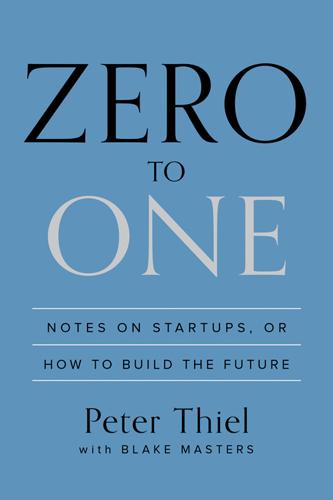
Zero to One: Notes on Startups, or How to Build the Future
by
Peter Thiel
and
Blake Masters
Published 15 Sep 2014
Even in engineering-driven Silicon Valley, the buzzwords of the moment call for building a “lean startup” that can “adapt” and “evolve” to an ever-changing environment. Would-be entrepreneurs are told that nothing can be known in advance: we’re supposed to listen to what customers say they want, make nothing more than a “minimum viable product,” and iterate our way to success. But leanness is a methodology, not a goal. Making small changes to things that already exist might lead you to a local maximum, but it won’t help you find the global maximum. You could build the best version of an app that lets people order toilet paper from their iPhone.
…
Anyone who has held an iDevice or a smoothly machined MacBook has felt the result of Steve Jobs’s obsession with visual and experiential perfection. But the most important lesson to learn from Jobs has nothing to do with aesthetics. The greatest thing Jobs designed was his business. Apple imagined and executed definite multi-year plans to create new products and distribute them effectively. Forget “minimum viable products”—ever since he started Apple in 1976, Jobs saw that you can change the world through careful planning, not by listening to focus group feedback or copying others’ successes. Long-term planning is often undervalued by our indefinite short-term world. When the first iPod was released in October 2001, industry analysts couldn’t see much more than “a nice feature for Macintosh users” that “doesn’t make any difference” to the rest of the world.

Artificial Unintelligence: How Computers Misunderstand the World
by
Meredith Broussard
Published 19 Apr 2018
Most people’s eyes glazed over at that point. So, for the second Story Discovery Engine, I decided I would try to make an actual machine that spit out story ideas. Figure 11.5 shows what the feature looks like. Figure 11.5 Story idea page. I should specify that unlike other features, the story ideas feature is a minimum viable product (MVP). It works, and you can see an actual result—but only for one case, not for all the cases that we planned. We say this very specifically in the documentation. It works well enough for me to feel confident claiming that it works; from my perspective as a developer, it’s a solved problem.
…
J., 83 Lessig, Lawrence, 194 Levandowski, Anthony, 139–140 Levy, Steven, 70 Lexus, 123, 140 Libertarianism, 82–83, 138, 159–160 Libraries, 96–97 Lightoller, Charles, 116 Lincoln, Abraham, 78 LinkedIn, 158 Linux, 24–25 Lipton, Zachary, 114 Literacy, technological, 21 Long, Milton, 117–118 Long Now Foundation, 73 Lord, Walter, 117–119 Loughner, Jared Lee, 19 Lovelace, Ada, 76 LSD, 81 Lucas, George, 70 Machine intelligence, determining, 37–38 Machine language, 24 Machine learning algorithms in, 94 defined, 11, 89, 91–92 doing DataCamp Titanic tutorial, 96–119 datasets in, 94–96 intelligence in, 92–93 in journalism, 52 limitations, 119 linguistic confusion, 89 reinforcement, 93 social decision making and, 115–116, 119 supervised, 93 training data in, 93–94 unsupervised, 93 Machines, intelligence in, 33 Mahfouz, Christl, 186 Mapping, digital, 131 Masch, Michael, 57 Mathematical lookup tables, 77 Mathematics cult of genius, worship of, 75 developing machines for, 75–79 gender gap, 84–85 gender stereotypes associated with, 84 social culture of, 75 women in, 77–78 May, Patrick, 158 McCarthy, John, 70, 71 McCutcheon v. FEC, 180 McIntyre, Tim, 170 McNamee, Roger, 138 Mercedes, 144 Merideth, Willie, 68 Meyer, Philip, 43 Microsoft, 25, 157 Minimum viable product (MVP), 189–190 Minsky, Margaret, 79 Minsky, Marvin, 69–75, 79–80, 81, 84, 89, 129, 132, 145, 193 MIT Artificial Intelligence Lab, 70 Mitchell, Tom M., 92 MIT Media Lab, 70, 72, 195 MIT Tech Model Railroad Club (TMRC), 69–70 Models, mathematical, 94 Monty Python, 89 Moore School of Engineering, 196–198 Morais, Betsy, 167 Mortensen, Dennis, 132 Motor vehicle traffic-related injury mortality, 137–138 Mullainathan, Sendhil, 155–156 Munro, Randall, 87 Murdoch, William, 116 Musk, Elon, 142, 143–144 Naming problem, 88–89 Natanson, Hannah, 84 National Highway Traffic Safety Association (NHTSA), 133–134 Natural resources homework, 51–52 Navy, U.S., 137 Neumann, John von, 71 Neural networks, 33 Neville-Neil, George V., 92–93 New Communalism movement, 5 Newman, Barry, 152 Newspapers, 152 New York Times, 152 NeXt cube, 5 NICAR conference, 196 Nineteenth Amendment, 78 Northpointe, 155–156 Norvig, Peter, 93, 118 Nutter, Michael, 53 NVIDIA, 140–141 Obama Administration, 147, 194 Object, 97 O’Neil, Cathy, 94 One Laptop Per Child (OLPC) initiative, 65 oN-Line System (NLS), 25 OpenBazaar, 159 Operating systems, 24–25 Opioid crisis, 158–160 O’Reilly, Tim, 81 OSX, 25 Otto, 142 Overview Project, 52 Page, Carl Victor, Sr., 72–73 Page, Larry, 72–73, 131, 151 PageRank, 72, 151–152 Palantir, 83 Panama Papers, 196 Pandas library, 97 Paperclip theory, 89–90 Papert, Seymour, 72, 73 Pasquale, Frank, 115 Pattis, Richard, 129 PayPal, 83, 159 Pearson, 53–54 Penn and Teller, 70 Pennsylvania System of School Assessment (PSSA), 52, 53–54 Pereira, Fernando, 118 Personal computer revolution, 5, 24 Philadelphia School District, 53–60, 65–66 Physicians, sexual abuse by, 42–43 PillyPod, 173 Pinker, Stephen, 90 Pinkerton, Emma, 164 Pizzafy, 165, 168–174 Policing quantitative methods to enhance, 155 racial disparities found by Stanford Open Policing Project, 43 speeding, 43 PolitiFact, 45–46 Popular vs. good, 149–152, 160 Poverty and differential pricing, 116 Prater, Vernon, 155 Predictive analytics, 33 Price discrimination, 46 Price optimization, 114–115 Privacy, right to, 68, 195 Programmers accountability for, 154 bias, 155–158 competence, developing, 169–170, 174 drug use, 158–159 ethical training, 145 income, 170–171 safety, attitudes toward, 73–74 social conventions, 74–75 Programming.
…
See also Cars, self-driving Robot reporting, 9–10 Robots, 3–4, 87–88, 129 Rogers, Edwin, 164–165, 167, 172, 173 Roomba, 88 Royal, Cindy, 47 Rudisch, Gloria, 79 Russell, Stuart, 93 Safari, 25, 26 Science fiction, 71–72 Scikit-learn, 92, 96 Screet, 172 Sculley, John, 72 Searle, John, 38 Selfies, 149 SendGrid, 168 Seneca Falls Convention, 78 Sentience computer, 17, 129 in self-driving cars, 132 Sexual abuse, 42–43, 45 Sexual harassment, culture of, 74 Shar.ed, 171–172 Sharkey, Pat, 115 Shaw, Jennifer, 164–165, 167, 170–171, 173 Sheivachman, Andrew, 187 Shell programming language, 15 Siegelmann, Hava, 133 Silicon Valley, 166 Silk Road, 159 Silver, Nate, 47 Singh, Santokh, 137 Singularity theory, 89–90 Siri, 28, 29, 72 Slavery, 78 Slovic, Paul, 83 Smart games format (SGF), 35 Smith, Dre, 167, 172 Smith, Edward John, 117 Snowden documents, 196 Social decision making, 115–116, 119 Social media, 158 Society, impact of algorithmic accountability reporting, 65–66 Society-in-the-loop machine learning, 195 Software. See also Programming autonomous systems, 187 in the cloud, 25–26 defined, 19, 22 development process problems, 190 human-in-the-loop systems, 177, 179, 187, 195 lifespan, 193 minimum viable product, 190 naming, 182 scope creep, 61 technical debt, 193 Somerville, Heather, 158 Space elevator, 71–72 SPACES, 172–173 Speechnow.org v. FEC, 180 Spence, Stephen, 58–59 Standardized testing, 52–55 Stanford Racing Team (Junior), 124, 130–131 Stanford Racing Team (Stanley), 123–124, 127 Staples, 46, 115 Star Trek: The Next Generation, 31 Startup Bus, 163–174 Startup House, 166 Steiger, Paul, 45 STEM fields, 5, 83–85, 158 Step reckoner, 76 Stewart, Alex, 122, 125–126 Story Discovery Engine (Broussard), 178–180, 187, 188–191 Survivor (television), 164 Sweeney, Latanya, 195 Tacocopter, 29–30 Taplin, Jonathan, 83 Tay Twitter bot, 69 Teachers, underground economy, 57 TechCrunch Disrupt hackathon, 166–167 Tech culture drug use in, 158–160 misogyny in, 167 money in, 171 Tech Model Railroad Club (TMRC), 69–70 Technochauvinism assumptions from, 156 beliefs accompanying, 8 blaming drivers, 136 defined, 7–8 disruptive innovation and, 163 hallmarks of, 69 magical thinking of, 122 philosophical basis of, 75 Technolibertarianism, 82–83 Technology breakage, 63, 156–157, 193 digital, uses for, 194 equality, creating, 87 gender gap, 158 human-centered design, 177 inclusive, need for, 154 inequality and, 83, 115, 156 libertarianism and, 82–83 limitations, 6–7, 176–177 mathematical, development of, 75–79 promises of, questioning the, 6 social consequences, negative, 67–69 white male bias in, 72, 79 Terminal, 14–15 Tesla, 121, 136, 139, 140–144 Textbooks, 53–60, 63–65 Texting while driving, 146–147 Thayer, Jack, 117–118 Thiel, Peter, 83, 159 Thirteenth Amendment, 78 Thrun, Sebastian, 124, 131, 135, 138 Tic-tac-toe, 33–34 Tilden Middle School, 59–60 Titanic (disaster), 95–119 Titanic (movie), 95 Torvalds, Linus, 24 Toyota, 140 Trolley problem, 144, 147 Trump, Donald, 83, 184–187, 194 Tufte, Edward, 169 Turing, Alan, 33, 74–75, 82, 83, 193 Turing test, 33, 37–38 Turner, Fred, 5, 81 Twitter, 69 2001: A Space Odyssey (film), 31, 71, 198 Uber, 74, 121, 138, 139–140, 142, 168 Udacity, 135, 138 Ukpeaġvik Iñupiat Corporation, 137 Ulbricht, Ross, 159 Unix, 24 Unmanned autonomous systems (UAS), 137 Urmson, Chris, 135 Usher, Nikki, 47 Vaporware, 166 Vehicles, SAE definitions for automated, 134–135.
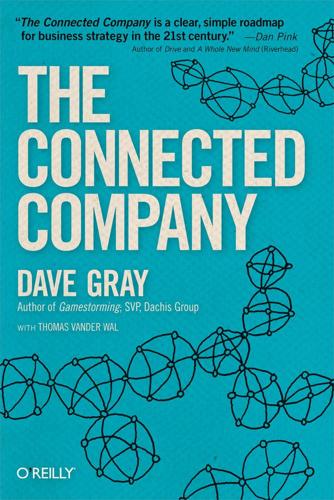
The Connected Company
by
Dave Gray
and
Thomas Vander Wal
Published 2 Dec 2014
Agile Development As early as the 1950s, IBM programmers were working on software for things like submarine-control systems and missile-tracking systems, which were so complex that they could not be conceived of and built in one go. Programmers had to evolve them over time, like cities, starting with a simple working system that could be tested by users (sometimes called the minimum viable product or MVP), and then gradually adding more function and detail in iterative cycles that took one to six months to complete. In a 1969 IBM internal report called simply, “The Programming Process,” IBM computer scientist M.M. Lehman described the approach: The design process is…seeded by a formal definition of the system, which provides a first, executable, functional model.
…
Logitech (company), Net Promoter at Logitech–Net Promoter at Logitech, Net Promoter at Logitech loose coupling, Service Contracts, Loose Coupling, Most Companies are Not Built for Agility about, Service Contracts, Loose Coupling car example, Most Companies are Not Built for Agility Lusch, Robert F., Service-Dominant Logic M machines, The Company as a Machine–Closed and Open Systems, The Company as a Machine, The Company as a Machine, Closed and Open Systems, Closed and Open Systems, Closed and Open Systems as closed systems, Closed and Open Systems companies as, The Company as a Machine–Closed and Open Systems, The Company as a Machine, Closed and Open Systems, Closed and Open Systems purpose of, The Company as a Machine Mackey, John, It Takes Trust to Build Relationships Mailchimp (company), Strategy by Discovery management, Leading from the Edge, Managing the connected company, Management is a Support System, Designing the System–Rely on Peer-to-Peer Reinforcement Whenever Possible, Balance the Individual Freedom with the Common Good, Build Slack into Central Resources to Ensure Availability, Rely on Peer-to-Peer Reinforcement Whenever Possible, Rely on Peer-to-Peer Reinforcement Whenever Possible, Operating the System, Critical Values in Complex Adaptive Systems, Symptoms, Tuning the System–The Job of Managers, Tuning the System, Information Transparency, Density, Rate of Flow, Structural Change, The Job of Managers, The Job of Managers, The Job of Managers as support system, Management is a Support System designing system for, Designing the System–Rely on Peer-to-Peer Reinforcement Whenever Possible, Balance the Individual Freedom with the Common Good, Build Slack into Central Resources to Ensure Availability, Rely on Peer-to-Peer Reinforcement Whenever Possible, Rely on Peer-to-Peer Reinforcement Whenever Possible leadership versus, Leading from the Edge operating the system, Operating the System, Critical Values in Complex Adaptive Systems, Symptoms, Tuning the System purpose of, Managing the connected company role of, The Job of Managers tuning the system, Tuning the System–The Job of Managers, Information Transparency, Density, Rate of Flow, Structural Change, The Job of Managers, The Job of Managers maneuver warfare, Three Types of Strategy Marriott International, Connecting an Internal Group at Marriott–Connecting an Internal Group at Marriott, Connecting an Internal Group at Marriott mass marketing, product saturation and, An Age of Abundance–An Age of Abundance, An Age of Abundance, An Age of Abundance mass production, Interchangeable Parts–Conflicting Constraints Lead to Rigidity, Interchangeable Parts, Conflicting Constraints Lead to Rigidity standardization and, Interchangeable Parts–Conflicting Constraints Lead to Rigidity, Interchangeable Parts, Conflicting Constraints Lead to Rigidity Maverick (Semler), Democratic Management at Semco McCarthy, Patrick D., Freedom to Experiment, The Nordstrom Way McDonald’s (company), Reducing Variety–Absorbing Variety, Reducing Variety, Absorbing Variety, Support–Balancing the Needs of Constituents, Balancing the Needs of Constituents reducing variety, Reducing Variety–Absorbing Variety, Reducing Variety, Absorbing Variety support structure, Support–Balancing the Needs of Constituents, Balancing the Needs of Constituents McIntyre, Tim, Cascading Effects Can be Initiated by Employees McKelvey, Bill, The Red Queen Race, Adaptive Tensions Microsoft Corporation, What is a Platform? minimum viable product (MVP, Agile Development Mintzberg, Henry, Let a Thousand Flowers Bloom–A Portfolio of Experiments, Let a Thousand Flowers Bloom, A Portfolio of Experiments Moments of Truth (Carlzon), Moments of Truth Moore, Karl, Let a Thousand Flowers Bloom Moore’s Law, Demands on Companies are Increasing in Volume, Velocity, Variety, How Kodak Faded Away moral authority, Three Types of Strategy, Influence—Give Meaning and Moral Authority to the Purpose, Moral Authority, Principles Trump Processes, It Takes Trust to Build Relationships moral leverage, Moral Authority moral warfare, Three Types of Strategy Morita, Akio, Purpose Sets the Context for Organizations to Learn Morning Star (company), Morning Star’s Self-Organizing Marketplace–The Nordstrom Way, Morning Star’s Self-Organizing Marketplace, The Nordstrom Way Mosser, Fred, Adaptive Moves Can be Competitive—and Cooperative Mullikin, Harry, The Nordstrom Way Multidivisional organizations, The Podular Organization–The Podular Organization, The Podular Organization MVP (minimum viable product), Agile Development MySpace service, The Platform MyStarbucksIdea.com site, Permeability N Napier, Lanham, Principles Trump Processes National car rentals, Serious Netflix service, Adaptive Moves Can Create Opportunities for Others, Coevolutionary Relationships Can be Very Complex, Netflix, a City of Services, Netflix, a City of Services, Netflix, a City of Services network weaving, Network Weaving networks, Power in the Network, Power in the Network, Power in the Network, A Process is Not a Service, Small Worlds, Small Worlds, Scale-free Networks–Power in Networks, Power and Control in Networks, Power in Networks, Control–Exercising Power in Networks, Control, Exercising Power in Networks–Three Principles of Network Power, Exercising Power in Networks, Influence, The Platform, The Platform, Three Principles of Network Power, Three Principles of Network Power about, Small Worlds control in, Control–Exercising Power in Networks, Control, Exercising Power in Networks exercising power in, Exercising Power in Networks–Three Principles of Network Power, The Platform, Three Principles of Network Power, Three Principles of Network Power influence in, Influence platforms in, The Platform power in, Power in the Network, Power in the Network, Power in the Network, Power and Control in Networks scale-free, Scale-free Networks–Power in Networks, Power in Networks service, A Process is Not a Service small-world, Small Worlds New York Times, Failure of Purpose Newell, Gabe, Strategy by Discovery Nielsen study, Power in the Network Nordstrom (company), When in Doubt, Get in Touch with Your Customers, Building Long-Term Relationships with Customers, Absorbing Variety, Self-Organizing Teams at Rational Software customer service, When in Doubt, Get in Touch with Your Customers, Building Long-Term Relationships with Customers, Absorbing Variety self-organization teams, Self-Organizing Teams at Rational Software NPR videotape, Cascading Effects Can be Initiated by Enemies or Competitors NPS (Net Promoter Score), The Net Promoter Score, Net Promoter at Apple–Net Promoter at Apple, Net Promoter at Apple, Net Promoter at Apple, Net Promoter at Logitech–Net Promoter at Logitech, Net Promoter at Logitech, Principles Trump Processes about, The Net Promoter Score Apple, Net Promoter at Apple–Net Promoter at Apple, Net Promoter at Apple, Net Promoter at Apple Logitech, Net Promoter at Logitech–Net Promoter at Logitech, Net Promoter at Logitech Rackspace, Principles Trump Processes Nupedia site, What is a Platform?
…
minimum viable product (MVP, Agile Development Mintzberg, Henry, Let a Thousand Flowers Bloom–A Portfolio of Experiments, Let a Thousand Flowers Bloom, A Portfolio of Experiments Moments of Truth (Carlzon), Moments of Truth Moore, Karl, Let a Thousand Flowers Bloom Moore’s Law, Demands on Companies are Increasing in Volume, Velocity, Variety, How Kodak Faded Away moral authority, Three Types of Strategy, Influence—Give Meaning and Moral Authority to the Purpose, Moral Authority, Principles Trump Processes, It Takes Trust to Build Relationships moral leverage, Moral Authority moral warfare, Three Types of Strategy Morita, Akio, Purpose Sets the Context for Organizations to Learn Morning Star (company), Morning Star’s Self-Organizing Marketplace–The Nordstrom Way, Morning Star’s Self-Organizing Marketplace, The Nordstrom Way Mosser, Fred, Adaptive Moves Can be Competitive—and Cooperative Mullikin, Harry, The Nordstrom Way Multidivisional organizations, The Podular Organization–The Podular Organization, The Podular Organization MVP (minimum viable product), Agile Development MySpace service, The Platform MyStarbucksIdea.com site, Permeability N Napier, Lanham, Principles Trump Processes National car rentals, Serious Netflix service, Adaptive Moves Can Create Opportunities for Others, Coevolutionary Relationships Can be Very Complex, Netflix, a City of Services, Netflix, a City of Services, Netflix, a City of Services network weaving, Network Weaving networks, Power in the Network, Power in the Network, Power in the Network, A Process is Not a Service, Small Worlds, Small Worlds, Scale-free Networks–Power in Networks, Power and Control in Networks, Power in Networks, Control–Exercising Power in Networks, Control, Exercising Power in Networks–Three Principles of Network Power, Exercising Power in Networks, Influence, The Platform, The Platform, Three Principles of Network Power, Three Principles of Network Power about, Small Worlds control in, Control–Exercising Power in Networks, Control, Exercising Power in Networks exercising power in, Exercising Power in Networks–Three Principles of Network Power, The Platform, Three Principles of Network Power, Three Principles of Network Power influence in, Influence platforms in, The Platform power in, Power in the Network, Power in the Network, Power in the Network, Power and Control in Networks scale-free, Scale-free Networks–Power in Networks, Power in Networks service, A Process is Not a Service small-world, Small Worlds New York Times, Failure of Purpose Newell, Gabe, Strategy by Discovery Nielsen study, Power in the Network Nordstrom (company), When in Doubt, Get in Touch with Your Customers, Building Long-Term Relationships with Customers, Absorbing Variety, Self-Organizing Teams at Rational Software customer service, When in Doubt, Get in Touch with Your Customers, Building Long-Term Relationships with Customers, Absorbing Variety self-organization teams, Self-Organizing Teams at Rational Software NPR videotape, Cascading Effects Can be Initiated by Enemies or Competitors NPS (Net Promoter Score), The Net Promoter Score, Net Promoter at Apple–Net Promoter at Apple, Net Promoter at Apple, Net Promoter at Apple, Net Promoter at Logitech–Net Promoter at Logitech, Net Promoter at Logitech, Principles Trump Processes about, The Net Promoter Score Apple, Net Promoter at Apple–Net Promoter at Apple, Net Promoter at Apple, Net Promoter at Apple Logitech, Net Promoter at Logitech–Net Promoter at Logitech, Net Promoter at Logitech Rackspace, Principles Trump Processes Nupedia site, What is a Platform?
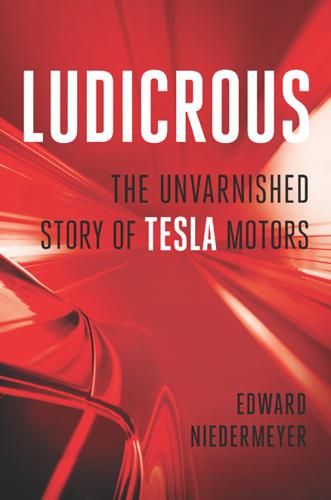
Ludicrous: The Unvarnished Story of Tesla Motors
by
Edward Niedermeyer
Published 14 Sep 2019
Tesla’s problems on safety come down to some of the unique attributes that it brings from the software world into the highly regulated, life-and-death world of automobiles. One could speculate that its high-flying stock price gives it extra incentives to conceal any problem that might lead to a recall, even though recalls are the responsible (and legally necessary) response to any safety-related issue. What’s more, its approach of launching with a “minimum viable product,” and then iterating the vehicle’s engineering over time not only makes it more likely to bring an undertested and potentially problematic vehicle or component to market, it also means regulators can’t properly track vehicle populations to oversee safety. Tesla’s seemingly systematic evasion of NHTSA’s independent investigatory capabilities also brings to mind Silicon Valley’s cultural disregard for fussy regulations and slow-moving bureaucrats.
…
Silicon Valley’s “move fast and break stuff” ethos, which fostered innovation in non-safety-critical software, was beginning to look like a poor approach to developing self-driving car systems, which hold the power of life and death. Using a sensor suite designed for a driver-assist system came across as the ultimate example of Silicon Valley’s “minimum viable product” paradigm, applied not to a smartphone app but to an activity that is a leading cause of death. Any plan to simply update software whenever an underbaked autonomous-drive system runs into a situation it can’t handle has to assume that a number of those situations will involve a customer dying.
…
Rebooting your phone because a website made it crash is no big deal, but what if a website or a software update made your car computer crash or reboot while you’re driving? What if a website made your odometer fail to properly record mileage, effectively causing you to commit inadvertent odometer fraud? (Tesla drivers have reported both things on forums.) Launching a “minimum viable product” and then updating it after you’ve started selling it works for software and even smartphones, provided they are not relied upon in safety-critical situations. But the reason automakers choose to use proven technology and automotive-grade components, and then spend years validating them before selling to customers, is that cars are fundamentally safety-critical systems.
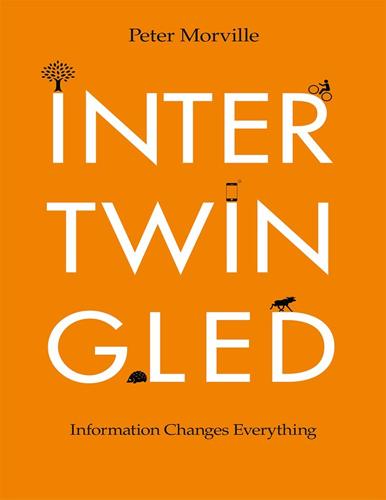
Intertwingled: Information Changes Everything
by
Peter Morville
Published 14 May 2014
And it worked. Quality soared, and Toyota became the largest, most consistently successful industrial enterprise in the world. In recent years, Eric Ries famously adapted Lean to solve the wicked problem of software startups: what if we build something nobody wants? He advocates use of a minimum viable product (“MVP”) as the hub of a Build-Measure-Learn loop that allows for the least expensive experiment. By selling an early version of a product or feature, we can get invaluable feedback from customers, not just about how it’s designed, but about what the market actually wants. It’s a holistic approach that recognizes the risks of vanity metrics such as total number of users.
…
It is the primary function of the neocortex and the foundation of intelligence.”lxxvi It’s impossible not to predict the future, yet we get it wrong all the time. We use our “theory of mind” to anticipate the actions and reactions of colleagues and customers, but people are full of surprises. Experiments help, but induction has its limits. Even minimum viable products can’t predict the long now at scale. Inevitably we must move forward, often at a fast clip, but it pays to be aware of error even as we race along. Often our mistakes are small, obvious, and easy to fix. It’s the big ones we must look out for. They’re not only hard to correct but amazingly hard to see.
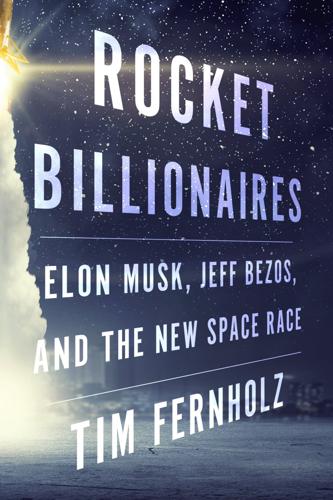
Rocket Billionaires: Elon Musk, Jeff Bezos, and the New Space Race
by
Tim Fernholz
Published 20 Mar 2018
More often than not, the space program had focused on enormous projects like the space shuttle that were designed to satisfy every possible user, from the military to the science community to satellite companies. But the first SpaceX rocket was designed to be what a tech start-up would call a “minimum viable product”—basically, the cheapest thing you could build that would attract paying customers. From there, the company could iterate and expand its offerings. Their minimum viable product would be called the Falcon 1. Yes, it’s a reference to the Millennium Falcon of Star Wars fame. Space pop culture helped animate SpaceX and make it unique. It didn’t name its rockets after Greek gods, like Titan or Apollo, or using bureaucrat-speak, like the Space Transportation System, as the space shuttle was officially known.
…
See also CRS-7 rocket; Dragon spacecraft; Falcon 9; Grasshopper; Merlin rocket; Raptor engine Air Force contract, 179–80 astronauts to ISS, 252 Big Falcon Rocket, 244–45, 251 Big Fucking Test Stand (BFTS), 88 Blue Origin competition, 160, 246–47 Cassiope satellite, 180 CCDEV competition and funding, 159–60, 162–64 company development and financing, 66–67, 70, 210, 227–28 floating launch pads, 201–2 funding for development, 39, 78, 82–84, 130–33 government relations, 80, 82 launch vehicle development, 63 Martian colonization plan, 49, 233 minimum viable product, 81 Musk investment, 43 and NASA, 13, 156, 209–10 NASA space taxi program, 113–14, 117, 130, 137 Obama visit to Kennedy Space Center, 146 “Rapid Unscheduled Disassembly” (RUD), 201–2 recruiting top engineers, 39, 117 retropropulsion and reusability, 196–202 satellite network proposal, 231–34 servicing the ISS, 41 SES-8, 180 small rocket, business plan for, 60–62, 171 small rocket schedule, 79 and Space Launch Center 39-A (SLC-39A), 169–70 success of, 174–76, 219–20 and ULA, 37–38 unveiling, 8 and US Air Force, 9, 176, 193 Stafford, Thomas, 96 Starbuck, Randy, 28 Star Wars.
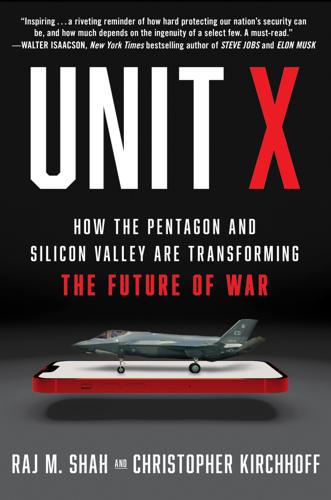
Unit X: How the Pentagon and Silicon Valley Are Transforming the Future of War
by
Raj M. Shah
and
Christopher Kirchhoff
Published 8 Jul 2024
In Silicon Valley, coders had long ago ditched that way of doing things and adopted what’s known as a “lean” methodology, pioneered by a DIUx supporter, the entrepreneur Steve Blank. That’s how DIUx did things. In the lean approach, coders start by talking to the people who will use the software. They break big products into small pieces and attack each one separately, working in six-week sprints. Coders crank out a “minimum viable product,” show it to the users, get feedback, create a new iteration, get more feedback, and so on. Coders can finish a program and get it into production in months or weeks—not years—and they can do it for one-tenth the cost. Eric saw the absurdity of using whiteboards to schedule logistics and recognized this as something that in military slang would be called FUBAR—effed up beyond all repair.
…
They understood that this was serious and we needed to do the right thing, that they were part of the solution and I needed them to lean into it. And it was clear to me by the look in their eyes that they got it.” Before they left the base, the DIUx and Pivotal team members were already doing some of the basic coding. Back in Mountain View they spent six weeks creating a minimum viable product—a rough version of the app, basically a user interface and menu structure that the airmen could evaluate. The coders took their feedback, wrote some more code, uploaded the new version, and got more feedback. As Starr recalls, they had an advantage because the tanker app wasn’t dependent on any other systems in the CAOC’s technology stack.
…
Risks Strategic Surprise,” 222 Schmidt Futures and, 130, 134 in South Korea, with the DIB, 89–92 Taiwan and, 218 as Ukraine advisor, 236 Ukraine War and, 201, 203, 204, 206, 214–15, 222–23, 230–34 Kissinger, Henry, 136, 141 Klain, Ron, 170 Kubasik, Chris, 188, 189 Kushnerska, Nataliia, 235 Langevin, Jim, 157 LaPlante, Bill, 213–14, 216 “lean” methodology, 54 minimum viable product and, 54, 58 LinkedIn, 123 Linwu Guo, 218 Liscovich, Andrey, 205–6, 231 Lockheed Martin, 1, 5, 80, 215 F-35 fighter jet, 116 SAR R&D, 81 ULA and, 123 Long, Letitia “Tish,” 189 Lopes, Crane, 24 Lord, Ellen, 154 L3Harris Technologies, 188–89 Luckey, Palmer, 124, 127, 208–9, 211–12, 217 Lynn, Bill, 172 MacArthur, Douglas, 238 Marcuse, Josh, 49 Matheny, Jason, 134–35 Mattis, James “Jim,” x, 102–3, 129, 179, 222 DIU and, 102–4, 108–9, 153–55, 242 as Trump’s Secretary of Defense, x, 102, 110, 153–54 McCain, John, x, 63–68 McCarthy, Kevin, 174 McCord, Brendan, 117–19, 121–22 AI use in warfare and, 118–19 Evolv Technology and, 117 JAIC and, 121–22 Project Maven and, 118–19, 121–22 McCord, Michael, 32, 33–34, 36 McFaul, Mike, 179 McMaster, H.
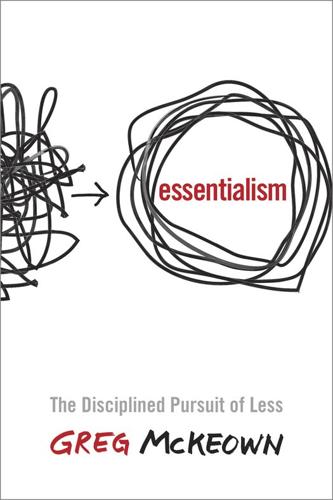
Essentialism: The Disciplined Pursuit of Less
by
Greg McKeown
Published 14 Apr 2014
See his website, http://heroicimagination.org/. 9. We got this idea from Glenn I. Latham’s The Power of Positive Parenting (North Logan, UT: P&T Ink, 1994). 10. Seen on the wall at Facebook. 11. Popularized by Eric Ries in an interview at Venture Hacks, March 23, 2009, “What Is the Minimum Viable Product?” http://venturehacks.com/articles/minimum-viable-product. 12. Peter Sims, “Pixar’s Motto: Going from Suck to Nonsuck,” Fast Company, March 25, 2011, www.fastcompany.com/1742431/pixars-motto-going-suck-nonsuck. 18. FLOW 1. Michael Phelps and Alan Abrahamson, No Limits: The Will to Succeed (New York: Free Press, 2008). 2.
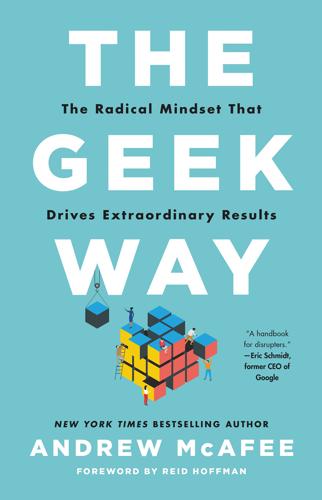
The Geek Way: The Radical Mindset That Drives Extraordinary Results
by
Andrew McAfee
Published 14 Nov 2023
As he writes about the first company where he tried the lean startup approach: We do everything wrong: instead of spending years perfecting our technology, we build a minimum viable product, an early product that is terrible, full of bugs and crash-your-computer-yes-really stability problems. Then we ship it to customers way before it’s ready. And we charge money for it. After securing initial customers, we change the product constantly—much too fast by traditional standards—shipping new versions of our product dozens of times every single day. This seems like a guaranteed way not to have satisfied customers. Why, then, has the lean startup approach been so successful? The idea of a “minimum viable product” has become widespread enough among startups that it’s become an acronym; entrepreneurs everywhere talk about what their MVP should be.
…
The geek community realized that it needed to update its rallying cry. What it settled on was “Move Fast and Fix Things.” The fact that the first two words didn’t change reveals that to the geeks, speed—iterating quickly, having a fast cadence, being agile—is nonnegotiable. They orient themselves around minimum viable products, ship cycles, and all the offshoots and varieties of agile development: sprints, scrums, kanban, DevOps, and so on. They argue passionately about the details of all of these, but I have yet to hear an argument from any business geek that we should go back to the days of the waterfall methodology and projects with long timelines, low observability, and high plausible deniability.
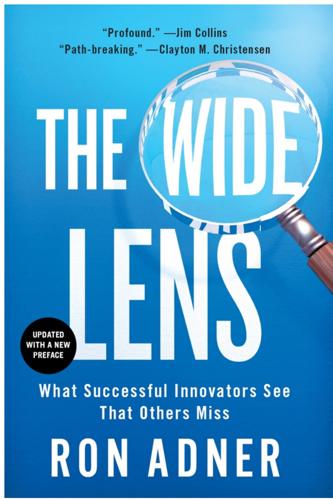
The Wide Lens: What Successful Innovators See That Others Miss
by
Ron Adner
Published 1 Mar 2012
However, this also doubled the price: the Roadster battery alone costs an estimated $36,000 (the base MSRP for the 2011 Roadster is $109,000), undermining its economic attractiveness to the mainstream. * Read the epilogue to the Better Place case on p. 235. * In the world of product development, a recent movement has been toward “lean start-up,” a key technique of which is the minimum viable product (also referred to as the minimum feature set). The minimum viable product approach espouses market testing with bare-bones prototypes that allows for maximum learning from test customer feedback with the least amount of product development. This enables cheaper and faster iterations in the product development cycle. It contrasts with the philosophy of presenting (relatively) feature-rich prototypes that will allow test customers to offer more complete reactions.
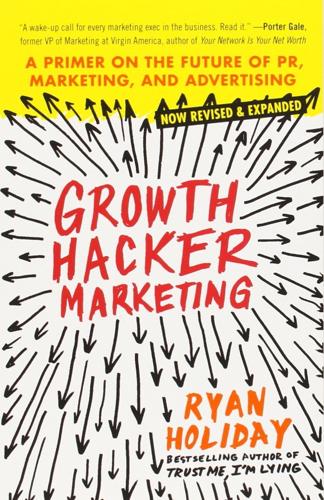
Growth Hacker Marketing: A Primer on the Future of PR, Marketing, and Advertising
by
Ryan Holiday
Published 2 Sep 2013
Both of these companies spent a long time trying new iterations until they had achieved what growth hackers call Product Market Fit (PMF). That is, the product and its customers are in perfect sync with each other. Eric Ries, author of The Lean Startup, explains that the best way to get to Product Market Fit is by starting with a “minimum viable product” and improving it based on feedback—as opposed to what most of us do, which is to try to launch with what we think is our final product. Today, it is the marketer’s job as much as anyone else’s to make sure Product Market Fit happens. Rather than waiting for it to happen magically, marketers need to contribute to this process.
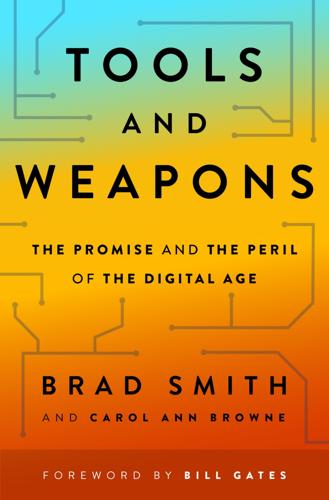
Tools and Weapons: The Promise and the Peril of the Digital Age
by
Brad Smith
and
Carol Ann Browne
Published 9 Sep 2019
We thought it was important for governments to keep pace with this technology, and an incremental approach would enable faster and better learning across the public sector. In essence, we borrowed from a concept that has been championed for start-up companies and software development, referred to as a “minimum viable product.” As defined by entrepreneur and author Eric Ries, it advocates creating “an early version of a new product that allows a team to collect the maximum amount of validated learning (learning based on real data gathering rather than guesses about the future) about customers.”16 In other words, don’t wait until you have the perfect answer to every conceivable question.
…
For one, there’s a strong case for governments to innovate in the regulatory space in a way that’s like innovation in the tech sector itself. Instead of waiting for every issue to mature, governments can act more quickly and incrementally with limited initial regulatory steps—and then learn and take stock from the resulting experience. In other words, take the concept of a “minimum viable product” and consider the type of approach we advocated for AI and facial recognition, described in chapter twelve. We readily recognized that just as for a new business or software product, the first regulatory step would not be the last, but we believed it was wiser for governments to take a series of more limited steps more quickly.
…
Congressional Internet Caucus, 321n3 Connect America Fund, 323n17 Constitution, U.S., 9 Bill of Rights, 7 First Amendment to, 12, 15, 33, 36, 102 Fourth Amendment to, 7–8, 14, 15, 23, 26, 33, 34, 36 Constitutional Convention, 77 consumer credit, 246 consumer privacy, see privacy Cook, Tim, 16, 252 Coons, Chris, 314n9 copyright, 284 Correal, Annie, 220 Courtois, Jean-Philippe, 181 Court TV, 104 Crovitz, Gordon, 104–5 Curie, Marie, 184 Customs and Border Protection, US (CBP), 215, 220–21 cyberattacks, 111, 112–14, 124, 205 attribution of, 118–19 denial-of-service attack in Estonia, 91–92 NotPetya, 69–72 WannaCry, 63–69, 71–74, 122, 294, 300, 301 Cyber Defense Operations Center, 111 cybersecurity, 61–76, 92, 112–15, 119, 123, 294–95, 300, 302 China and, 251, 252 data sharing and, 283 generational divide in views on, 71 national security and, 110–11 tech companies’ attitudes toward, 294–95 Cybersecurity Tech Accord, 119–21, 294, 300, 301 cybertribes, 92–93 cyberwar, cyberweapons, 69, 118, 130, 205–6, 289 Czechoslovakia, 40 D DACA (Deferred Action for Childhood Arrivals), 173–74 Daily, 219–20 Daily Beast, 83 Daily Princetonian, 13 Dartmouth College, 193 data, xiii, xiv, 195 creation of, 274 government, 283–84, 297 open, 269–86, 297 ownership of, 283 privacy and, 282–84; see also privacy sharing of, 275–76, 280–83 data centers, xiv–xv, xviii–xix, 8, 19, 21, 24, 42, 44–45, 52, 133, 303 of Microsoft, xiv–xix, 5, 14–15, 29–30, 34, 42–46, 48–56 data science, 181, 196, 207, 264, 323n9 biomedical science and, 273 Davos, World Economic Forum at, 191–93, 202 DCU (Digital Crimes Unit), 78–81, 85, 111, 112, 316n2 Declaration Networks Group, 167 Declaration of Independence, 7 deep fakes, 99 DelBene, Suzan, 314n9 democracy(ies), 10, 77–88, 89, 91, 95, 97, 107, 149, 227, 229, 289, 295, 301–4 disinformation campaigns and, 94, 289, 302 foreign interference in, 105–6 see also elections Democratic National Committee (DNC), 78, 278 Democratic National Convention (2016), 77, 78 Democrats, 82, 84–85, 106, 172, 278–81 denial-of-service attacks, 91–92 Denmark, 109–10, 112, 123, 130 Depression, Great, 164, 165, 171, 242–44 Deutsche Telekom, 122 Dick, Philip K., 211 Dickerson, Caitlin, 220 DeGeorge syndrome, 213 Dietterich, Thomas, 328n12 Digital Accountability and Transparency Act, 283–84 Digital Geneva Convention, 113–15, 128, 300 digital neutrality, 35 diplomacy, 109–30 disabilities, 200, 287–88 disinformation campaigns, 90, 94, 102, 104, 106–7, 289, 294, 302 Russia and, 95–98, 103 Downing, Richard, 59 DREAMers, 173–74 E Economic Graph, 181 economy, 241–43, 289, 299 Edelman Trust Barometer, 216–17 Edison, Thomas, 194 education, 156, 180, 182, 186, 207 computer science, 170, 177–81, 184 Microsoft’s school voucher program, 177 Microsoft’s Technology Education and Literacy in Schools program, 178–79 national talent strategy and, 175–76 Washington State Opportunity Scholarship program, 181–82 Workforce Education Investment Act, 182–84 Egan, Mike, 331n8 8chan, 99 Einstein, Albert, 129, 171, 209–10, 289 Eisenhower, Dwight D., 172 ElectionGuard, 87 elections, 84, 95 in France, 81 hacking and, 81, 86–88 U.S. presidential election of 2016, 81, 82, 139, 144, 157, 172, 189, 278–82, 331n8 voting machines and, 87 electricity, 70, 286, 289, 299 data centers and, xiv, xvi, 44 in rural areas, 159, 160, 163–66 Electronic Communications Privacy Act (ECPA), 22, 23, 33, 47 electronic grids and infrastructures, 70–71, 266, 299 El Paso, Tex., 233–35, 331n8 Ely, James, 110 email, 23, 24, 28, 49, 221, 237–38 phishing and, 79, 83 Russian hackers and, 81, 95 employee activism, 215–17 Empson, Mark, 70 encryption, 14–15, 19, 87, 149, 171, 283 endangered species, 288 engineering, 141–42 England, 316n2 National Health Service in, 62 see also United Kingdom Estonia, 89–93, 320n19 Étienne, Philippe, 123 European Commission, 131 European Court of Justice, 136, 137 European Union (EU), 43, 44, 47–48, 56, 124, 284, 314n10 Brexit and, 131–32, 139, 238 General Data Protection Regulation of, 131–32, 139–43, 146–49 International Safe Harbor Privacy Principles of, 133–36 Privacy Shield of, 137–38, 300 F FAA (Federal Aviation Administration), 336n10 Facebook, 2, 16, 44, 73–76, 85, 92, 95–99, 103, 104, 120–21, 124, 125, 133, 173, 253, 270, 272, 281, 285 Cambridge Analytica and, 144 Christchurch mosque shootings and, 99, 126 disinformation campaigns on, 90, 95–98 privacy and, 135, 144 facial recognition, 203, 211–30, 239, 264, 330n21 bias and, 198 legislation on, 226, 330nn19–20, 331n26 regulation of, 221–22, 224, 225, 228, 296 surveillance and, 227–28 Fancy Bear (APT28; Strontium), 78–81, 84–85 Fargo, N.Dak., 331n8 FarmBeats, 163 farmers, farming, 156, 163, 164, 171, 243–44 FBI (Federal Bureau of Investigation), 13, 22, 25, 27, 28, 36, 49, 63, 73, 78 data requested from Microsoft by, 31 FCC (Federal Communications Commission), 158, 323n17 Blue Book of, 101–2, 318nn27–28 broadband and, 153–56, 158, 322n6, 323n9 FedEx, 70 Ferguson, Bob, 173, 324n4 Ferry County, Wash., 151–55, 157, 166–67 fiber-optic cables, 13, 14, 42, 43, 153, 158, 159, 162, 163, 296 filing cabinets, xiv, 309n2 fire extinguishers, 236 fire horses, 231–32, 245, 247 First Amendment, 12, 15, 33, 36, 102 FISC (Foreign Intelligence Surveillance Court), 12 5G, 153, 266 Ford, Henry, 245, 246 4G, 158 Fourth Amendment, 7–8, 14, 15, 23, 26, 33, 34, 36 Fourth Geneva Convention, 113, 117–18 Fourth Industrial Revolution, 169 Fox News, 314n10 France, 126 National Assembly in, 224 presidential candidates in, 81 Revolution in, 319n36 1798 war with U.S., 9–10 terrorist attacks in Paris, 26–28 war between United Kingdom and, 105 Francis, James C., IV, 52, 314n10 Francis, Pope, 209–10 Frank, John, 3, 4, 8, 22 Franklin, Benjamin, 7, 77, 87, 107, 192 frauds and scams, 192–93, 316n2 Fred Hutchinson Cancer Research Center, 272–74, 276, 284–86 Freedom House, 222 freedom of speech, 102 French Revolution, 319n36 Friedman, Nat, 277 FTC (Federal Trade Commission), 29, 146, 310n6 G Galileo, 209 Garnett, Paul, 167 Gates, Bill, xviii, 29, 194, 240, 252, 254, 277, 325n11 Gates, Melinda, 252 Gebru, Timnet, 198 Gellman, Bart, 13 General Data Protection Regulation (GDPR), 131–32, 139–43, 146–49, 294 Genêt, Edmind Charles, 105–6, 319n36 Geneva, 129 Geneva Conventions, 113, 117–18, 320n16 Geography of Thought, The (Nisbett), 258, 261–62 George, John Earl, Sr., 165, 166 Germany, 39–41, 51–53, 56 Germany, Nazi, 39, 41, 61, 90, 129 Giant Company Software, xviii Gibson, Charlie, 314n10 Gilliland, Gary, 273 GitHub, 100, 277 Global Network Initiative (GNI), 333n16 Good, I.J., 328n12 Google, 16, 19, 44, 85, 97, 104, 120, 122, 124, 126, 133, 144, 173, 199, 216, 253, 256, 269, 272, 285 government sued by, 12, 18–19 Microsoft and, 12 military and, 203, 204, 215, 216 NSA and, 2, 4, 13 Plus, 270 YouTube, 2, 95, 99, 125, 126 GPS, 33–34, 228 Graham, Lindsey, 56, 57 Gramophone, 101 Graphika, 95 Great Depression, 164, 165, 171, 242–44 Greek philosophy, 259, 263 Green Bay, Wisc., 331n8 Green Bay Packers, 233, 331n8 Gregoire, Christine, 186, 189, 316n2, 325n20, 327n40 Guardian, 2–4, 8, 19 Gutenberg, Johannes, xiii, 209 Guterres, António, 205 Gutierrez, Horacio, 312–13n12 H hackers, hacking, 71, 79, 81, 86, 113, 266, 287 Chinese, 251, 263 elections and, 81, 86–88 hackers, Russian, 78, 82–83, 95 elections and, 81, 86 Strontium (Fancy Bear; APT28), 78–81, 84–85 Hamilton, 106, 249 Hamilton, Alexander, 105, 106 Harding, William, 100 Harvard Law Review, 330n24 Hastings, Reed, 16, 17, 335n7 Hatch, Orrin, 176, 314n9 He Huaihong, 261–62 Heiner, Dave, 194, 197 Heller, Dean, 314n9 Hippocratic oath for coders, 207–8 Hitachi, 122 Hoffman, Reid, 267, 292 Hogan-Burney, Amy, 25–26 Hollande, François, 28 HoloLens, 204, 238–39, 252 Hood, Amy, 174, 183, 188–89, 293–94, 306 horses, 240–45 fire, 231–32, 245, 247 Horvitz, Eric, 194, 199, 218, 327n5, 328n12 Hotmail, 21–22 Hour of Code, 179 House of Representatives, 7, 56, 57, 176 housing, 186–90, 302, 327n40 Houston, Tex., 96 Howard, David, 31–33, 35 HP, 120, 132 Huawei, 263 Hudson Institute, 84 Hu Jintao, 252 human rights, 260, 262–64, 292, 301–4, 333n16 Human Rights Watch, 206 Humphries, Fred, 55 Hutchinson, Bill, 272 Hutchinson Cancer Research Center, 272–74, 276, 284–86 I I, Robot, 193 IBM, 192, 285, 310n6 ImageNet, 197 immigration, 169, 171–76, 290 DACA program and, 173–74 facial recognition and, 214–15 national talent strategy and, 175–76 separation of children from parents at the border, 214, 215, 220–21 Immigration and Customs Enforcement, US (ICE), 214–15 Immigration Innovation Act (I-Squared), 176 information bubbles, 95 information technology, 70, 253, 298–300 China and, 253, 258, 263–67 persuasion and, 107 weaponization of, 97 infrastructure and grids, 70–71, 266, 299 Inslee, Jay, 325n20 Instagram, 95–96 Intel, 253 intellectual property, 113, 175, 207, 284, 336n9 International Campaign to Ban Landmines, 127 International Committee of the Red Cross (ICRC), 113, 118, 127, 320n16 International Humanitarian Law, 117 International Monetary Fund, 97 International Republican Institute (IRI), 84 international rules, 302 arms control, 116–18, 128, 302 International Safe Harbor Privacy Principles, 133–36 internet, 24, 41, 91, 106, 107, 192–93, 299, 335n9 Communications Decency Act and, 98–99 rural broadband and, 151–67, 289, 296, 322n6, 323n9 Internet Research Agency (IRA), 95–96 Interstate Commerce Commission, 299–300 Iowa, 164–66 Iran, 71 Iraq, 81 Ireland, 42–46, 49–56, 133, 135 Ischinger, Wolfgang, 96 ISIS (Islamic State of Iraq and Syria), 28 Israel, 81 J Jacobins, 319n36 Japan, xvii, 75, 122, 124, 129, 253 Japanese-Americans, internment of, 10 Jarrett, Valerie, 15–16 Jefferson, Thomas, 105, 106, 313n5 Jewish manuscripts, 288, 335n2 jobs, 186, 187, 297, 302 artificial intelligence and, 231–47 creation of, 156–58 digital content in, 177–78 Economic Graph and, 181 immigration seen as threat to, 175 unemployment, 152, 156 Jobs, Steve, 142, 241 Jones, Nate, 25–26, 49 Jourová, Věra, 136–37 Joyce, Rob, 73 Justice Department (DOJ), xx, 12, 13, 16, 18–19, 26, 31, 35, 36, 49, 53, 56, 148 K Kahan, John, 323n9 Kaljurand, Marina, 91–92 Kenya, 160 Kentucky School for the Blind, 287, 334n1 KGB, 92 Kids in Need of Defense (KIND), 220, 329n11 King County, Wash., 152, 157 Kirkpatrick, David, 192 Kissinger, Henry, 250, 259 Kistler-Ritso, Olga, 90–92, 317n2 Klobuchar, Amy, 176 Klynge, Casper, 109, 112, 123, 127, 128, 130 Kollar-Kotelly, Colleen, 335n7 Koontz, Elbert, 152–55, 167 Kubrick, Stanley, 328n12 Kushner, Jared, 173, 280 L Lagarde, Christine, 97 landmines, 127, 320n21 language translation, 197, 236, 239–40, 261 Law Enforcement and National Security (LENS), 24–26 Lay-Flurrie, Jenny, 334–35n1 Lazowska, Ed, 178, 325n11 LEADS Act (Law Enforcement Access to Data Stored Abroad), 314n9 League of Nations, 129 Lee, Kai-Fu, 269–70, 272, 273, 276 legal work, impact of technology on, 236, 237 Leibowitz, Jon, 29 LENS (Law Enforcement and National Security), 24–26 Leopard, HMS, 313n5 libraries, ancient, xiii, 309n1 Liddell, Chris, 173 Lincoln, Abraham, 10 LinkedIn, 100, 103, 126, 181, 325n18 Linux, 277 Long, Ronald, 43 LTE, 158, 162 M Macron, Emmanuel, 81, 123–24, 127 Mactaggart, Alastair, 144–49 Madison, James, 7 Maersk, 70–71 Mahabharata, The, 205 malware, 63, 68 see also cyberattacks Mamer, Louisan, 164–66 Manhattan Project, 171 Map to Prosperity, 157 Marino, Tom, 314n9 Markle Foundation, 325n18 Martin, “Smokey Joe,” 231 Martinon, David, 123 Mattis, James, 67 May, Theresa, 132, 238–39 Mayer, Marissa, 18 McCaskill, Claire, 83 McFaul, Michael, 117 McGuinness, Paddy, 56 McKinsey Global Institute, 241 Mercedes-Benz, 240, 326n31 Merck, 70 Meri, Lennart, 91 Merkel, Angela, 239 Mexico, 124 Microsoft: AccountGuard program of, 84, 85 AI ethics issues and, 199–201, 205, 218, 222, 223, 229–30, 294 AI for Earth team of, 288 antitrust cases against, xx, 12, 29, 96, 143, 148, 175–77, 291, 310n6, 335n7 Azure, 126, 140 Bing, 100, 104, 126, 140 board of directors of, 335n7 Brazil and, 48–49, 53 China and, 65, 250–52, 254–55, 259–61 Christchurch Call to Action and, 125–27 cloud commitments of, 30, 33, 292 Code.org and, 179 Cyber Defense Operations Center of, 111 Cybersecurity Tech Accord and, 119–21 data centers of, xiv–xix, 5, 14–15, 29–30, 34, 42–46, 48–56 Digital Crimes Unit (DCU) of, 78–81, 85, 111, 112, 316n2 ElectionGuard system of, 87 engineering structure at, 142 facial-recognition technology of, 213–15, 222–24, 226–27, 229–30 and FBI’s request for customer data, 31 Friday meetings of, 62 General Data Protection Regulation and, 140–43, 146–47, 294 Giant Company Software and, xviii GitHub, 100, 277 Google and, 12 government sued by, 12–13, 15, 16, 18–19, 33, 35–37, 83 housing initiative of, 186–90, 327n40 Immigration and Customs Enforcement and, 214–15 Ireland and, 42–45, 49–56 Law Enforcement and National Security (LENS) team of, 24–26 LinkedIn, 100, 103, 126, 181, 325n18 Muslim travel ban and, 173 NSA and, 1–4, 8, 13–14 Office, 84, 140, 253, 254 OneDrive, 126 open-source code and, 277–78 Patch Tuesdays of, 74 Philanthropies, 178–80 privacy legislation advocated by, 132, 146–48, 321n3 Research (MSR), 170–71, 194–95, 197, 237, 275, 328n12 Research Asia (MSRA), 255 Rural Airband Initiative of, 160–62, 166–67 Russia’s message to, 86 school voucher program of, 177 security feature development in, 111 Senior Leadership Team (SLT), 15, 62, 141, 221, 274, 307 Strontium and, 78–81, 84–85 Tay, 255–56 TechFest, 170–71 Technology Education and Literacy in Schools (TEALS) program of, 178–79 TechSpark program of, 233, 331n8 Threat Intelligence Center (MSTIC) of, 63, 78–79, 84 Windows, xx, 12, 29, 63–65, 203, 212, 253, 270 Word, 50, 264 Xbox, 72, 100, 126, 140, 160 military weapons, 117–18, 127, 202–6, 264, 329n29 artificial intelligence in, 202–6, 215, 216 nuclear, 116–17, 210 minimum viable product, 225–26, 296 Minority Report, 211–12 missiles, 66–67 MLATs (mutual legal assistance treaties), 47–49, 52 Mobility Fund, 158, 323n17 Moglen, Eben, 314n8 Mook, Robby, 279 Morrow, Frank, 125 MSTIC (Microsoft Threat Intelligence Center), 63, 78–79, 84 Munich Security Conference, 96–97, 208 Muslims, 288, 335n2 Christchurch mosque shootings, 99–100, 102, 125–26 travel ban on, 173 Myerson, Terry, 65 Myhrvold, Nathan, 194–95 Mylett, Steve, 187 N Nadella, Satya, 28–29, 62, 65, 66, 73, 115, 126–27, 141–43, 172–74, 186–88, 199, 200, 204–5, 218, 219, 221, 239–40, 252, 274, 276, 277, 289, 292 National Australia Bank, 213 National Federation for the Blind, 334n1 National Geographic Society, 161 National Health Service, 62 National Human Genome Research Institute, 213 National Institute of Standards and Technology, 221–22 nationalism, 112, 300–301 National Press Club, 29 national security: cybersecurity and, 110–11 individual freedoms vs., 9–10 National Security Council, 26 NATO, 82, 124, 204 Cooperative Cyber Defense Centre of Excellence, 92, 320n19 Nazi Germany, 39, 41, 61, 90, 129 negotiations, 175 Netflix, 16, 335n7 network effects, 270 neural networks, 196–97 New Deal, 164 NewsGuard, 104–5 New York, N.Y., 245 fire horses in, 231–32, 245, 247 New York Times, 63, 65–67, 99, 118, 219–20 New York University, 333n16 New Zealand, 75, 124, 125–27, 130 Christchurch mosque shootings in, 99–100, 102, 125–26 NGOs (nongovernmental organizations), 127, 128, 208, 302, 303 Nimitz, USS, 203 9/11 terrorist attacks, 8–9, 71, 72 1984 (Orwell), 227 Nisbett, Richard, 258, 261–62 North Korea, 63, 64, 67–69, 71–74 missile launch of, 67 Noski, Chuck, 335n7 NotPetya, 69–72 NSA (National Security Agency), 3, 8–9, 13, 15, 73 Google and, 2, 4, 13 Microsoft and, 1–4, 8, 13–14 PRISM program of, 1–4, 8, 9, 310–11n4 Snowden and, 4–5, 8, 9, 13–14, 17–19, 25, 41 Verizon and, 2–3 WannaCry and, 63–69, 71–74 and White House meeting with tech leaders, 16–19 nuclear power, 143–44 nuclear weapons, 116–17, 210 O Obama, Barack, 15–16, 26, 53, 83, 131, 174, 179–80, 278, 279, 284 meeting with tech leaders called by, 16–19 Office, 84, 140, 253, 254 Office of Personnel, US (OPM), 251, 263 O’Mara, Margaret, 297, 335n9 OneDrive, 126 Open Data Initiative, 285 Oracle, 120 Orwell, George, 227 O’Sullivan, Kate, 119–20 Otis, James, Jr., 6–7, 311nn14–15 Ottawa Convention, 320n21 Oxford University, 95 P Paglia, Vincenzo, 208–9 Pai, Ajit, 153–54 Pakistan, 21–22 Palais des Nations, 129 Paltalk, 2 Panke, Helmut, 335n7 paralegals, 236 Paris, terrorist attacks in, 26–28 Paris Call for Trust and Security in Cyberspace, 123–25, 127, 128, 300, 301 Paris Peace Forum, 123 Parscale, Brad, 280, 281 Partnership on AI, 200–201 Partovi, Hadi, 179 PAWS (Protection Assistant for Wildlife Security), 288 PBS NewsHour, 85–86 Pearl, Daniel, 21–22 Pearl Harbor attack, 10 Pelosi, Nancy, 57 Penn, Mark, 312–13n12 Pettet, Zellmer, 242–44 Petya, 69 Pew Research Center, 155–56, 323n9 phishing, 79, 83 Pickard, Vincent, 101 Pincus, Mark, 17–18 poachers, 288 Posner, Michael, 333n16 post office, 7, 192 Prague Spring, 40–41 presidential election of 2016, 81, 82, 139, 144, 157, 172, 189, 278–82, 331n8 Preska, Loretta, 314n10 Priebus, Reince, 279–80, 282 Princeton University, 13, 174, 218, 288, 314n10, 335n2 printing press, xiii, 209 PRISM (Planning Tool for Resource Integration, Synchronization, and Management), 1–4, 8, 9, 310–11n4 Pritzker, Penny, 136, 137, 250 privacy, 5–6, 21, 22, 30, 39–59, 131–49, 193, 229, 289, 300, 301 artificial intelligence and, 171, 199–200, 207 California Consumer Privacy Act, 147–48 data sharing and, 282–84 differential privacy, 282–83 Facebook and, 135, 144 facial recognition and, see facial recognition Fourth Amendment and, 7–8, 14, 15, 26 General Data Protection Regulation and, 131–32, 139–43, 146–49 legislation on, 132, 146–48, 321n3 Privacy Shield and, 137–38, 300 public attitudes about, 143 public safety and, 21–37, 222 reasonable expectation of, 7–8, 34 right to, 330n24 Safe Harbor and, 133–34 search warrants and, see search warrants social media and, 145 Wilkes and, 5–6, 23 see also surveillance Privacy Shield, 137–38, 300 Private AI, 171 Progressive movement, 245 ProPublica, 197–98 Proposition 13, 146 Purdy, Abraham, 232 Q Quincy, Wash., xiv–xv, 5, 34, 42 R racial minorities, 184–85 radio, 95, 100–102, 106, 159 Radio Free Europe, 107 radiologists, 236–37 railroads, 110, 299–300 Railroads and American Law (Ely), 110 ransomware, 68 WannaCry, 63–69, 71–74, 122, 294, 300, 301 Rashid, Rick, 237, 238 Reagan, Nancy, 116 Reagan, Ronald, 23, 116, 146 Red Cross, 113, 118, 127, 320n16 Reddit, 99 Redmond, Wash., 187 Reform Government Surveillance, 16–17 regulation, 102, 143, 144, 192, 206–7, 219, 224, 266, 295–98, 300, 301, 303 of artificial intelligence, 192, 296 China and, 258 of facial recognition, 221–22, 224, 225, 228, 296 of governments, 301–2 of railroads, 299 of social media, 98, 100, 102–4, 144 Republic, Wash., 151–52, 155, 167 Republican National Committee (RNC), 279–82 Republicans, 82, 106, 172, 278–80 International Republican Institute, 84 Republic Brewing Company, 167 restaurants, fast-food, 235, 241 Ries, Eric, 225 Riley v.

Exponential Organizations: Why New Organizations Are Ten Times Better, Faster, and Cheaper Than Yours (And What to Do About It)
by
Salim Ismail
and
Yuri van Geest
Published 17 Oct 2014
These new business models have, potentially, eight new value drivers to generate revenues, differentiate them from competitors, and allow for a long-term strategy to align with adjacent ExOs in a particular industry to fully disrupt incumbents, rather than just one individual good or service offered. Talk about a powerful double-disruption scenario. Step 7: Build the MVP A key output of the Business Model Canvas is what’s called the Minimum Viable Product, or MVP. The MVP is a kind of applied experiment to determine the simplest product that will allow the team to go to market and see how users respond (as well as help find investors for the next round of development). Feedback loops can then rapidly iterate the product to optimize it and drive the feature roadmap of its development.
…
As David Butler, Coke’s vice president of innovation and entrepreneurship, said recently, “That has become our vision—to make it easier for starters to be scalers and scalers to be starters.” To deliver on this startup philosophy, Coca-Cola is working with Steve Blank and Eric Ries to implement their Lean Startup philosophy across the entire corporation [Experimentation]. Multiple small efforts, each with an MVP (Minimum Viable Product) will iterate assumptions and make this approach available to anyone in the company via an initiative called Open Entrepreneurship. The effects of Experimentation have been immediate: Butler reports that due to the initiative, Coke’s sustainability goals have already improved by 20 percent.

Lab Rats: How Silicon Valley Made Work Miserable for the Rest of Us
by
Dan Lyons
Published 22 Oct 2018
The second Internet boom, also known as Web 2.0, was starting to take off, and suddenly people were launching start-ups all over the place. But most of these people had never run companies before. Some had never even had jobs before. They had no idea what they were doing. Ries provided them with a road map. Like Agile, Lean Startup has its own lingo and acronyms, like “minimum viable product” (MVP), “leap of faith assumptions” (LOFA), and a process called “Build-Measure-Learn.” Just as Agile evolved from being a few ideas about how to write software into a magical methodology that can be used for almost anything, including transforming entire organizational cultures, so Lean Startup has been embraced by disciples who have imbued the methodology with near-supernatural powers.
…
That’s the gospel of shareholder capitalism, the doctrine created by Milton Friedman. In the second dotcom boom that doctrine has been pushed to new extremes by companies that have adopted a grow-at-all-costs, investors-take-all business model. It has been great for VCs and oligarchs, but everyone else gets shortchanged: CUSTOMERS get “minimum viable products” (translation: shoddy stuff) from companies whose mantra is “move fast and break things.” Internet companies spy on customers, invade their privacy, and sell their data. For companies like Facebook, the users are the product. We exist only to be packaged up and sold to advertisers. COMMUNITIES should benefit when they are home to the headquarters of wealthy corporations, but instead communities get shortchanged as tech giants dodge taxes, finding ways to stash their enormous profits overseas in offshore accounts.
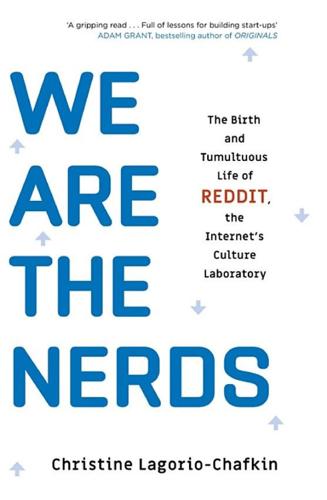
We Are the Nerds: The Birth and Tumultuous Life of Reddit, the Internet's Culture Laboratory
by
Christine Lagorio-Chafkin
Published 1 Oct 2018
He advised the founders, instead of being thorough, to release early versions of their work that were lightweight enough to evolve. Graham later wrote on his blog that “best practices…interfere with the primary function of software in a startup: to be a vehicle for experimenting with its own design.” Later, he would clarify this idea of what would soon become known as “minimum viable product.” He said, “The sooner you get it out there, users can start telling you what they want instead of you guessing. If you sit down and think of the perfect implementation, the problem is you’re thinking of the perfect implementation of the wrong thing.” Graham’s philosophy is counterintuitive for perfectionists, compliance junkies, or straight-A types who thrive within rigorous institutions.
…
Sure enough, when Graham typed www.reddit.com into his browser, he found an actual website with a blue toolbar at the top that read “Reddit” in white, alongside four navigation links, which read “profile,” “browse,” “submit,” and “help.” A handful of headlines and hotlinks dribbled down the white page below. It was simple, programmed to display just a default sans serif font, which materialized as Verdana on most browsers. There were no flourishes. To Graham, that was perfect, a truly minimum viable product, live, online. Graham was satisfied to know Huffman and Ohanian could do it. It was immediately apparent that they hadn’t committed the other sin he’d mentioned, waiting to be perfect. The links were just hyperlinked headlines, though each provided some context: They displayed the user who’d submitted them—at this point either Ohanian or Huffman.
…
The site crashed frequently, and the maintenance of posting new articles and rebooting the server exhausted a lot of his day-to-day energy. Reddit had been built and launched quickly—so quickly that both Huffman and Graham knew the site would soon outgrow some of its original programming infrastructure. This fact, now daunting, had been by design: Launch fast, with a minimum viable product—and save perfection and scalability for later. In startup vernacular, this is known as incurring “technical debt.” And Reddit’s hulking loan was coming due. Graham urged Huffman and Ohanian to have dinner with Chris Slowe, their batchmate from Y Combinator. Slowe spent his days writing software and attempting to freeze light, and looked the part, with his T-shirts tucked into his high-waisted, belted light-wash jeans.

A More Beautiful Question: The Power of Inquiry to Spark Breakthrough Ideas
by
Warren Berger
Published 4 Mar 2014
Ries maintains that entrepreneurs, existing companies—or anyone trying to create something new and innovative—must find ways to constantly experiment and quickly put new ideas out into the world for public consumption, rather than devoting extensive resources and time to trying to perfect ideas behind closed doors. Ries urges businesses to focus on developing what he calls “minimum viable products”—in effect, quick, imperfect test versions of ideas that can be put out into the marketplace in order to learn what works and what doesn’t. But this is more than a business strategy. The basic principles of the test-and-learn approach apply in almost any situation where people are trying to solve problems in dynamic, uncertain conditions.
…
Ries says you start with the acknowledgment that “we are operating amid all this uncertainty—and that the purpose of building a product or doing any other activity is to create an experiment to reduce that uncertainty.” This means that instead of asking What will we do? or What will we build? the emphasis should be on What will we learn? “And then you work backwards to the simplest possible thing—the minimum viable product—that can get you the learning,” he says. What is your tennis ball? (and other entrepreneurial questions)20 Drew Houston, founder of the online storage service Dropbox, thinks all would-be entrepreneurs should try to answer the above question. “The most successful people are obsessed with solving an important problem, something that matters to them,” according to Houston.

Peers Inc: How People and Platforms Are Inventing the Collaborative Economy and Reinventing Capitalism
by
Robin Chase
Published 14 May 2015
Nor would they put in a specific time (such as 3:30 p.m.), or be willing to tell us how many seats they had in their car. How the heck did people expect to offer a ride or find a ride with so little information? My engineers spent the next months undoing what we had just done—simplifying, simplifying, simplifying. Today we talk about building a minimum viable product. And with Zipcar, this is what we had effectively done because of our lack of money, time, and knowledge of the sector. With GoLoco, I was better financed and knew what I was doing—or so I thought. Wrong! It’s hard not to overbuild your starting platform. You’ve given it so much thought! You’ve spent so much time doing surveys and focus groups!
…
-based GoLoco and begin telling the story of Frédéric Mazzella, my friend and founder of the successful French ridesharing company BlaBlaCar, who drove competently through phase two. Four long years passed between Fred’s first vision and the development of a platform that could finally sing. He personally programmed the initial minimum viable product but knew that he would soon need to hire professional engineers. He too worked through the reality of sloppy peer production and learned how to improve the quality of peer-to-peer offerings. He experimented with several business models. And he had some very good luck (French rail strikes in 2007, and the 2010 eruption of the Icelandic volcano Eyjafjallajökull that shut down European air transport for eight days, stranding millions of passengers) just when he needed it; he was also well prepared to take advantage of that and make the service known.
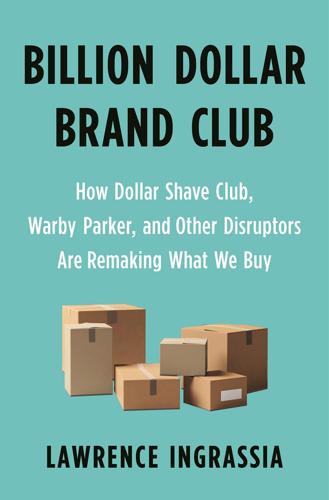
Billion Dollar Brand Club: How Dollar Shave Club, Warby Parker, and Other Disruptors Are Remaking What We Buy
by
Lawrence Ingrassia
Published 28 Jan 2020
The goal was to replicate as closely as possible, over the phone or online, the type of personal advice and service they would normally get when visiting an audiologist at a clinic—and, not coincidentally, to deflect criticism from audiologist trade groups about the risks of buying online. In June 2015, Eargo secured $13.6 million in new VC financing in another investment round led by Maveron and began selling what Raphael Michel calls a “minimum viable product”—a Silicon Valley term for a product with enough features to satisfy early customers—even as Eargo was working on a second-generation device. “It’s not like we were a large company like Apple and we could take five years to get the perfect product, like the Apple Watch or iPad,” he explains.
…
About two-thirds of its customers are first-time hearing aid buyers, and on average they are four to five years younger than typical first-time users. This suggests that Eargo can expand the market of hearing aid users, Gormsen notes, and will not have to depend on stealing customers from established players. In line with Raphael Michel’s early vision of starting with a minimum viable product and then continually improving it, Eargo is also expanding its hearing aid options, to appeal to the broadest range of customers. In 2019, it introduced its third-generation hearing aid, the Neo, which added features that higher-end competitors already had, such as Bluetooth connectivity so that the Eargo’s settings can be programmed by the user with a smartphone or from afar by a technician.

SAM: One Robot, a Dozen Engineers, and the Race to Revolutionize the Way We Build
by
Jonathan Waldman
Published 7 Jan 2020
Conventional wisdom, which spewed forth from places like GM and Kodak, was: Thy products shall not be released until perfect, lest we disappoint customers and harm our reputation. Eric Ries, the young Yale-educated author of The Lean Startup, argued for proceeding unconventionally. Ries, whose first two companies had failed, proposed abandoning the quest toward the perfect thing; instead, he said, CEOs should aspire to build an MVP, or minimum viable product. A smart start-up, he wrote, ought to hurriedly ship a terrible, bug-ridden, unstable product—and then ask for customer feedback and change that product constantly. He said the path to success was not signed with a good business plan and paved with perseverance; but marked by a continuous process of experimentation, mistakes, and learning.
…
“I’d like to swear up and down at Ken for not getting shit done,” Scott said, but he knew that wouldn’t be fair. In fact, he was partly grateful for what Ken had done: He’d exposed a rash of new bugs, and Scott planned to keep a cool head and engineer his way out of them. In a way, this was what he had asked for with a minimum viable product. The timing sucked, for sure, and Eric Ries had perhaps understated the pain associated with his approach. If anything, Scott was, just like Zak, annoyed at Stephen. For nearly a year, Stephen’s competence had masked many of SAM’s issues. But without Stephen, CR wouldn’t have had numbers to show off—so it was hard to be mad at him.

WTF?: What's the Future and Why It's Up to Us
by
Tim O'Reilly
Published 9 Oct 2017
Taxi Battle,” Globalist, September 27, 2015, https://www.theglobalist.com/uber-taxi-battle-commercial-transport/. 185 “The entire transaction”: Varian, “Beyond Big Data,” 9. 186 “maximum amount of validated learning about customers”: Eric Ries, “Minimum Viable Product: A Guide,” Startup Lessons Learned, August 3, 2009, http://www.startuplessonslearned.com/2009 /08/minimum-viable-product-guide.html. 186 Feedback loops are tight: For an excellent account of this process, see Chris Anderson, “Closing the Loop,” Edge, retrieved March 31, 2017, https://www.edge.org/conversation/chris_anderson-closing-the-loop. 187 “500 pages of untested assumptions”: Tom Loosemore, “Government as a Platform: How New Foundations Can Support Natively Digital Public Services,” presented at the Code for America Summit in San Francisco, September 30–October 2, 2015, https://www.youtube.com/watch?
…
From the very first day a company is funded by venture capitalists, or launches without funding, its success is dependent on achieving key metrics such as user adoption, usage, or engagement. Because the service is online, this feedback comes in near-real time. In the language of Eric Ries’s popular Lean Startup methodology, the first version is referred to as “minimum viable product (MVP),” defined as “that version of a new product which allows a team to collect the maximum amount of validated learning about customers with the least effort.” The goal of every entrepreneur is to grow that MVP incrementally till it finds “product-market fit,” resulting in explosive growth.
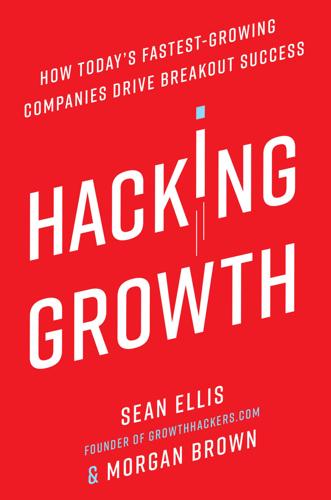
Hacking Growth: How Today's Fastest-Growing Companies Drive Breakout Success
by
Sean Ellis
and
Morgan Brown
Published 24 Apr 2017
Building on these methods was natural for Sean and other start-up teams, because the companies that Sean advised and others that developed the method were stacked with great engineering talent familiar with the methods, and because the founders were inclined to apply a similar approach to customer growth as the engineers applied to their software and product development. Central to agile development is increasing the speed of development, working in short “sprints” of coding, and regularly testing and iterating on the product over time. The Lean Startup adopted the practice of rapid development and frequent testing, and added the practice of getting a minimum viable product out on the market and into the hands of actual users as soon as possible, to get real user feedback and establish a viable business. Growth hacking adopted the continuous cycle of improvement and the rapid iterative approach of both methods and applied them to customer and revenue growth.
…
To my Dad, who has always driven me to expect more of myself and do the best I could, I am grateful to have your standard to live up to. And to my brother, Graeme, my best friend, thanks for a lifetime of friendship and memories. I love you all. —Morgan INTRODUCTION 1. Eric Ries, “How Dropbox Started as a Minimum Viable Product,” TechCrunch, October 19, 2011, techcrunch.com/2011/10/19/dropbox-minimal-viable-product/. 2. I’d then moved over to work on growth at LogMeIn, a service started by the Uproar founder that allowed users to access their files, email, and software from any computer in the world. We managed to turn the company into the market leader despite a massive marketing campaign waged by its main competitor, GoToMyPC.
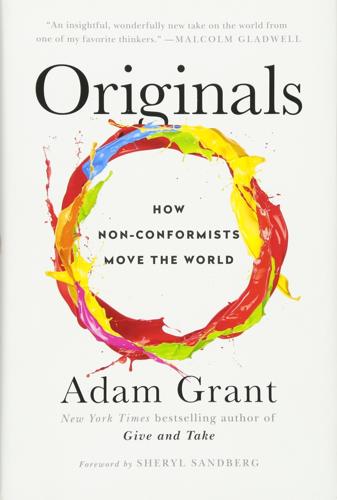
Originals: How Non-Conformists Move the World
by
Adam Grant
Published 2 Feb 2016
first ideas are often the most conventional: Brian J. Lucas and Loran F. Nordgren, “People Underestimate the Value of Persistence for Creative Performance,” Journal of Personality and Social Psychology 109 (2015): 232–43. Daily Show cocreator Lizz Winstead: Personal interview with Lizz Winstead, February 8, 2015. minimum viable product: Eric Ries, The Lean Startup: How Today’s Entrepreneurs Use Continuous Innovation to Create Radically Successful Businesses (New York: Crown, 2011). false negatives are common: Charalampos Mainemelis, “Stealing Fire: Creative Deviance in the Evolution of New Ideas,” Academy of Management Review 35 (2010): 558–78; Aren Wilborn, “5 Hilarious Reasons Publishers Rejected Classic Best-Sellers,” Cracked, February 13, 2013, www.cracked.com/article_20285_5-hilarious-reasons-publishers-rejected-classic-best-sellers.html; Berg, “Balancing on the Creative High-Wire.”
…
As the famous line often attributed to Henry Ford goes: “If I had asked my customers what they wanted, they would have said a faster horse.” Instead, creators ought to build a car and see if customers will drive it. That means identifying a potential need, designing what The Lean Startup author Eric Ries calls a minimum viable product, testing different versions, and gathering feedback. * One category of circus acts was universally disliked by managers, test audiences, and creators: clowns. It’s not a coincidence that one Seinfeld episode revolves around clowns striking fear into the hearts of adults as well as children
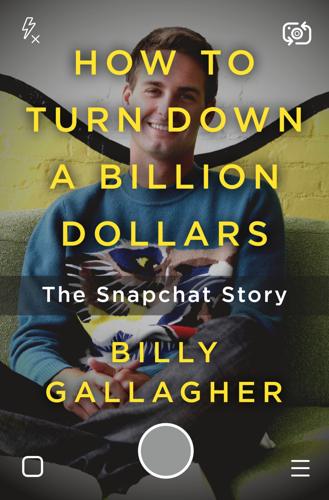
How to Turn Down a Billion Dollars: The Snapchat Story
by
Billy Gallagher
Published 13 Feb 2018
But hyping Clinkle to the press was one of Lucas’s fatal errors, as he put inordinate pressure on the young company. Evan and Bobby shipped a minimum viable product in Picaboo—that is, the lowest-quality product that’s still acceptable to early users, who will provide feedback to improve the product. It took Evan and Bobby years to add in all the features they wanted beyond the initial disappearing picture-sharing app only for iPhones. They were able to see how people used the app and iterate quickly. More than anything, what killed Clinkle was Lucas’s refusal to ship a minimum viable product. Lucas killed Clinkle as much as Evan birthed Snapchat. Clinkle got bogged down working through regulations and trying to bring a banking partner on board to legally process users’ money.

Supremacy: AI, ChatGPT, and the Race That Will Change the World
by
Parmy Olson
“That is the essence of hacking. And it is also the essence of Americanness. It is no accident that Silicon Valley is in America, and not France, Germany, England, or Japan. In those countries, people color inside the lines.” The path was almost simple, Graham taught. Bootstrap your company, start with a minimum viable product, and optimize it over time. Work in a tight bubble, because it was better to have ten people love what you made than thousands liking it. And don’t be afraid to bend the rules along the way. In fact, why not rewrite society itself? Graham’s ideas would eventually strike a huge chord in Silicon Valley and fuel a prevailing new wisdom that the vision of a start-up’s creators was so sacrosanct that they should be allowed to act with impunity, like gods.
…
While Google had chosen to keep innovations like this under wraps, Altman wanted as many people as possible to try OpenAI’s new creation. As Silicon Valley’s start-up sage, he’d been advising entrepreneurs to throw their products out into the world for years. Technologists sometimes refer to this as a “ship it” strategy, or releasing a “minimum viable product,” but the idea is the same: get software into the hands of users as quickly as possible so you can create a feedback loop between yourself and them, essentially using the public as your guinea pigs. This was the credo on which giants like Facebook, Uber, and Stripe were built, and Altman was a staunch believer.
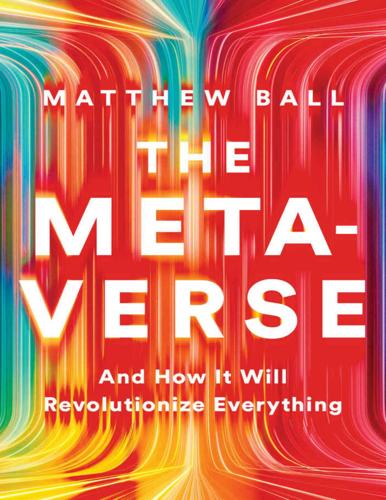
The Metaverse: And How It Will Revolutionize Everything
by
Matthew Ball
Published 18 Jul 2022
Timothy Witham, who led the surgery and is the director of the hospital’s Spinal Fusion Laboratory, “It’s like having a GPS navigator in front of your eyes in a natural way so you don’t have to look at a separate screen to see your patient’s CT scan.”6 Dr. Witham’s GPS analogy reveals the critical difference between the so-called minimum viable product of commercial AR/VR and that for consumer leisure. To gain adoption, consumer VR/AR headsets must be more compelling or functional than the experiences offered by alternatives, such as a console video game or smartphone messaging app. The immersion offered by mixed-reality devices is a differentiator, but as discussed in Chapter 9, there are still many drawbacks.
…
See also governance; identity Metaverse, the arrival of, 239–49 centralized vs. decentralized server models, 59–60 coming fight to control, 13–17 concept of “metagalaxies,” 43, 113–14 confusion and uncertainty in defining, 18–28 critical mass of working pieces enabling, 244–48 definition of, 29, 57 dystopic sci-fi fears of, 3, 6, 17, 22, 289, 307n economic value of, 269–73 elements missing from author’s definition of, 57–59 the entertainment industry in, 256–61 etymology and history of the term, 3–6, 43 fashion and advertising in, 262–66 the foundation of the internet and the development of, 14–17 the future of education in, 250–54 governance of, 33, 58, 211, 214, 222, 295–302 history of social virtual worlds, 7–13 importance of trust in, 283–89 industry and enterprise in, 266–68 as interoperable network, 37–42 lifestyle businesses in, 254–56 as massively scaled, 29, 42–44 as moral imperative, 94 multiple national metaverses, 302–4 nature of metaversal existence, 290–95 next drivers of growth for, 248–49 persistence of, 44–48 positioning of tech giants for, 273–83 “proto-Metaverses,” 7–9, 13–14, 45, 193, 284 real-time rendering of, 36–37 reducing abuse, 291–92 sex and sex work and, 261–62 as synchronous, 48–53 as 3D environment, 29–30, 33–36, 58 trajectory of, 305–9 unlimited users and individual presence in, 54–58 as virtual world, 29–33 wars of supremacy over, 13–14 winners and losers, 269–89 Zuckerberg’s vision of, xi–xii, 18–19, 20–21, 239, 245, 287, 289–90 Metaverse Alliance (South Korea), xii–xiii, 303 Metcalfe’s Law, 16, 24, 246 microelectromechanical systems (MEMS), 152 Micron Technologies, 148 Microsoft, xii criticism of the Apple App Store, 198–99 DirectX collection of APIs, 175 “Embrace, Extend, Extinguish” strategy, 25 first mobile phone from, 25 Halo, 18, 139 HoloLens, 18, 141, 144–46, 147, 267–68, 279 market capitalization of, 166 Minecraft acquisition, 114, 279 PlayFab, 107, 108, 117 Sony’s partnership with, 281n see also Gates, Bill; Nadella, Satya; Windows; Xbox gaming platform Microsoft Azure, 18, 107, 144, 201, 279, 281n Microsoft Flight Simulator (MSFS), 17, 72–78, 92–93, 104, 279 Microsoft Teams, 18, 51, 271 Minecraft, 10–11, 111–12, 114–18, 278–79 “minimum viable product,” 268 “mirror worlds.” See digital twins misinformation/radicalization, 17, 290–91 mixed reality. See augmented reality (AR); virtual reality (VR) “mobile internet era,” 12, 35, 63, 64, 240, 242–44, 269, 291 Mojang, 114 Monsters University, 36, 89–90 Moore’s Law, 100, 161 “most favored nations” (MFN) clauses, 180–81, 183 Motorola, 158, 212, 213 multiplayer games battle royale games, 32–33, 91–93, 98, 114–15, 117n, 146–47, 268, 275 computing and, 75 “massively multiplayer” online games, 55 matchmaking, 81, 176, 178 the problem of concurrent users (CCUs), 54–55, 90–92, 122, 146, 234, 245, 261, 268, 283 see also specific games and gaming platforms Multi-User Dungeons (MUDs) and related topics, 7–8, 12, 13–14, 30 Musk, Elon Neuralink, 154 SpaceX, xi, 4, 87 Starlink, 87 Tesla, 101, 166, 271 X.com, 61 MySpace, 34, 274 Nadella, Satya, xii, 18, 141, 239, 279–80 Naked Sun, The, 5 Namco, 173 NASA, ix NASDAQ, 309 National Advisory Committee for Aeronautics, ix National Basketball Association (NBA), 218, 259 National Football League (NFL), 139 National Science Foundation, x native apps, 26, 194–95 near-field communication (NFC), 142, 189, 199–200, 203 Nest Labs, 158 “netcode” solutions, 81–82 NetEase, 19–20 Netflix, 19, 49–53, 96, 100, 111, 187, 194, 196–98, 244, 270, 276n Netherlands, 203 Network Attached Storage (NAS) drive, 74 networking, 71–88, 85 acceptability thresholds in, 80–81 bandwidth and, 27, 41, 48–51, 64, 72–79, 80, 96, 100, 305 broadband operators, 15–16, 38, 49, 271 fiber optic networks, 27, 84, 87, 128 4G networks, 81, 87, 244, 245, 249 5G networks, 87, 243 the internet as a “network of networks,” 16, 23–24, 62 latency and, 27, 48–53, 64, 79–88, 95–96, 99–100, 230, 243, 248, 271, 305 network gateways, 130 rent-seeking and, 15, 299 3G networks, 243 undersea cables, 84–85, 85 Neuralink, 154 Neuromancer, 5–6, 8 Newsweek, 308 New World, 277 New York Times, xv, 4–5, 73, 224, 256 as an app, 149, 185, 194, 196, 202 Live Election feed, 49 Nexon, 105 NextVR, 144 Niantic, 115, 144, 275 Nike, 121, 139, 189–90, 208, 248, 264 Nintendo, 11, 104, 151–52, 173, 303 Nintendo Entertainment System (NES), 32, 173 Nintendo Switch, 30–32, 75, 97, 134, 174–76 Nintendo Wii, 132 Nokia, 136–37 non-fungible tokens (NFTs), 140, 216–22 avatars and identity, 218, 229, 293–94 fractionalization into fungible tokens/shares, 202 marketplaces, 202, 301 “minting” in, 217 speculation, 128, 220, 231 as useless, 220 nonprofit organizations, 227, 231 Nouns DAO, 229 Nuance Communication, 212 Nvidia, xii, 66, 97–98, 282 Android and, 213 GeForce Now, 131, 282, 286 market capitalization of, 166 NVM software development kit, 175 Omniverse, 136–37, 282 see also graphics processing units (GPUs); Huang, Jensen Nye, David, 242 “Oasis, The,” 22, 289 OBJ file format, 299 occlusion, 97 Oculus VR, xi, 21, 57, 143, 153, 160, 274, 276 Horizon Worlds, 115, 204, 277 Oculus Quest 2, 143, 145–47, 161–62 Population: One, 146–47, 268 Office of Scientific Research and Development (OSRD), ix–x OKCupid, 19, 261 Omniverse from Nvidia, 136–37, 282 OnLive!
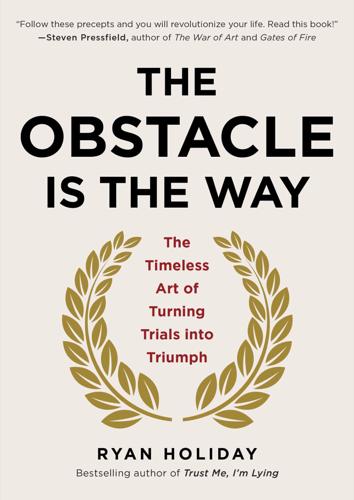
The Obstacle Is the Way: The Timeless Art of Turning Trials Into Triumph
by
Ryan Holiday
Published 30 Apr 2014
When setbacks come, we respond by working twice as hard. ITERATE What is defeat? Nothing but education; nothing but the first steps to something better. —WENDELL PHILLIPS In Silicon Valley, start-ups don’t launch with polished, finished businesses. Instead, they release their “Minimum Viable Product” (MVP)—the most basic version of their core idea with only one or two essential features. The point is to immediately see how customers respond. And, if that response is poor, to be able to fail cheaply and quickly. To avoid making or investing in a product customers do not want. As engineers now like to quip: Failure is a Feature.
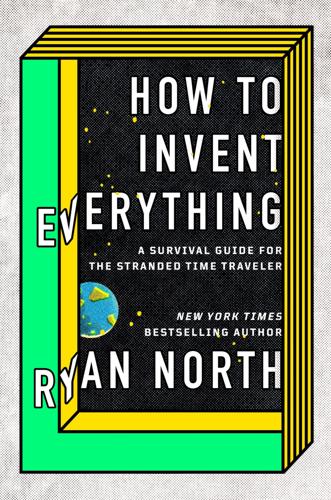
How to Invent Everything: A Survival Guide for the Stranded Time Traveler
by
Ryan North
Published 17 Sep 2018
Now when the drive wheel spins the board will rock up and down—and conversely, when you rhythmically pump that board with your foot, you’ll turn the wheel. If you want to get fancy, you can add two treadles so that both of your feet can be put to work: just connect each at opposite parts of the rotation, and they’ll work like pedals on a bike. Your spinning wheel, at this point, is the minimum viable product that humans used for a thousand years. To start, pull some of your wool into a thread by hand, and attach that thread to the bobbin. Grip your thread with one hand, and with the other gently pull the wool behind it, stretching it into a thin line of fibers. As the bobbin spins it’ll pull those fibers toward itself, winding them into thread.
…
WHAT KIND OF NUMBERS YOUR COMPUTER WILL USE, AND WHAT IT WILL DO WITH THEM You’re going to use binary as the basis for your computers, for two reasons: you already invented it back in Section 3.3: Non-Sucky Numbers, and it’ll make things easier by reducing the numbers you have to worry about to two: 0 and 1.* Now all you need to figure out is what your computer will do with those numbers. Ideally, we’d like a machine that can add, subtract, divide, and multiply. But do we actually need to be able to do all of that? In other words, what’s the minimum viable product for any computing machine? It turns out that a computer doesn’t technically need to know how to multiply. You can emulate multiplication—that is, get the same result through different means—by repeated addition. 10 times 5 is the same as just adding 10 to itself 5 times. So addition emulates multiplication: x × y = x added to itself y times Subtraction works the same: 10 minus 5 gives the same result as adding a negative number, –5, to 10.
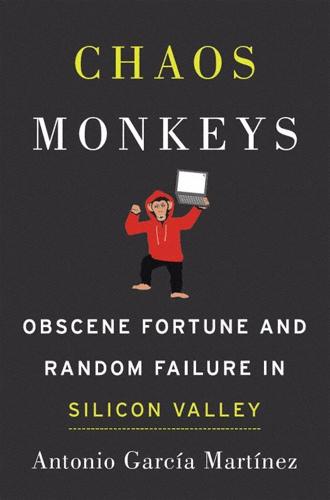
Chaos Monkeys: Obscene Fortune and Random Failure in Silicon Valley
by
Antonio Garcia Martinez
Published 27 Jun 2016
Somerset, 200 Mayer, Marissa, 78 Mayfield Capital, 154, 156, 159, 162–63 McAfee, 382 McCorvie, Ryan, 16–17 McDonald’s, 82, 450 McEachen, Matthew (“MRM”), 41, 46, 62–63 call to, 123 CEO position, 249 chaos monkey suggestion, 103 codebase and, 66, 73, 184, 234 coding, 146 comrade-in-arms, 91 as daredevil, 136–37 deal details and, 251–52 earnestness, 68 Facebook and, 223, 225 family, 135, 205 getting to know, 88 irritation, 102–3 lost with, 109 paying off mortgage, 494 as resourceful savior, 100–101 as steadfast, 67 McGarraugh, Charlie, 14–15 McLean, Malcom, 447 media publishers, 387 MediaMath, 390 Menlo Park, 84 bedroom community, 338 conferences, 119 headquarters, 469 moving to, 337 schools, 306 meritocracy, 74 Merkle, 384 mesothelioma, 81 Miami drug trade, 304 Michelangelo, 334 Microsoft Adchemy and, 153–54, 161–62 Atlas, 383, 453–55 calendar, 340 dogfooding, 43 monopolist, 286 program managers, 272 middle managers, 359 Miller, Arthur, 104 Miller, Frank, 434 Milton, John, 475 minimum viable product (MVP), 434 miracles, 51 misleading, offensive, or sexually inappropriate (MOSI), 310 Mixpanel, 62 mobile commerce, 484–89 mobile data, 382, 477, 484, 486 Mobile Marketing Association (MMA), 448 monetary value, 317–19 monetization bet, 4 data-per-pixel, 274 digital, 184 Facebook, 5, 209, 275, 278, 298, 318, 425, 444 folly, 361–72 Google, 186 growth, 141 influences, 9 savvy, 486–89 tug-of-war, 379 Twitter, 190 zero-sum game, 319 money fuck-you money, 102, 415–16 investors, 74 outside, 155 pre-money valuation, 212 seed, 96 of VCs, 174 Moore’s law, 25 MoPub, 476–77, 479–81 morality, 226, 256, 284 Morgenstern, Jared, 218 Morishige, Sara, 183 Morris, Robert Tappan, 60–61 Mortal Kombat 3, 178 Moscone, George, 181 Moskovitz, Dustin, 284 Motwani, Rajeev, 138 Museum of Natural History, 366 My Life as a Quant (Derman), 16 MySpace, 283–84 N00b, 269 Nanigans, 480–81 Narasin, Ben, 128–31, 143–44 NASDAQ, 405, 410 National Socialism, 356 native ad formats, 448–49 Neko, 482 Netflix, 83, 103, 328 Netscape Navigator, 286 Neustar, 384, 386 New Rich, 357 New York Times, 448, 486 New Zealand, 318 News Feed addictive, 482 ads, 482–84, 488, 492 click-through rates, 487 content, 309 creation, 2 distribution, 364 as magic real estate, 362 spamming users, 372 versions, 444 newspaper advertising, 36–37 Nielsen, 385 1984 (Orwell), 433 noncash valuation, 212 no-shop contract, 201 Nukala, Murthy crossing paths, 167–68 ego, 42–43 greed, 44 hazing by, 71 immigrant worker, 72 lecture from, 65–66 manipulative rage, 136 pep rally, 36 saying good-bye to, 73 self-preservation and, 162–63 tantrums, 45 as tyrant, 158 vindictiveness, 134 wooing by, 154 Obama, Barack, 299–300 obscenity, 268 OkCupid, 54 Olivan, Javier, 410 Omnicom, 437, 443 on-boarding, 260–67, 271 one shot, one kill motto, 298 one-on-one, 434, 457, 469 online dating, 54–55 Opel, John, 148 Open Graph, 280, 364 optimization, 276, 302 Oracle investors, 111 job at, 193 logo, 124 product shindigs, 181 recruiting, 70 Orkut, 379 Orrick, Herrington & Sutcliffe, 193, 203, 253 Orwell, George, 433 outside money, 155 Ovid, 316 Oxford English Dictionary, 80 Page, Larry, 112, 428, 431 Pahl, Sebastien, 119 Palantir, 272 Palihapitiya, Chamath, 265–66 Palo Alto bosom of, 116 climate, 123 downtown, 333, 338 East, 404 hub, 109 old, 112, 158 posh, 84 shuttles, 289, 339 Stanford grads, 63 Pamplona running of bulls, 106–7 Pan-Arabism, 356 Pansari, Ambar, 210 Paper, 283 Parse, 155 Patel, Satya, 249–50 Patton, 369 Payne, Jim, 476 PayPal, 78, 124 personal wealth, 415 personally identifiable information (PII), 395 photo sharing, 286, 490–91, 493 photo-comparison software, 310 Pickens, Slim, 102 Piepgrass, Brian, 374 pings, 188, 327, 422 PMMess, 347–51, 407, 409 poker playing, 396–97 polyandry, 483 Polybius, 172, 316, 336 Pong, 150 Ponzi scheme, 16 pornography, 167, 262, 268, 312, 314, 315 post-valuation, 212 pregnancy, 58–59 pre-money valuation, 212 La Presse, 37 privacy Facebook and, 316–29 Irish Data Privacy Audit, 278, 320–23 PRIZM Segments, 385 product development, 47, 94, 191, 220, 334, 370, 389 product managers (PMs) as Afghan warlords, 273 earning money, 302 everyday work, 294 Facebook, 4, 6–7, 10, 91, 97, 202, 210, 271–79 Google, 192 habitat, 341 high-value, 246 ideal, 219 information and, 295 internal and external forces and, 316–17 last on buck-passing chain, 327 managing, 276 stupidity, 313 tech companies, 272 tiebreaker role, 292 product marketing manager (PMM), 277, 366 product navigators, 272 production, 94 product-market fit, 175 programmatic media-buying technology, 38 Project Chorizo, 296 pseudorandomness, 75 publishers, 37, 39 Putnam, Chris, 284 Qualcomm, 70 quants, 16–18, 24, 29, 141, 207 Quick and Dirty Operating System (QDOS), 149 Rabkin, Mark, 3, 312, 389, 398, 435 Rajaram, Gokul, 8, 10 accepting offer from, 248 banter with, 472–73 as boss, 3 bribery, 471 FBX and, 435 go big or go home ethos, 300 in great debate, 459 influence, 202 insubordination toward, 465 interview with, 221–22 leadership, 309 loss of trust, 468 lot with, 373 management of, 434 middle manager, 463–64 one-on-one and, 469 as product leader, 276–77 riding by, 346 stripping of duties, 452 word of, 252 Ralston, Geoff, 93 Rapportive, 96–97, 106 real-time bidding (RTB), 40–41 real-time data synchronization, 38 Red Rock Coffee, 84 RedLaser, 51 Reesman, Ben, 308, 389, 399–400, 475, 477 relativity, 25 replicating portfolio, 247–48 retargeting, 9, 381, 395, 438, 461 return of advertising spend (ROAS), 81 revenue dashboards, 274–75, 295–96 Right Media, 37–38 The Road Warrior, 134 Roetter, Alex, 185, 190, 493–94 romantic liaisons, 55–56 Romper Stomper, 202 Rosenblum, Rich, 21–22 Rosenn, Itamar, 368 Rosenthal, Brian, 389, 390 Ross, Blake, 444 Rossetti, Dante Gabriel, 303 rounds, 156 routing system, 324 Rubinstein, Dan, 312–13 Ruby on Rails, 155 Russia, 375–76 Sacca, Chris, 128, 141, 143 acquisition advice, 187–88, 212–13, 245–47 on deals, 205–7 ignoring inquiries, 201 pseudoangel, 113, 117–19 wisdom, 202 Safari, 484 safe sex, 58 safeguarding role, 315 sailboat living, 307, 332, 337–38 salaries, 358 San Francisco Museum of Modern Art (SFMOMA), 181 Sandberg, Sheryl, 2, 10 data joining and, 465 gatekeeper, 4–5 intimates, 3–4 leadership, 410 managerial prowess, 311–13 meetings, 371, 382, 459 PowerPoint and, 7 recommendations to, 462 schmoozing, 367 wiles of, 408 Sarna, Chander, 67–68, 71, 72 sausage grinder, 296 scale, 300 Scalps@Facebook, 314 scavenging foray, 116 schadenfreude, 16–17 Schopenhauer, Arthur, 282 Schrage, Elliot, 3–4, 410 Schreier, Bryan, 123–25 Schrock, Nick, 400 Schroepfer, Mike, 2 Schultz, Alex, 374 scientific racism, 122 Scoble, Robert, 100 Scott, George C., 24, 369 security, 314–15 seed money, 96 Sequoia, 122–25, 130, 159 severance package, 470–71 severity-level-one bug (SEV1), 323 sexual molestation, 17 Shaffer, Justin, 219–21, 444 Shakespeare, William, 120, 427, 456 Shapiro, Scott, 378, 459 Shelly, Percy Bysshe, 337 Shockley, William, 122 shuttles, 289, 339 Siegelman, Russell, 146, 201, 213, 397 angel investor, 110–13 commitment, 141–43 negotiations, 116–17 Silicon Valley.
…
These ambassadors got to know their foreign powers very well, some even going a bit native (as diplomats too long in a foreign country do), empathizing with their charges’ agenda as much as with Facebook’s. * Most products in tech, at least on the Internet side, launch half-baked, as what’s called an MVP, or “minimum viable product.” This is the minimum level of functionality you can provide and still sanely call your creation a product. In FBX’s case, this meant the real-time auction worked with the basic ads-buying protocol we had designed, but we had none of the monitoring tools, debugging tools, or error notifications we’d need to properly manage this beast, nor the more advanced functionality, such as cross-browser identity matching, that we’d dreamed up.

Amazon Unbound: Jeff Bezos and the Invention of a Global Empire
by
Brad Stone
Published 10 May 2021
Life inside the Prime building, and in the gradually increasing number of offices around South Lake Union inhabited by the Alexa team, became even busier. Many of the new features would be rushed out the door, so that Amazon could start gathering customer feedback. Silicon Valley startups call this style of product development “minimum viable product,” or MVP. At Amazon, Jeff Wilke had popularized the idea of calling it “minimum lovable product,” or MLP, asking, “What would we be proud to take to the market?” It didn’t seem to matter that many Alexa features, such as the voice calling, were initially half-baked and rarely used. Over the course of the 2015 holiday season, Amazon sold a million Echo devices.
…
Maisel, The, 13, 157, 287 Mary’s Place, 290–91 Masters, Kim, 154–55 Matthews, Dave, 325 Mattis, Jim, 359 MBS, see Mohammed bin Salman, Prince McBath, Lucy, 371 McCurdy, Robert, 1, 2, 4 McGowan, Rose, 155 McKenna, Judith, 90 McKinsey & Company, 141, 169 McMillon, Doug, 88, 90, 91 Medioni, Gerard, 58 Medium, 110, 340–41, 353 Mehta, Apoorva, 192 Melchiorre, Anthony, 331, 337–39 Meng, JT, 199, 202, 259 Met Gala, 180–81 #MeToo, 153, 155, 156 MercadoLibre, 80, 82, 85 Mercedes-Benz, 241, 381 Merkel, Angela, 132 Metro AG, 190 Mexico, 13, 80, 231 Amazon in, 80–85, 95, 144 Walmart in, 80–82, 85 Meyerson, Rob, 265, 267, 276, 277, 281 Miami Palmetto Senior High School, 266 Microsoft, 67, 71, 88, 94–95, 103, 107, 167, 233, 263, 290, 381 antitrust issues and, 363, 378 cloud computing and, 96, 102 JEDI contract and, 360–62 Midler, Bette, 154 Milk Stork, 114 minimum viable product (MVP), 48 minimum wage, 355, 356, 400 MIPCOM, 330 Miranda, Lin-Manuel, 1 Modi, Narendra, 79, 87, 88, 89, 92, 93, 384 Mohamed, Bashir, 397 Mohammed bin Salman (MBS), Prince, 17, 321, 342–45, 347 moon, 266, 268, 271, 279, 283 Moonves, Les, 157 Moore, Julianne, 152, 154 Moret, Stephen, 308 Morning Call, 220–21 Morris, Wendell, 373–74 Mountz, Mick, 222–23 MoviePass, 152 Mozart in the Jungle, 143, 145 Mullally, Megan, 135 Mulligan, John, 231 Murthy, Narayana, 77, 79 music sales, 9 Musk, Elon, 73, 236, 264–65, 268–72, 274, 278–80, 282–83, 293–94, 299, 315, 404 Musk, Justine, 269 Myntra, 78, 87 NAACP Environmental and Climate Justice Program, 404 Nadella, Satya, 362 Nadler, Jerry, 377 NASA, 96, 98, 266, 267, 272 Nashville, Tenn., 299, 301, 302, 306, 313 National Enquirer, 17, 319, 328–42, 344 National Equality Award, 297 National Portrait Gallery, 1–3, 382 National Press Club, 3 National Rifle Association, 301 National Security Council, 344 NDN Collective, 403 Netflix, 13, 98, 137–40, 142, 143, 145, 158, 401 Neuberger Berman, 185–86, 210 New America, 353 Newell Brands, 255 New Glenn rocket, 264, 272, 274, 277–79 New Kingdom, The, 345 New Shepard rocket, 264, 267, 269–71, 273, 274, 276, 278, 280, 283, 288, 310, 327 New York City advertising employees in, 250–51 Amazon offices in, 316 Long Island City as HQ2 location, 16, 301, 302, 305–16, 318, 319, 333 New Yorker, 155, 324, 328 New Yorker Presents, The, 144 New York Post, 309, 334, 341 New York Times, 54, 122, 126, 154, 314 exposé on Amazon’s working environment in, 95, 109–11, 113–14, 119, 295, 352 Niekerk, David, 110–13, 219, 221, 230, 312 Nielsen, 203 Nike, 180 9/11 terrorist attacks, 117 Nisqually earthquake, 7 Nordstrom, 253 Northrop Grumman, 279, 280 NSO Group, 344 Nuance, 27, 37 Obama, Barack, 132 administration of, 110, 270, 297, 311, 368 Obama, Michelle, 1, 132 Ocasio-Cortez, Alexandria, 16, 307, 308, 310 Oceanco, 347–48 O’Dell, Trip, 239 Office of the U.S.
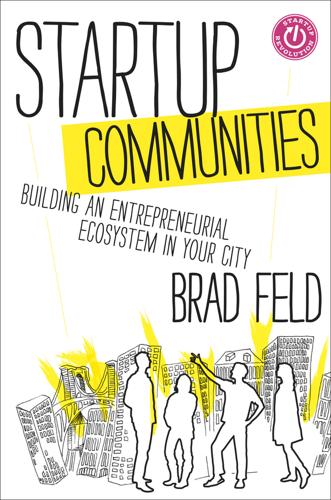
Startup Communities: Building an Entrepreneurial Ecosystem in Your City
by
Brad Feld
Published 8 Oct 2012
They wanted to build a software-as-a-service company that helped gaming companies understand their communities. I was startled. These kids were not worried about the ISK or the government or the global financial crisis or anything. They were building something and wanted to sell it to create value. I was impressed. I found out that they needed capital to get their minimum viable product onto the market. There was a slight problem, as I had no money, so I reached out to my family and friends, convinced them to invest in Iceland and this young team called CLARA. My partners thought I was crazy but they indulged me. We invested in Iceland against all odds in 2009. When all the other Icelandic entrepreneurs found out that I had invested in CLARA, I had a flood of requests to meet new companies.
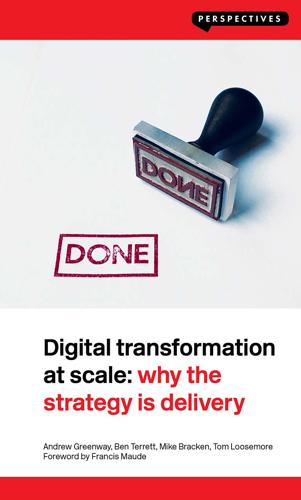
Digital Transformation at Scale: Why the Strategy Is Delivery
by
Andrew Greenway,Ben Terrett,Mike Bracken,Tom Loosemore
Published 18 Jun 2018
This is a subtle difference, but an important one. Putting deadlines against your actions is not a bad idea; it focuses teams, keeps momentum high and provides natural points to review whether the overall strategy is still the right one. The skill is setting the right expectation about what will be delivered by that deadline – a minimum viable product used by 25 people, a fully working service in front of millions of users, or something in between. If you don’t know, opt to under promise and over deliver; it is better to have a disagreement than a nasty surprise. Organisational context There is a good chance that while you’re writing your digital strategy, several other teams in the organisation will be setting out their own grand plans.
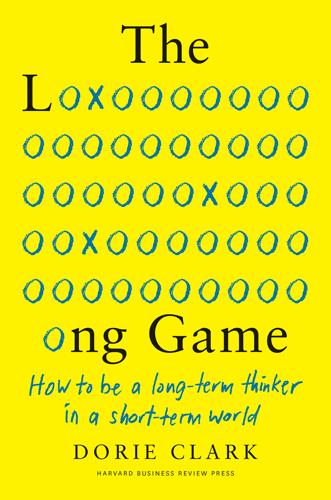
Long Game: How Long-Term Thinker Shorthb
by
Dorie Clark
Published 14 Oct 2021
The problem was, no one seemed to want them in the first place. Creators were operating in a vacuum, putting in the time to make something perfect before they had even validated that it was a thing they should be spending their time on. The antidote, Blank realized, was placing small bets: creating a “minimum viable product” that wasn’t very fancy or impressive, but showed what you were trying to do. If customers were interested—if they were willing to download it or use it or maybe even pay for it—that was evidence that there was something there, and you could safely start allocating your time to make it better.
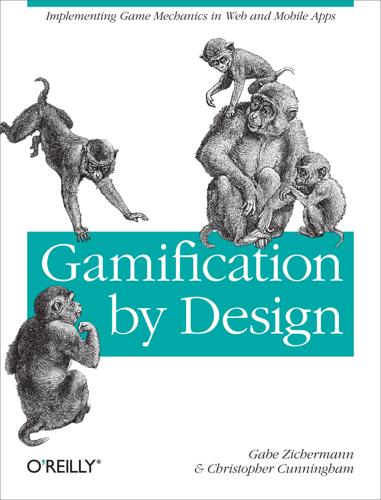
Gamification by Design: Implementing Game Mechanics in Web and Mobile Apps
by
Gabe Zichermann
and
Christopher Cunningham
Published 14 Aug 2011
It doesn’t work because players level out, get bored, game the system, or leave it altogether. By avoiding iteration, the system is certain to end up exactly where you don’t want it to be. In an agile design, prioritization is similarly important as it helps narrow the designer’s focus to a limited number of specific items. Agile design looks for the minimum viable product before launch—what the designer and target consumer need now—knowing they can change it later. In gamified design, an experience points (XP) system that assigns a point value to everything your player does is the absolute minimum for launch. The XP system must be able to report back about the players so that the designer can watch his engagement internally.
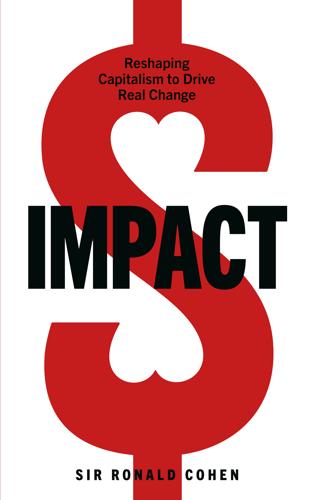
Impact: Reshaping Capitalism to Drive Real Change
by
Ronald Cohen
Published 1 Jul 2020
The entire shoe – laces and soles included – can be put into a grinder, which transforms it into pellets, creating raw material for another pair of shoes.93 The first 200 pairs were given away for beta testing, and sales are slated to begin soon.94 Though the ground-up bits of one Loop shoe don’t yet equal the materials needed for a new pair, Adidas hopes to reach ‘full circularity’ – a 1:1 ratio – in the near future.95 One recycled pair of the first Loop sneakers currently provides 10 per cent of the materials needed for a new shoe. Both the Parley range and the Loop shoes were developed as part of what the company calls ‘Futurecraft’– experimental designs that ‘the company openly admits [are] … minimum viable product[s] that Adidas can generally only produce in limited numbers’.96 But the company is able to scale these products quickly: Paul Gaudio, global creative director, estimates that they could sell ‘tens of millions of Loop shoes within three to five years’.97 The Loop shoes’ ‘circularity’ process is still being hammered out – one idea is to sell the shoes with a shipping box and return label, so that when the consumer is finished with them they can simply send them back for a new pair, perhaps using a subscription model.98 Eric Liedtke, an executive board member, put it this way: ‘Our dream is that you can keep wearing the same shoes over and over again.’99 People debate whether companies like Adidas that focus on a single impact dimension can deliver significant positive impact.
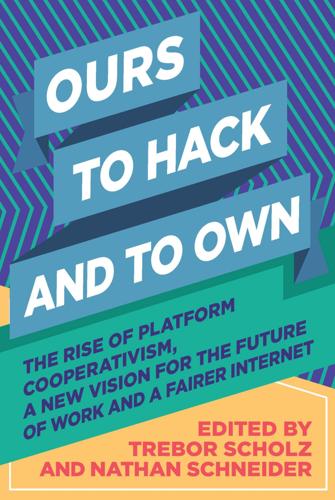
Ours to Hack and to Own: The Rise of Platform Cooperativism, a New Vision for the Future of Work and a Fairer Internet
by
Trebor Scholz
and
Nathan Schneider
Published 14 Aug 2017
In May 2015, the ERS was just an idea born out of frustration with fundraising and income inequality, but under the mentorship of Gary Chou at Orbital NYC we were able to validate some early assumptions and raise money via Kickstarter to bring together a seed community for the Weird Economics Summit in NYC in November 2015. In 2016, we hope to develop a minimum viable product of the platform and pilot it in partnership with like-minded organizations. Project Name: Data Commons Cooperative Completed by: Noemi Giszpenc Location: Massachusetts URL: datacommons.coop The Data Commons Cooperative brings together cooperative, solidarity, social, generative, “new” economy organizations that are cataloging or mapping some slice of that space.

The Year Without Pants: Wordpress.com and the Future of Work
by
Scott Berkun
Published 9 Sep 2013
The creation of teams was intended to foster more local autonomy and less dependence on Matt, but at the time of the Athens meet-up, teams were only weeks old. When Mullenweg left Athens, we immediately began work on Highlander. Of the many features we knew it would have to include, we narrowed them down to find the simplest, easiest, highest-value project we could release first (what's often called MVP or minimum viable product). Putting our list of feature ideas aside for the moment, we applied the same design thinking we'd done for posting. If the blogger's experience posting worked like this: then the visitor's experience commenting was like this: The largest burden of convincing a visitor to decide to comment was on the blogger.
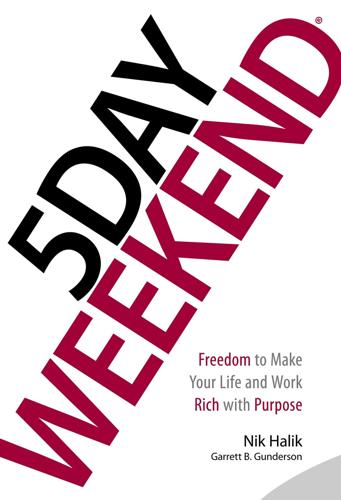
5 Day Weekend: Freedom to Make Your Life and Work Rich With Purpose
by
Nik Halik
and
Garrett B. Gunderson
Published 5 Mar 2018
Start as Small as Possible In most cases vision is a good thing. But when you first start something on the side, sometimes vision can actually hold you back. All too often people get scared away from entrepreneurship because they see a vision of how much they have to build, and it feels too overwhelming. The key is to think in terms of a minimum viable product. Forget about some grandiose scheme that will require a large capital investment, a team, infrastructure, etc. Learn to take things to market with very little if any capital expenditure. Become an expert on a strategy Garrett calls “Win, Then Play.” In other words, before you fully commit to a project or opportunity, test its market viability first.
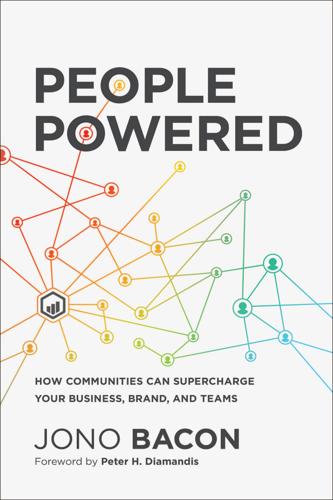
People Powered: How Communities Can Supercharge Your Business, Brand, and Teams
by
Jono Bacon
Published 12 Nov 2019
Index Abayomi, 1–3, 7, 9, 19, 35, 278 abuse of system, 158, 217, 233, 234 access, 7–8, 16–17, 54–55, 225, 226 accountability, 139, 146, 148, 149 actions, tracking, 158–59 active participation, 109 adaptability, 176–77, 268–69 Adobe, 244 advertising, 195–96 advocacy, 23–24, 49, 111 Airbnb, 57 ambiguity, 155–56 American Physical Society, 139 Amnesty International, 18 Anderson, Chris, 46, 47 Android platform, 65 Ansari XPRIZE, xviii Apache, 6, 26 Apple, 6, 58, 128 approachability, 69–70 Ardour, 44, 52, 66 Areas of Expertise, 172–75 Ariely, Dan, 17 assets, building, 68–69 assumptions, 137, 271 asynchronous access, 54 attendance, 157 attendees, summit, 247–49 audience personas, 100, 108–19 in Bacon Method, 33 choosing, 109–12 content for, 194–95 creating, 114–16 examples of, 116–19 on Incentives Map, 230–32 On-Ramp Model for, 131, 135–38 Participation Framework for, 130 prioritizing, 112–13 productive participation by, 162–67 and relatedness, 107 audience(s) access to, 7–8 assumptions about, 137 and community strategy, 13 irrational decision making by, 101–8 for local communities, 5 surprising, 73–74 understanding your, 33, 99–100 authenticity, 75, 111, 183, 224 authority, 55–56, 200–201 Author persona, 166–67 automated measuring of condition, 217–18 autonomy, 105–6, 123 awareness, 22–24, 59–61, 192 Axe Change service, 14 Axe-Fx processors, 49–50 backlog, 150–51 Bacon Method, 32–34 Bahns, Angela, 47 Bassett, Angela, 237 Battlefield, 24, 128, 228 behavioral economics, 102–4 Bell, Alexander Graham, 153 belonging, sense of, 15, 18, 20, 143, 187, 215 Bennington, Chester, 183, 184 Big Rocks, 33, 88–96 and cadence-based cycles, 168–70 in community strategy, 94–95 and critical dimensions, 157, 161 defined, 88–89 departmental alignment on, 263 examples of, 91–94 format and key components of, 89–91 and Quarterly Delivery Plan, 34, 145–46, 148, 149 realistic thinking about, 95–96 Black Lives Matter, 18 blocked (status), 147 blogs, 193, 275 Bosch, 13 brand awareness, 24, 59–60 brand recognition, 85 Branson, Richard, 190 Buffer, 214 Build Skills stage, 132, 136, 137 business cards, 241–42 buy-in, 67, 85 cadence, operating on, 34, 264–66 Cadence-Based Community Cycle, 167–70, 264 Canonical, 1, 121, 151, 167, 245 capabilities, persona, 114, 116–18 Capital One, 13 career experience, 83 CasinoCoin, 244 Casual members, 129, 140–42 advancing, 196–97 engagement with, 198–99 incentivizing, 219, 221, 226–27 maturity model for, 166 mentoring, 203 CEOs, reporting to, 260 certainty, 105 Champions model, 49–52, 63–64, 66–67, 113, 260 chat channel, 250 check-ins, 267 civility, 187 clarity, 69–72, 138–39, 234 closing party, 250 coaching, 82–83, 205–6 Coca-Cola, 57 Coffee Bean Rewards app, 145 Colbert, Stephen, 73–74 collaboration, 8–9, 74–75, 185–86 Collaborators model, 52–56, 64–67, 86, 260, see also Inner Collaborator community; Outer Collaborator community commitment, 122 communication, 121 Community Associate, 255 Community Belonging Path, 16–20 community building, 14 additional resources on, 274–76 Bacon Method of, 32–34 as chronological journey, 127–28 consultations on, 276–77 continuing to learn about, 272–74 defining your value for, 77–78 end-to-end experience in, 125–26 fundamentals of, 15–16 getting started with, 37–38, 62 key principles of, 67–74 monitoring activities related to, 206–8 risks associated with, 154–55 tools for, 8 see also successful community building community–community engagement, 157 community culture, 30–31, 70–72, 179–88 Community Director, 254–58, 260 Community Engagement Model(s), 49–67 in Bacon Method, 33–34 Champions model, 49–52 Collaborators model, 52–59 and Community Value Statement, 80 Consumers model, 45–48 importance of selecting, 43–45 and marketing/public awareness, 59–61 scenarios for selecting, 61–67 Community Evangelist, 255 community(-ies) defined, 13–15 digital, 2–3, 5–13, 237 experimenting in, 123 foundational trends in, 7–9 future of, 35, 277–79 local, 3–5 power of, 7 social dynamics of, 15–16 value generated by, 20–29 Community Launch Timeline Template, 191 Community Leadership Summit, 179, 239 community management staff, 254–61 Community Managers, 78, 125, 126, 195, 255–56, 260–61 Community Mission, 40–43, 169 Community Mission Statement, 42, 80, 113 Community On-Ramp Model, 33–34, 130–38 community overview cards, 241–42 Community Participation Framework, 128–45 building community based on, 151–52 and building engagement, 138–44 Community On-Ramp Model in, 130–38 described, 128–30 engagement strategy to move members along, 196–206 focusing on creativity and momentum in, 209 incentives and rewards in, 145 incentives on, 211–13 incentivizing transitions in, 218–22, 226–27 mentoring in, 202–6 Community Personal Scaling Curve, 184 Community Persona Maturity Model, 163–67 Community Promise, 70–71 Community Specialist, 255 community strategy, 30 Big Rocks in, 94–95 changing, 96, 208 control over and collaboration on, 74–75 Core members’ contributions to, 201 execution of, 253–54 importance of, 13 integration of, in organization, 261–68 learning from implementation of, 268–69 planning, 39 Regular members in, 143 risks with, 29–32 and SCARF model, 105–8 variability in, 30 community summits, 245–51 finalizing attendees and content for, 247–49 follow through after, 250–51 running, 249–50 structure for, 246–47 community value, 164–67 Community Value Proposition, 175 Community Value Statement, 80–88 and Big Rocks, 89, 95 in cadence-based cycle, 169 maintaining focus on, 97 and on-ramp design, 135–36 prioritizing audience personas based on, 113 updating, 83–84, 87–88 value for community members in, 80–84 value for organization in, 84–88 company–community engagement, 157 competitions, 194 complete (status), 147 CompuServe, 5 conditions, for incentives, 216–18, 230–32 Conference Checklist, 241 conferences, 194, 195, 239, 240–43 connection(s) desire for, 9 for Regular members, 200 constructive criticism, 122–23 consultations, on community building, 276–77 Consumers model, 45–48, 62–63, 260 content for community summits, 247–49 in Growth Strategy, 192–95 for launch, 189 as source of value, 82 Content Creators (persona), 110–11, 113–15 content development in Champion communities, 49–50 in Collaborator communities, 52–56 by communities, 26–27 as source of value, 82, 86–87 contests, 194 contributions, to communities, 17, 19 control over community strategy, 74–75 over Regular members, 143 co-organizing events, 239 Core members, 129, 140 advancement for, 196–97 characteristics of, 143–44 at community summits, 242 engagement with, 201–2 incentivizing, 215, 219–20, 222, 227 maturity model for, 165, 166–67 mentoring for, 203, 205 percentage of, 141 creativity, 209 critical dimensions, 156–58, 161 criticism, 122–23, 176 cross-functional communities, 88 crowdfunding, 23–24 Cruz, Ted, 73–74 culture, community, see community culture Culture Cores, 181–88 customer engagement, 20–22 customer growth, as source of value, 85 Customer Relationship Management (CRM) system, 21 Cycle Planning, 168 Cycle Reviews, 268 dashboards, 160–61 data analysis, 207, 208 Davis, Miles, 182 Debian, 6, 26 decision making irrationality of, 101–8 pragmatism about, 184 SCARF model of behavior, 104–8 System 1 and 2 thinking, 102–3 unpopular decisions, 186 decision paralysis, 38, 106 dedicated events, organizing, 239–40 delayed (status), 147 delivery commitment to, 263–64 successful, 162, 167–70 delivery, as critical dimension, 157 delivery plans, see Quarterly Delivery Plan demonstrations, 194, 244 departmental alignment, 263–64 developer community, Big Rocks for, 93–94 Developer Relations personnel, 255 Developers (persona), 111, 114, 115 Diamandis, Peter, 40 Dickinson, Emily, 211 difficulty, of condition, 217 diffusion chain, 54 Digg, 12–13 digital communities early, 5–7 evolution of, 9–13 foundational trends in, 7–9 in-person events for, 237 as local and global communities, 2–3 digital interaction, and in-person events, 251 digital training, 243–44 dignity, 17 discipline, for community building, 31 Discourse, 66, 228, 233, 267 discovery, in gamification, 233 discussion forums, 49 Disney, 128 Docker, 12, 56 documentation, 274 domain expertise, 256, 257 Dreamforce conference, 22 Drupal, 204 Early Adopter program, 189–90 Editorial Calendar, 192–95 education (about product or service) in communities, 24–25 as source of value, 82 efficiency, as critical dimension, 157 ego calibration, 234–35 empathy, 186–87 employees openness for, 182–83 training and mentoring for, 266–68 empowerment, 55–56, 222 end-to-end experience, 59, 125–26 engagement as Area of Expertise, 174 Big Rocks related to, 93–94 with community, 72 in Community On-Ramp Model, 133–34, 136, 137 and Community Participation Framework, 138–44 in Community Participation Framework, 129 at conferences, 242 critical dimensions related to, 157 customer and user, 20–22 and Growth Strategy, 192 positivity and, 185 quality of, 159 rules for engaging with community members, 119–22 and submarine incentives, 226 and understanding audience, 99–100 Engagement Strategy, 181, 196–206 engineering department, community leadership staff reporting to, 260 equal opportunity, in Collaborator communities, 55, 58–59 estimated units, on Incentives Map, 231, 232 Event Evolution Path, 238–40 Event Organizers (persona), 111, 114–15, 117–18 events in-person, see in-person events online, 193 Everett, Noah, 224 execution of community strategy, 253–54, 268 successful, 162, 167–70 expectations clear, 70–72 in gamification, 234 in great experience, 127 related to Big Rocks, 95–96 experience, of audience persona, 114, 116, 118 experimentation, 123, 171 to build organizational capabilities, 206–8 with events, 251 expertise of community leadership staff, 256, 257 of community members, 28 in digital communities, 8 as source of value, 83 Exploding Kittens game, 24 extrinsic rewards, 214, 215, 216 on Incentives Map, 231 submarine incentives for, 224–25 Facebook, 13, 24 failure, as opportunity for improvement, 151 fairness in SCARF model, 107–8 of submarine incentives, 225 Fans as audience persona, 110, 113 community model for, 44, 62–63 fears, of audience persona, 114–15, 117, 118 Fedora, 66, 264 feedback about audience personas, 116 on Big Rocks, 94–95 from communities, 72–73 and community culture, 186 from Core members, 202 on mission statement, 41 on Organizational Capabilities Maturity Model, 176 in peer-based review, 204 from Regular members, 143, 200 Figment community, 10 Final Fantasy, 128 financial commitment, and creating value, 96 Firefox, 23, 209 Fitbit, 139, 145 focus for community building, 31 on Community Value Statement, 97 follow through after community summits, 250–51 after conferences, 242–43 formal experience, 114 forums, 91–92, 158 founders, community leadership staff reporting to, 260 Four Rules for Measuring Effectively, 156–61 Fractal Audio Systems, 14–15, 49–50 freeloaders, 54 fun, in community experience, 84 gamification, 232–35 Garmin, 190 GitHub, 24 global communities, digital communities as local and, 2–3 Global Learning XPRIZE Community, 189 GNOME, 26 GNU community, 6 goals for community summit sessions, 249 of Core members, serving, 202 for employee participation with community, 267 in incentives, 214 on Incentives Map, 230–32 for new hires, 259 Google, 13, 57, 58, 65, 128 Gordon-Levitt, Dan, 11–12 Gordon-Levitt, Joseph, 11–12, 219 governance, in Inner Collaborator communities, 66 gratification, 120, 127 group dynamics, 100, 119–22 group experiences, referral halo for, 61 grow, willingness to, 257 Growth (Area of Expertise), 174 growth, as critical dimension, 157 Growth Strategy, 181, 188–96 growth plan, 192–96 launch plan, 189–91 guest speakers, 238–39 habits, building, 142, 267 HackerOne, 69–70, 194, 214 Harley Owners Group, 132 help asking community members for, 120, 144 as source of value, 82 high-level objectives, see Big Rocks hiring, 27–29, 256 hiring away approach, 258–59 HITRECORD, 11–12, 219 Hoffman, Reid, 152 HomeRecording.com community, 81 humility, 187, 257 hypothesis testing, 207–8, 271–72 IBM, 6 idealism, 153–54 IGN (Imagine Games Network), 47–48 Ikea Effect, 101–2 impact in Community Belonging Path, 18 and Engagement Strategy, 199 multiplying, with communities, 2, 3, 9 imperfections, 188 imposter syndrome, 142 inauthentic participation, 233 incentives, xvii–xviii, 197 in Community Participation Framework, 145 on Community Participation Framework, 211–13 components of, 213–18 in Growth Strategy, 196 maintaining personal touch with, 235 in Outer Collaborator communities, 65 power of offering, 213–18 stated vs. submarine, 218–27 Incentives Map, 34, 229–32 Incentive Transition Points, 218–19 stated incentives for, 221–22 submarine incentives for, 226–27 incentivization building engagement with, 140 in Community Participation Framework, 130 Incubation stage, 171, 172 independent authenticity, 111 Indiegogo, 23 individual value, 164–67 influence, psychological importance of, 71 Influencing phase (Product Success Model), 52 information in community, 121 in digital communities, 8 infrastructure, for launch, 189 Inner Collaborator community, 56–58, 65–67, 86, 229 Inner Developers (persona), 111 in-person events community summits, 245–51 conferences, 240–43 and digital training vs. training workshops, 243–45 Event Evolution Path and strategy for, 238–40 fusion of digital interactions and, 251 in Growth Strategy, 195 launch, 190–91 in local communities, 4–5 managing, 237–38 value of, 77–78 in progress (status), 147 insight, from communities, 28, 72–73 intangible value, 78–79, 83 Integration stage, 171–72 Intel, 57 intentionality, 39, 69–70, 187 Intention stage, 171, 172 internal communities, 13 Community Engagement Model for, 66–67 importance of culture for, 180 personal interaction in, 185 value of, for community members, 83 Internet, 5–7, see also digital communities Internet Explorer, 23 intrinsic rewards, 215, 224–25 involved teams, on Quarterly Delivery Plan, 147, 148 Iron Maiden, 39 Jeep, 139 Jenkins, 26 job candidates, community members as, 27–29 job descriptions, community leadership staff, 258 Jokosher, 199 jQuery, 204 Kahneman, Daniel, 102 karma (Reddit), 228 Key Initiatives, for Big Rocks, 90, 91–93 keynote addresses, 245–47 Key Performance Indicators (KPIs), 90–94 cadence-based cycles for delivery of work on, 169, 170 on Quarterly Delivery Plan, 146, 148–50 tracking progress on, 159–60, 160–61 Kickstarter, 12, 23 Kubernetes, 26, 53, 66, 134, 204 labor, community members as source of, 120 The Late Show with Stephen Colbert (television series), 73–74 launch event, 190–91 launch plan, 189–91 leaders, community, 3, 4 leadership as Area of Expertise, 174 and autonomy in organizations, 123 clear and objective, 69–70 in community culture, 186 community involvement by, 262 by Core members, 144 in Inner Collaborator communities, 66 leadership value, 165, 167 lead generation, 28–29 A League of Their Own (film), 39 learning about community building, 272–74 from community strategy implementation, 268–69 Learning phase (Product Success Model), 51 Lego, 9, 10 Lego Ideas, 10 Lenovo, 57 Leonardo da Vinci, 37 Lindbergh, Charles, xvii Linkin Park, 183 Linux, 6, 26, 273–74 Linux Foundation, 26, 74 live stream, 250 local communities decline of, 3–5 digital communities as global and, 2–3 The Long Tail (Anderson), 46 Ma, Jack, 77 Ma Jian, 125 Make:, 195 Management (Area of Expertise), 173–74 marketing, 22–24 audience personas in, 108–9 and Community Engagement Model, 59–61 as source of value, 85 marketing department, community leadership staff reporting to, 260 Mastering phase (Product Success Model), 51–52 Mattermost, 214 maturity models, 34 Community Persona Maturity Model, 163–67 Organizational Capabilities Maturity Model, 171–76 meaningful work, 9, 17–18, 27, 41 measurable condition, 217 measurable goals, 160 measurable value, in Community Persona Maturity Model, 164–65 measuring effectively, rules for, 156–61 meeting people, as source of value, 82 meetings after conferences, 242–43 with conference attendees, 241 in local communities, 4–5 Meetup.com, 133 meetups, organizing, 239 mentoring for Casual members, 142 for community-building employees, 267–68 for community leadership staff, 256 by community members, 29 in Community Participation Framework, 202–6 of new hires, 259 as source of value, 82–83 meritocracy, 55 message boards, 5–6 Metal Gear Solid, 128 Metrics (Area of Expertise), 175 Mickos, Mårten, 69–70, 74, 262 Microsoft, 6, 13, 23 Minecraft, 25 Minecraft Forum, 25 Minecraft Wiki, 25 Minimum Viable Product, 68–69 mission statements, 32, 42, 80, 113 momentum, in Engagement Strategy, 198 momentum effect, 209 in Growth Strategy, 188, 195 in marketing and brand/product awareness, 60–61 motivations for audience persona, 114, 117, 118 for community members, 119–20 Mozilla, 23 MySpace, 12–13 NAMM music show, 239 need, for community, 30 networking, 28–29, 242 New York Times, 23 Nextcloud, 134 niche interests, 45–47 Nintendo, 9, 228 norms, cultural, 70, 130, 180, 182 notification, 147, 148 not started (status), 147 objectives, see also Big Rocks objectivity, of leadership, 69–70 onboarding, 107 in Community Participation Framework, 129 Community Persona Maturity Model for members in, 164, 165–66 gamification for, 233 importance of, 130–31 in Outer Collaborator communities, 65 online events, 193 On-Ramp members, incentivizing, 218–19, 221, 226–27 openness, 182–84 open-source code, 26, 53 open-source communities, 57–58, 261 Open Source community, 10 OpenStack, 26 optimization, in Engagement Strategy, 199–200 Optimizing phase (Product Success Model), 51 organizational capabilities building, with communities, 27–29 cadence-based cycles for building, 265–66 executing strategy to build, 253–54 experimentation to build, 206–8 success in terms of building, 162, 171–76 organizational experience, of community members, 122 organizational values, and community culture, 182–88 organizations community members as labor for, 120 identifying value for, 84–88 integration of community strategy in, 261–68 internal communities at, 13 leadership and autonomy in, 123 Orteig Prize, xvii Outer Collaborator community, 56–59, 64–65, 86 Outer Developers (persona), 111–12, 136–37 Owner of Big Rocks, 90, 91 in cadence-based cycles, 168–69 on Incentives Map, 231, 232 on Quarterly Delivery Plan, 147, 148 Participant Rewards Peak, 215–16 participation active, 109 audience personas and types of, 109 by Casual members, 142 in Consumer communities, 48 inauthentic, 233 productive, 162–67 PayPal, 13, 57 Pebble Smartwatch, 23 peer-based review, 203–5 peer-review process, 55 peer support, 139–40 peer value, 164–67 Peloton, 133, 233 Penney, James Cash, 253 people person, 256–57 perfection, 268–69 performance review, community engagement in, 262 permanence, of communities, 14 personal interaction, 184–85, 199 personal touch with incentives, 235 and submarine awards, 222–26 personal validation, 120, 224–25 personas, audience, see audience personas Photoshop “Magic Minute” videos, 244 PlayStation, 233 podcasts, 194 Pop!
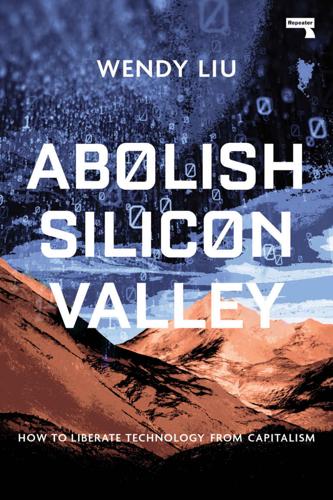
Abolish Silicon Valley: How to Liberate Technology From Capitalism
by
Wendy Liu
Published 22 Mar 2020
I peered uncertainly at their website, heart sinking with every stock photo and meaningless marketing buzzword, realising that I had no interest in working for this company, or really, any of the companies we’d been talking to so far. But it wasn’t like I had better ideas. One morning, Nick told us that we could get a contract with this content creator company if we agreed to build a minimum viable product in two weeks. He was so excited about the prospect that I felt bad having to tell him that we couldn’t, because we were in the middle of an infrastructure overhaul: our system was not made to handle our current usage levels, and with each day we were inching dangerously closer to overwhelming it.
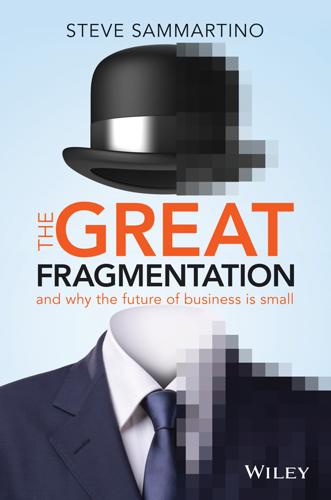
The Great Fragmentation: And Why the Future of All Business Is Small
by
Steve Sammartino
Published 25 Jun 2014
A few short years ago, none of these tools existed so he would have had no way of proving himself. He also sent me his PDF plan of Project October Sky. Marketing rocket science I concluded I couldn’t really justify investing $10 000 into the project, but advised Raul I’d be happy to do something smaller together such as a minimum viable product if it could benefit both of us. He came up with the idea of sending a helium balloon into the near space field. He told me we could get more than 30 000 metres into the sky and film the curvature of the earth for under $1000. He went on to tell me that he wanted to do it for scientific and experimentation reasons, and that I could take on the marketing.
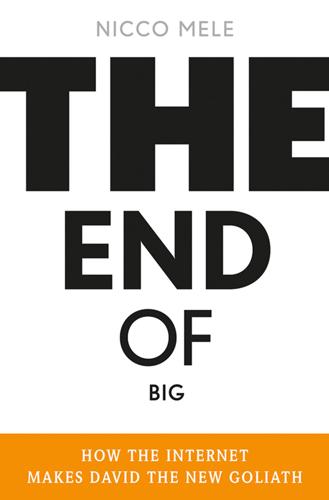
The End of Big: How the Internet Makes David the New Goliath
by
Nicco Mele
Published 14 Apr 2013
Any additional features are almost certainly superfluous and could even be damaging.35 This way of thinking in software design has a long pedigree—back to the “scratch your own itch” of Eric Raymond’s The Cathedral and the Bazaar, but more recently in the best-selling The Lean Startup, whose core admonition is to arrive at the minimum viable product as quickly as possible. It’s a compelling vision for running a software company or even an online services company. But does it work as an approach to government? Not so much. As Gary Wolf puts it in the Wired profile: His cause is not helped by the fact that if the Craigslist management style resembles any political system, it is not democracy but rather a low-key popular dictatorship. … Its inner workings are obscure, it publishes no account of its income or expenses, it has no obligation to respond to criticism, and all authority rests in the hands of a single man.36 I don’t mean to single out Newmark.

Blitzscaling: The Lightning-Fast Path to Building Massively Valuable Companies
by
Reid Hoffman
and
Chris Yeh
Published 14 Apr 2018
After my experiences at PayPal, and the success we found through rapid launches and product iteration, I was determined to launch LinkedIn as soon as possible. Our team defined a list of features that we thought were the minimum required to enter the market. Years later, Steve Blank and Eric Ries would dub this a “minimum viable product” (MVP). For LinkedIn, the MVP included a user’s professional profile, the ability to connect to other users, a search function to find other users, and a mechanism for sending messages to friends. Shortly before launch, we started worrying about whether LinkedIn would be useful without a critical mass of profiles.
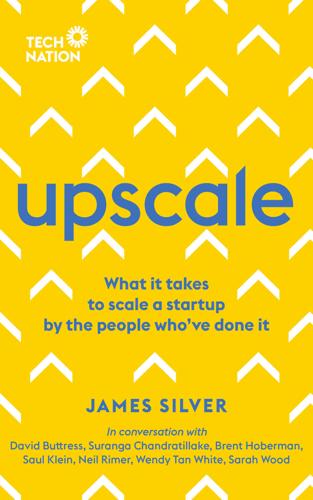
Upscale: What It Takes to Scale a Startup. By the People Who've Done It.
by
James Silver
Published 15 Nov 2018
So how did his experience at Innocent shape how he approached Graze’s expansion to the USA? Fletcher replies that he believes it is easier to expand overseas as an online business than as one in traditional retail. ‘I believe that technology has invented a number of useful mentalities or behaviours which are useful when going international. ‘When Graze went overseas it did a Minimum Viable Product [MVP] test in America, which involved two developers going over for eight weeks to make a website to measure over 100 Key Performance Indicators (KPIs) of what was going on in the local market. This meant that when we went to market we could invest a large amount of money because we were more confident it would work, so [we could] go in with a certain aggression, while being very clear on what the issues we had to solve were.’

Brave New Work: Are You Ready to Reinvent Your Organization?
by
Aaron Dignan
Published 1 Feb 2019
The Lean Startup method offers a more scientific approach to new-product development. Developed by Eric Ries, the method proposes a feedback loop containing three stages: build, measure, and learn. To get started, pick a problem you are interested in and have the agency to solve, and build a minimum viable product (MVP) that will allow you to get user feedback as quickly as possible. You’re going to be engaged in what Ries calls validated learning. Instead of trusting your assumptions and barreling ahead, you’re going to identify them and ask one of the most powerful questions in innovation: how might we validate that?

Live Work Work Work Die: A Journey Into the Savage Heart of Silicon Valley
by
Corey Pein
Published 23 Apr 2018
To further establish my bona fides as a technologist and entrepreneur, I spent a few hours building a small website. It had just the right look for a circa-2015 startup—a bold palette, free of adornments. Leaning back in my desk chair, I regarded my creation admiringly. Here was what the tech entrepreneurs would refer to as my “minimum viable product.” Visit us online at monkeywrench.international! My next challenge: to devise a succinct, memorable expression of the essence of a company with nothing to offer. Then I remembered reading something about the VE firm Andreessen-Horowitz, which, much like my new company, I thought, produced nothing at all of value.
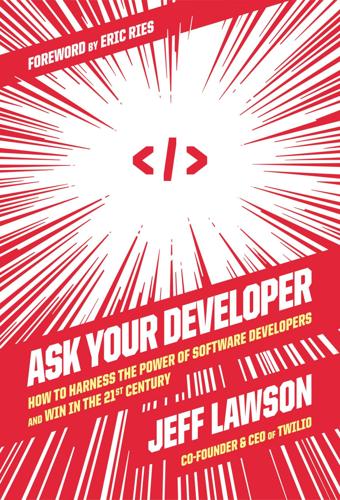
Ask Your Developer: How to Harness the Power of Software Developers and Win in the 21st Century
by
Jeff Lawson
Published 12 Jan 2021
I’ve seen executives at great companies unintentionally sabotage their own digital success by doing (and not doing) things that disempower talent and kill innovation. I once advised a company that made household products. They were trying to figure out how to test a new product through a small pilot program. I suggested creating a minimum viable product, an MVP in Lean Startup terms, or a version of the product that’s good enough to allow a company to collect useful feedback about its value from a small number of consumers while still being fast and inexpensive to create. The idea was to use the MVP to gather information as quickly as possible in order to determine next steps in the development process.

Road to Nowhere: What Silicon Valley Gets Wrong About the Future of Transportation
by
Paris Marx
Published 4 Jul 2022
The agency’s decision was not a surprise, but placing blame on an individual misses the bigger picture, both in a technological sense and an urban planning sense. The actions of Uber executives and engineers are in line with the “move fast and break things” culture that is promoted in Silicon Valley, one which is motivated first and foremost by beating competitors to market by launching a minimum viable product and capturing market share as quickly as possible in the pursuit of monopoly. Not only did Uber’s hardware and software decisions not properly consider the safety of pedestrians, but the area where the crash took place was hostile to pedestrians—as are so many areas in North American cities.
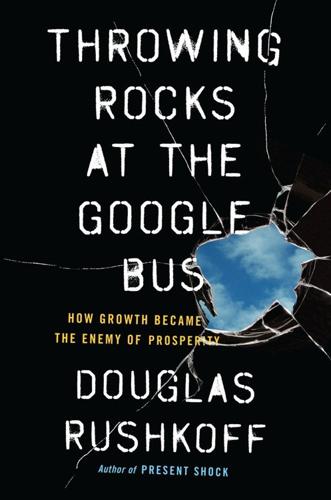
Throwing Rocks at the Google Bus: How Growth Became the Enemy of Prosperity
by
Douglas Rushkoff
Published 1 Mar 2016
Over the next decade, a basic playbook was established for how a startup gets to IPO or acquisition. Get an idea in college, find a programmer in the same dorm, build a prototype, write a business plan, present it at a conference, do an “angel round,” hire a couple more programmers to get to “minimum viable product,” raise a “Series A” round of investment, launch on the Web or App Store, achieve or manufacture huge numbers, write a new business plan with some scalable vision, raise a “Series B” round (if you absolutely need more funding), then get acquired or do an IPO. Terms such as angel round and Series A are now as common in programmer vocabulary as client and server.
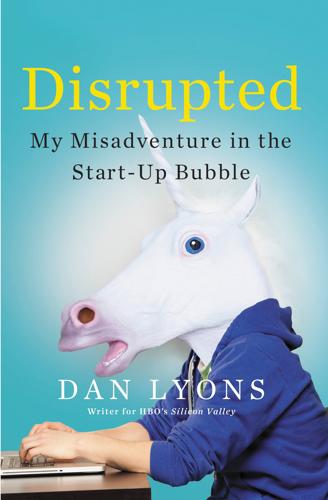
Disrupted: My Misadventure in the Start-Up Bubble
by
Dan Lyons
Published 4 Apr 2016
In Silicon Valley it was as if someone had flipped a switch. Suddenly there was a new business model: Grow fast, lose money, go public. That model persists today. It’s a simple racket. Venture capitalists pump millions of dollars into a company. The company spends some of that money coding up a “minimum viable product,” or MVP, a term coined by Eric Ries, author of The Lean Startup, which has become a bible for new tech companies, and then pumps enormous sums into acquiring customers—by hiring sales reps, marketers, and public relations people who can get publicity, put on flashy conferences, and generate hype—brand and buzz, as HubSpot calls it.

Frugal Innovation: How to Do Better With Less
by
Jaideep Prabhu Navi Radjou
Published 15 Feb 2015
He wants his company to be leaner, faster and better connected to customers, and to leverage digital and IT tools cleverly so that it can, for instance, close deals 50% more quickly and introduce new products 30% faster. To that end, in 2013 GE launched its FastWorks, a set of tools and principles that is helping GE marry scale and innovation with speed and agility. It has trained about 40,000 employees using workshops and online tools to build minimum viable products that quickly solve well-defined customer needs. Rather than over-engineering for the optimal solution and crafting complex business models, GE’s employees are learning to design and launch good-enough solutions, get quick customer feedback and then fine-tune them later as the teams learn more.

AI Superpowers: China, Silicon Valley, and the New World Order
by
Kai-Fu Lee
Published 14 Sep 2018
That methodology was first explicitly formulated in Silicon Valley and popularized by the 2011 book The Lean Startup. Core to its philosophy is the idea that founders don’t know what product the market needs—the market knows what product the market needs. Instead of spending years and millions of dollars secretly creating their idea of the perfect product, startups should move quickly to release a “minimum viable product” that can tease out market demand for different functions. Internet-based startups can then receive instant feedback based on customer activity, letting them immediately begin iterating on the product: discard unused features, tack on new functions, and constantly test the waters of market demand.

Bold: How to Go Big, Create Wealth and Impact the World
by
Peter H. Diamandis
and
Steven Kotler
Published 3 Feb 2015
The traditional methodology involved creating a product in secret, usually over a number of years, then bomb-dropping it on the public with one massive launch. Unfortunately, in a world of increasingly rapid change, spending a few years separated from one’s customers can mean bankruptcy. Enter agile design, an ideology that emphasizes fast feedback loops.9 Instead of launching a finely polished gem, companies now release a “minimum viable product,” then get immediate feedback from customers, incorporate that feedback into the next iteration, release a slightly upgraded version, and repeat. Instead of design cycles that last years, the agile process takes weeks and produces results directly in line with consumer expectations. This is rapid iteration.
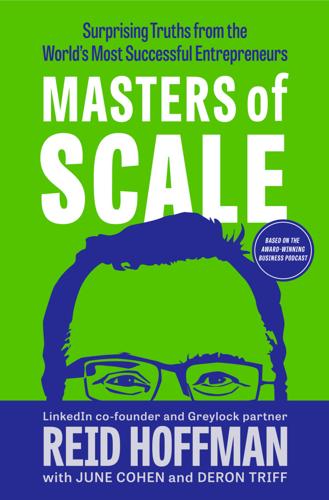
Masters of Scale: Surprising Truths From the World's Most Successful Entrepreneurs
by
Reid Hoffman
,
June Cohen
and
Deron Triff
Published 14 Oct 2021
The problem is that what you think you know—about what customers want, about what will work and won’t work in the real world—is often based on untested assumptions. The solution: Test those assumptions as quickly as possible. To do that, you must be willing to share your imperfect work-in-progress with the outside world—very early on and continuously thereafter—to get fast feedback. This is what Eric dubbed the “Minimum Viable Product,” or MVP: the most bare-bones, least-polished version of a product that can be used to test a hypothesis. This catchy terminology was new at the time, but as Eric readily acknowledges, his test-and-learn theory is derived from the scientific method, which developed over centuries. “We’re not breaking any really new ground here,” he says, “but just applying those lessons to business.”

Ghost Road: Beyond the Driverless Car
by
Anthony M. Townsend
Published 15 Jun 2020
Rough drafts are kept under lock and key. Programmers go to the opposite extreme. They’re prolific publishers of works in progress. “Pushing code,” they call it. So even as I wrote as writers do, in solitude, I coded like the coders. The first working prototype of my bus tracker—what they call the “minimum viable product” in Silicon Valley—could display only text and tables. It looked awful, and had all kinds of bugs. I pushed it out anyway and people started to fool around with its features and pore over my code. Following one suggestion, in the next version I added route maps with little markers for current bus locations.
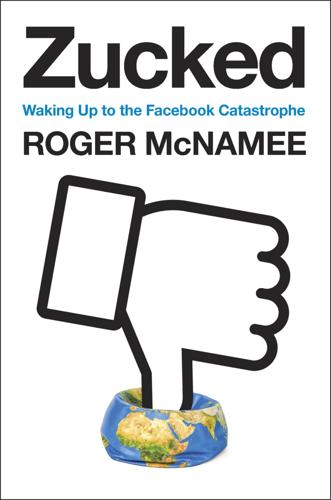
Zucked: Waking Up to the Facebook Catastrophe
by
Roger McNamee
Published 1 Jan 2019
Thus began the “lean startup” model. Without the huge expense and operational burden of creating a full tech infrastructure, new companies did not have to aim for perfection when they launched a new product, which had been Silicon Valley’s primary model to that point. For a fraction of the cost, they could create a minimum viable product (MVP), launch it, and see what happened. The lean startup model could work anywhere, but it worked best with cloud software, which could be updated as often as necessary. The first major industry created with the new model was social media, the Web 2.0 startups that were building networks of people rather than pages.
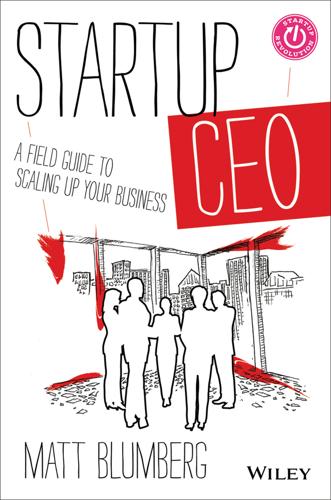
Startup CEO: A Field Guide to Scaling Up Your Business, + Website
by
Matt Blumberg
Published 13 Aug 2013
Following is a section-by-section guide to test what must be true in each of the nine boxes of Maurya’s Lean Canvas. Problem What problem are you trying to solve, and for whom? In Steve Blank’s “Customer Development” model, defining your audience and your product come concurrently as you build a minimum viable product (MVP). Your solution needs to address a specific problem or pain point that affects a well-defined audience. You don’t want to develop “a solution in search of a problem” (see sidebar). The assumption you’re trying to test in this box on the Lean Canvas is that this type of person has this exact problem.
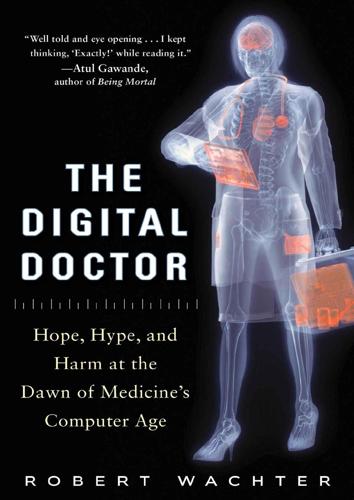
The Digital Doctor: Hope, Hype, and Harm at the Dawn of Medicine’s Computer Age
by
Robert Wachter
Published 7 Apr 2015
Gawande, “The Velluvial Matrix,” New Yorker, June 16, 2010. 232 In May 2014, activist investor David Einhorn Lopez and Penn, “Read David Einhorn’s Brutal Presentation.” Bush rebutted Einhorn in J. Wieczner, “Bush vs. Einhorn: How athenahealth’s CEO Met His Short-Seller,” Fortune, May 28, 2014. Chapter 25: Silicon Valley Meets Healthcare 235 “For thousands of years, guys like us” “Minimum Viable Product,” Silicon Valley (television series), HBO, 2014. 235 “Our investment convinced the IT world” Interview of David Blumenthal by the author, July 16, 2014. 236 “Health IT Sees First Billion Dollar Quarter” A. Gold, Politico Morning eHealth, July 17, 2014, available at http://www.politico.com/morningehealth/0714/morningehealth14675.html. 237 a … healthcare impresario named Matthew Holt Interview of Holt by the author, August 6, 2014. 237 He became interested in technology as a kid Interview of Nate Gross by the author, August 6, 2014. 238 One was Doximity www.doximity.com. 238 The other was Rock Health www.rockhealth.com. 240 The first is called Augmedix. www.augmedix.com.

Human Frontiers: The Future of Big Ideas in an Age of Small Thinking
by
Michael Bhaskar
Published 2 Nov 2021
Moreover this hyper-financialism seeps into government policy, cultural centres and independent research institutes, all of which are subjected to its methods and imperatives. It sets the institutional weather. Venture capital (VC) is no panacea. In fact it's often part of that same parasitic ecosystem.36 Timescales in biotech or materials science are often too long for venture capital funds to realise a return. Creating a minimum viable product is, unlike with software, capital and infrastructure intensive. Cleantech is a good example. In 2006 $1.75 billion was invested in cleantech. By 2011 that amount had boomed to $25 billion.37 But then at least half the money was lost in company failures. Venture capitalists shied away from such investments as they showed that ‘real world’ tech was more difficult and longer than the cycles of software and traditional VC investment.

The Nature of Software Development: Keep It Simple, Make It Valuable, Build It Piece by Piece
by
Ron Jeffries
Published 14 Aug 2015
It can open up space for new alliances and new competition, creating surface area between businesses that used to be in different industries—like light bulb manufacturers running server-side software on a retailer’s cloud computing infrastructure. Sometimes the competition isn’t another firm but yesterday’s version of the product, as in the startup realm. You launch your minimum viable product, hoping to learn fast, release fast, and find that crucial product-market fit before the cash runs out. In all these cases, we need adaptation. That is the theme we will explore in this chapter. Our path touches people, processes, tools, and designs. And as you might expect, these interrelate.

Radical Technologies: The Design of Everyday Life
by
Adam Greenfield
Published 29 May 2017
Numbers like these are clearly a very strong incentive for talented developers to abandon the drudgery and anonymity of academic or corporate toil for chancier work in the startup sector, and so that is just what many of them now do. Surprisingly few of these entrepreneurially inclined developers actually intend to build and grow a sustainable business themselves, though. They are explicit about their intention to develop instead a “minimum viable product” as a technology or concept demonstrator, and more or less immediately thereafter flip their company to a deep-pocketed suitor. One of the upshots of this is that there’s a far larger, younger and more diverse cohort imagining and developing emerging technologies than ever before in history—and precisely because of means like GitHub, 3D printing and cheap Shenzhen production, virtually everyone among that cohort is able to generate prototypes of a sophistication that would have taxed the capabilities of the largest and wealthiest corporations of just a few years ago.
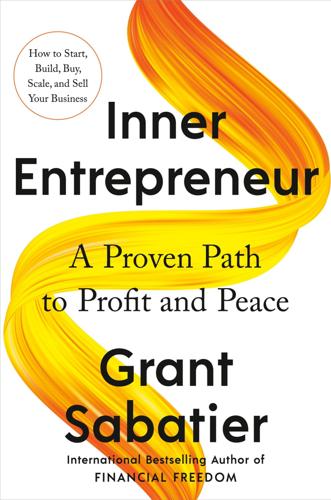
Inner Entrepreneur: A Proven Path to Profit and Peace
by
Grant Sabatier
Published 10 Mar 2025
A comprehensive understanding of your service and who benefits from it is essential. Understand Your Competitors: Analyze your competitors, pricing models, and different product types to identify opportunities and potential challenges. Create a Prototype: Develop a prototype or minimum viable product (MVP) that showcases your product’s key features and benefits. This prototype is a tangible representation of what your productized service will offer. Standardize Processes: Establish clear workflows and procedures to ensure consistency and efficiency through your SOPs. Standardizing processes is crucial for scalability and maintaining high quality and replicability.
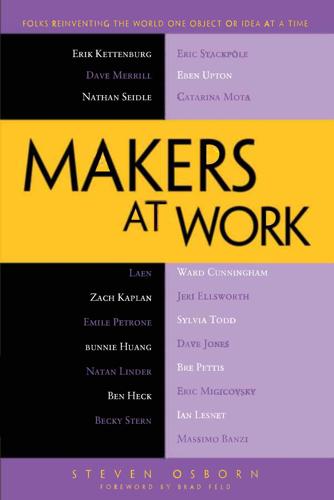
Makers at Work: Folks Reinventing the World One Object or Idea at a Time
by
Steven Osborn
Published 17 Sep 2013
Now I probably get about one of those a week. Mostly I get people who have an idea and haven’t tried to build anything yet. I think often we get held up on, “I have this idea. How do I build that product?” And, really, the thought process needs to be, “I have this idea. How do I build—to use a startup term—how do I build the minimum viable product?” But a better question is, “What can I tape together, stick together to do what I want this product to do, even if it doesn’t work right, even if it costs five times as much?” Personally, I always get held up on things like, “I have to design the perfect circuit board.” Instead, I should be building it on a breadboard first.
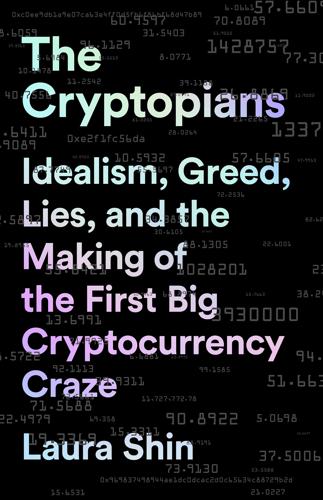
The Cryptopians: Idealism, Greed, Lies, and the Making of the First Big Cryptocurrency Craze
by
Laura Shin
Published 22 Feb 2022
And an organization with two missions was like a ship heading toward a cliff wall—if one captain wants to steer left and the other right, it will crash. To put it plainly, Charles’s vision for Ethereum did not seem compatible with Vitalik’s. They didn’t have money for both. By Mathias’s budget calculations, a minimum viable product would cost more than $15 million to develop. They had no idea how much they would raise, and software projects almost always have cost overruns. The current budget, however, allocated only about 60 percent to development and the other 40 percent to what they felt were Charles’s “vanity” projects, like an incubator.
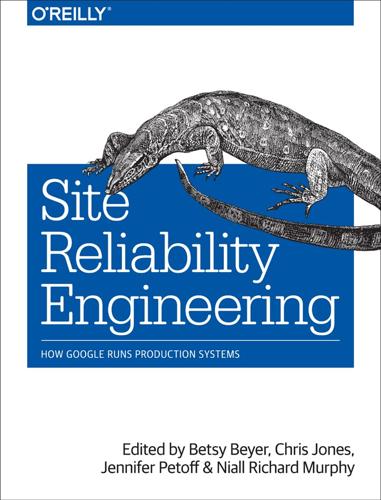
Site Reliability Engineering: How Google Runs Production Systems
by
Betsy Beyer
,
Chris Jones
,
Jennifer Petoff
and
Niall Richard Murphy
Published 15 Apr 2016
SREs are busy, and if your solution is too difficult or confusing, they will write their own solution. Set expectations When an engineer with years of familiarity in a problem space begins designing a product, it’s easy to imagine a utopian end-state for the work. However, it’s important to differentiate aspirational goals of the product from minimum success criteria (or Minimum Viable Product). Projects can lose credibility and fail by promising too much, too soon; at the same time, if a product doesn’t promise a sufficiently rewarding outcome, it can be difficult to overcome the necessary activation energy to convince internal teams to try something new. Demonstrating steady, incremental progress via small releases raises user confidence in your team’s ability to deliver useful software.
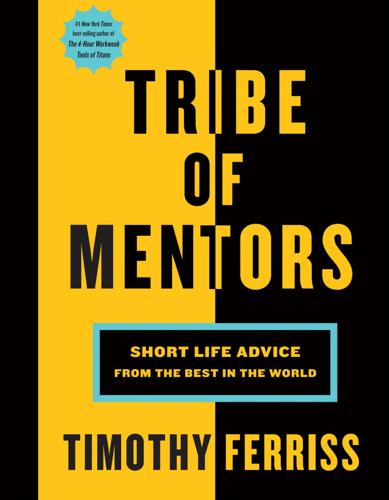
Tribe of Mentors: Short Life Advice From the Best in the World
by
Timothy Ferriss
Published 14 Jun 2017
After that experience (and being part of similar software project failures earlier) I decided to make a project that did only one thing and did it well, with the goal instead of succeeding being to not fail. Anything is better than never shipping. The result was BitTorrent. These days the term of art is “minimum viable product,” which is an overly clinical term for the ethos of forgetting about succeeding massively and instead focusing all your efforts on desperately trying to not fail. Abject failure is the result of most software development projects. If you could have a gigantic billboard anywhere with anything on it, what would it say?

Seeking SRE: Conversations About Running Production Systems at Scale
by
David N. Blank-Edelman
Published 16 Sep 2018
Many of the considerations involved in an open source adoption are resolved by a third-party solution, and they are on the hook for maintaining that operational stability. Neither adopt nor buy solutions invalidate the need for documentation, maintenance, monitoring, logging, tooling, automation, and all other aspects that define a service. The difference between a PoC, a functional prototype, a Minimum Viable Product (MVP), and a first-class service with high operational integrity resembles the distance between the sun and each planet. Toward the end of this chapter, we address some of the critical facets that define a first-class service. However, now that we’re at least considering the difference between build, buy, and adopt, we can address some additional points of consideration.
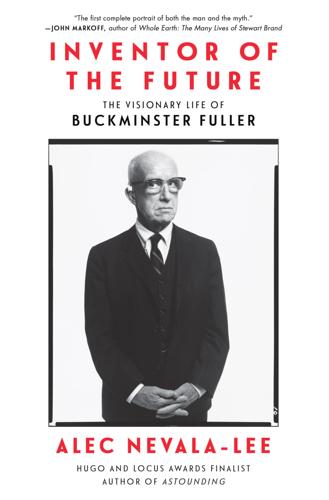
Inventor of the Future: The Visionary Life of Buckminster Fuller
by
Alec Nevala-Lee
Published 1 Aug 2022
At twenty feet across, it was a handmade prototype for the production model, which would be built from the top down using a temporary mast. Portholes were set into rounded sides that were corrugated for stiffness, and the bin’s conical top was replaced by a roof of curved panels and a ventilator. In contrast to the futuristic Dymaxion House, the result was a kind of minimum viable product—the simplest structure that met the necessary requirements. The flooring was unfastened, and Fuller proposed using straw or newspaper for insulation. It had no bathroom, although an optional second cylinder was added with a kitchen and bath, and a deal was struck with Sears, Roebuck to provide basic furnishings, including a kerosene icebox and stove.